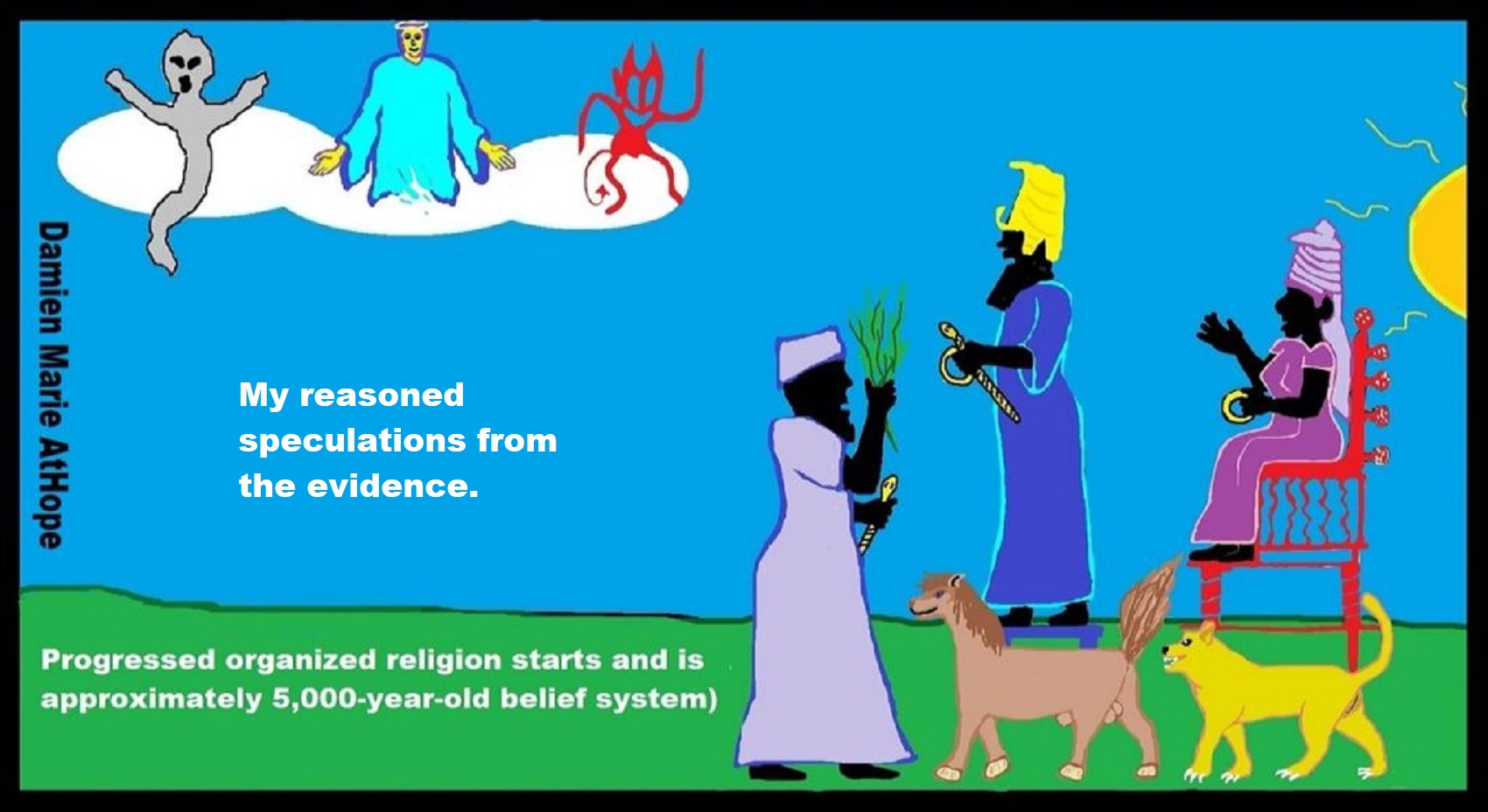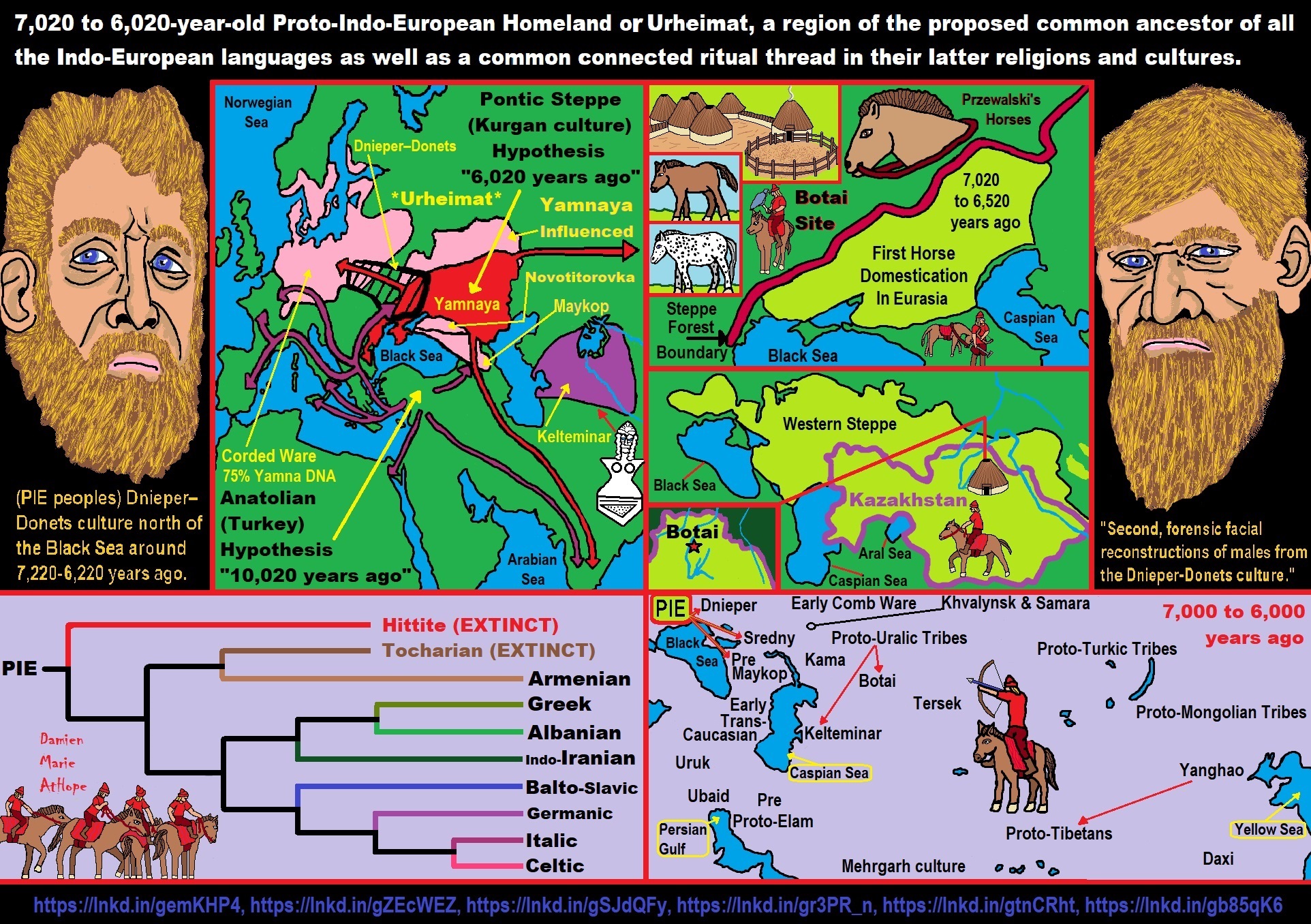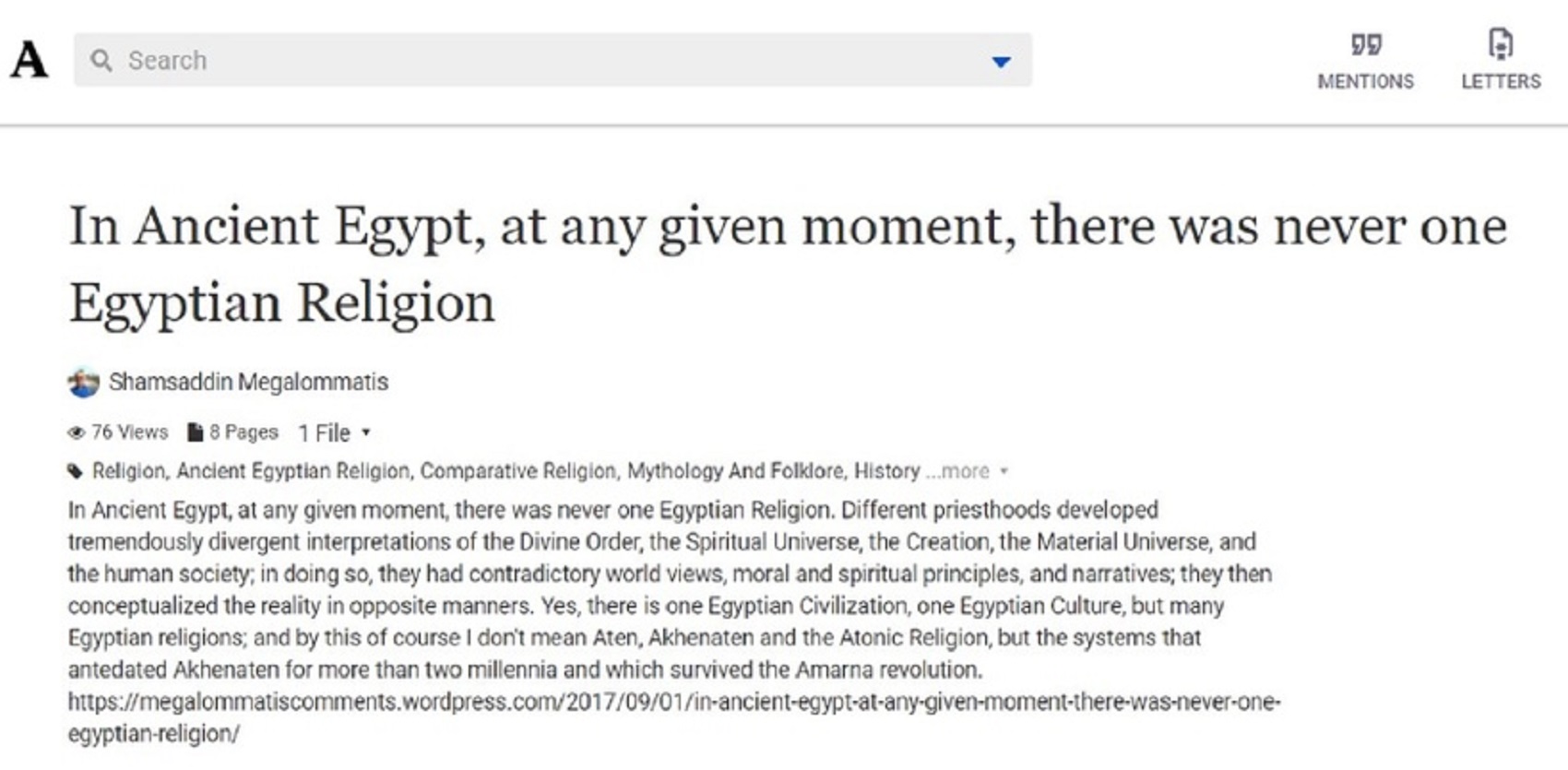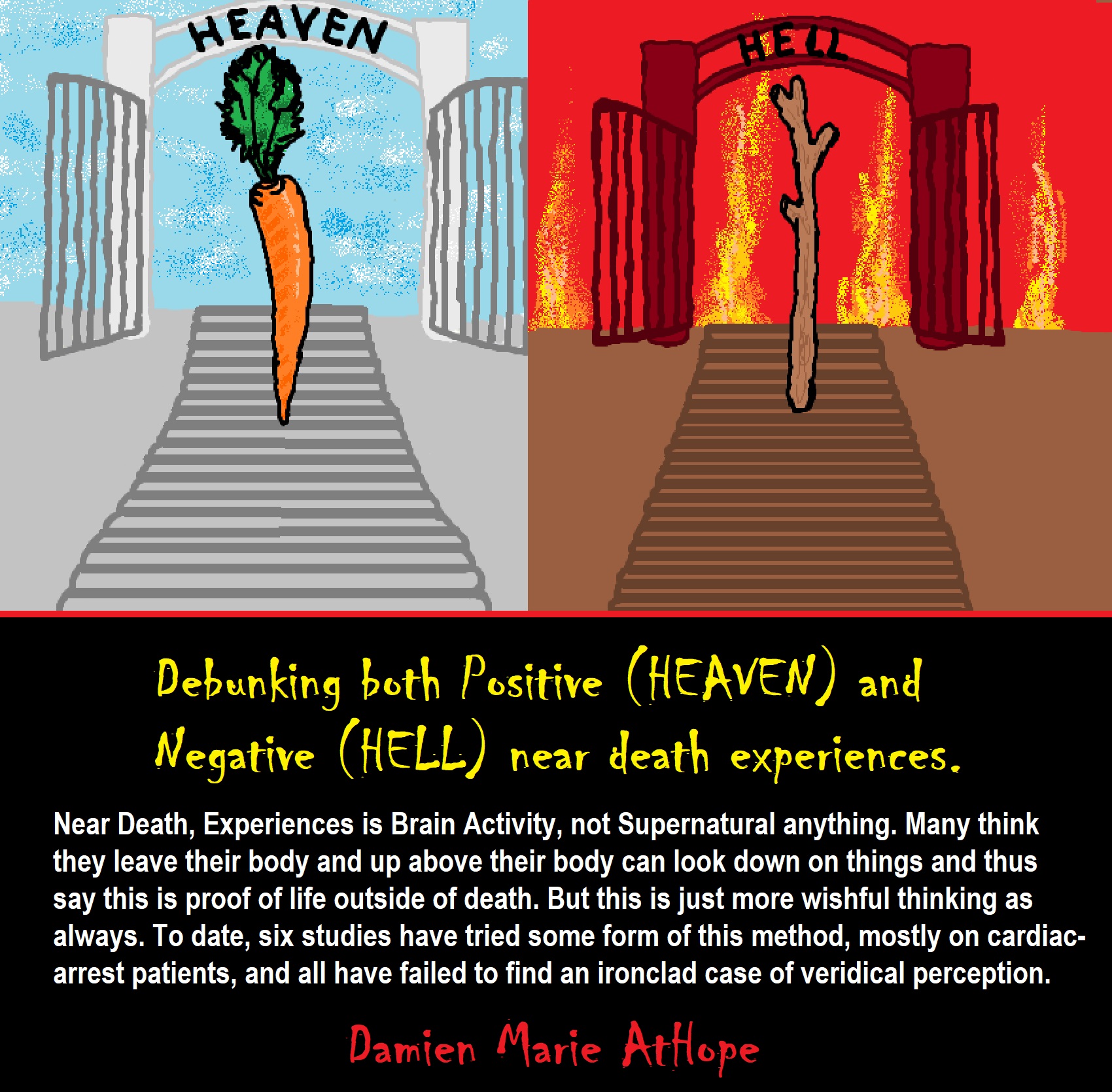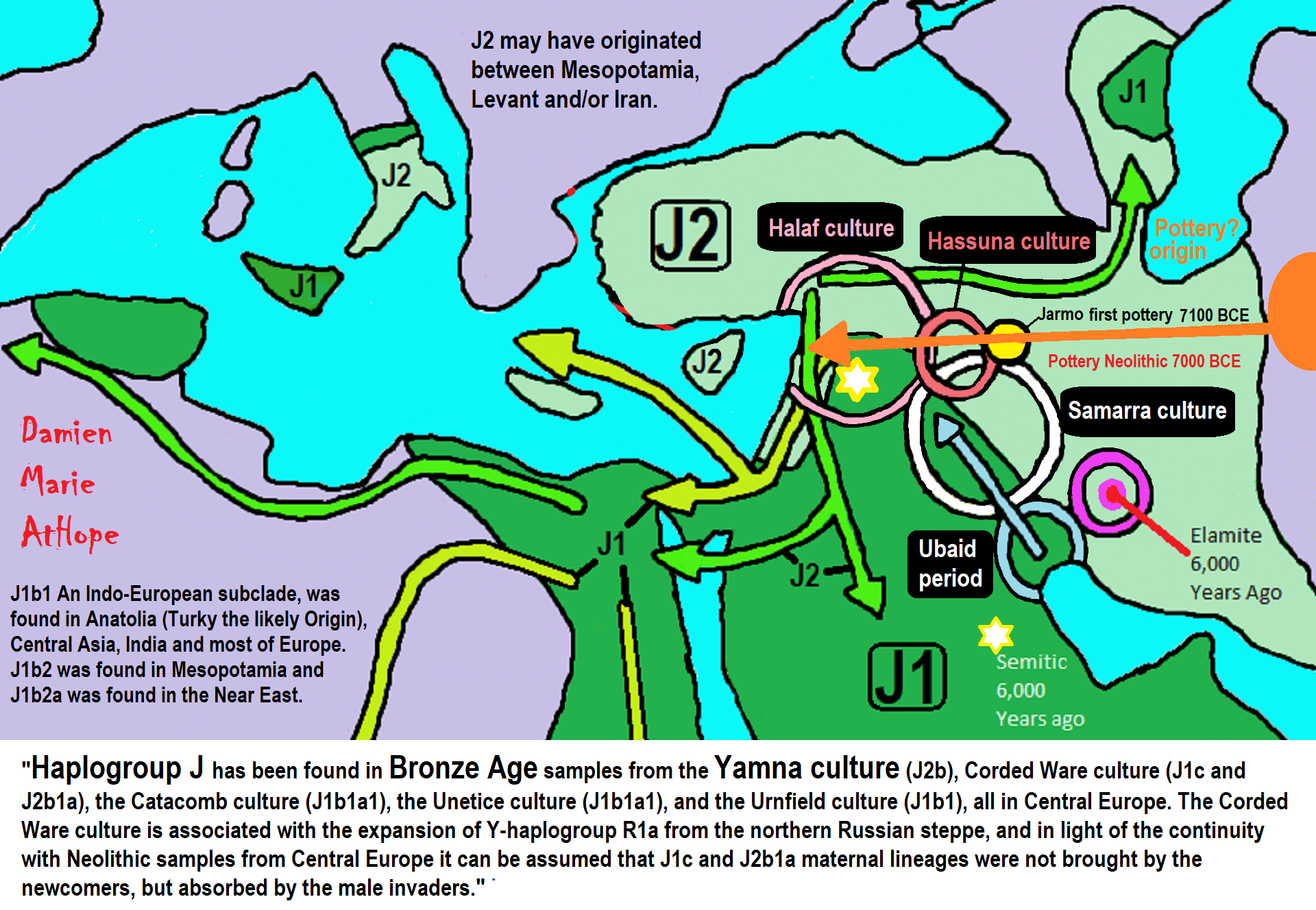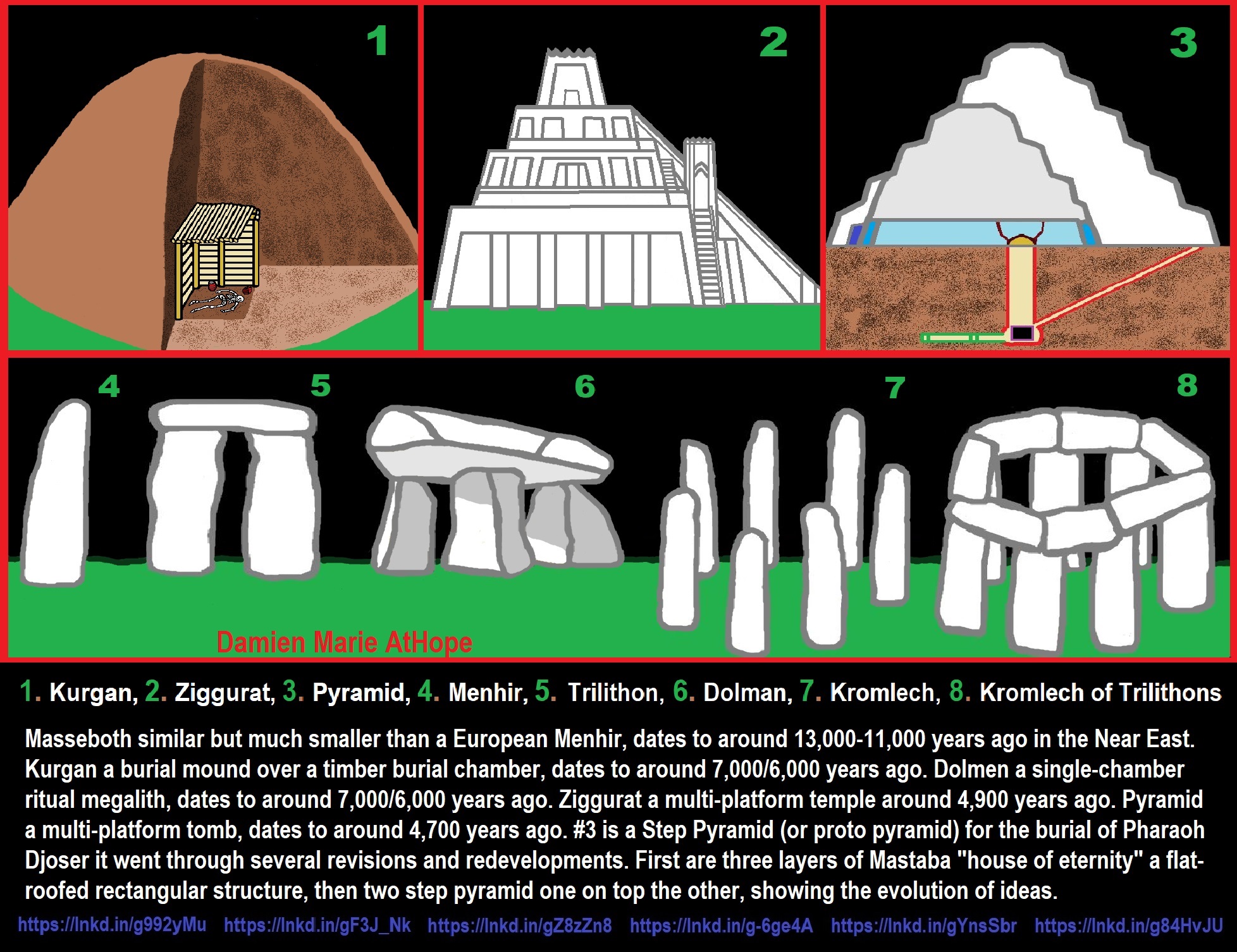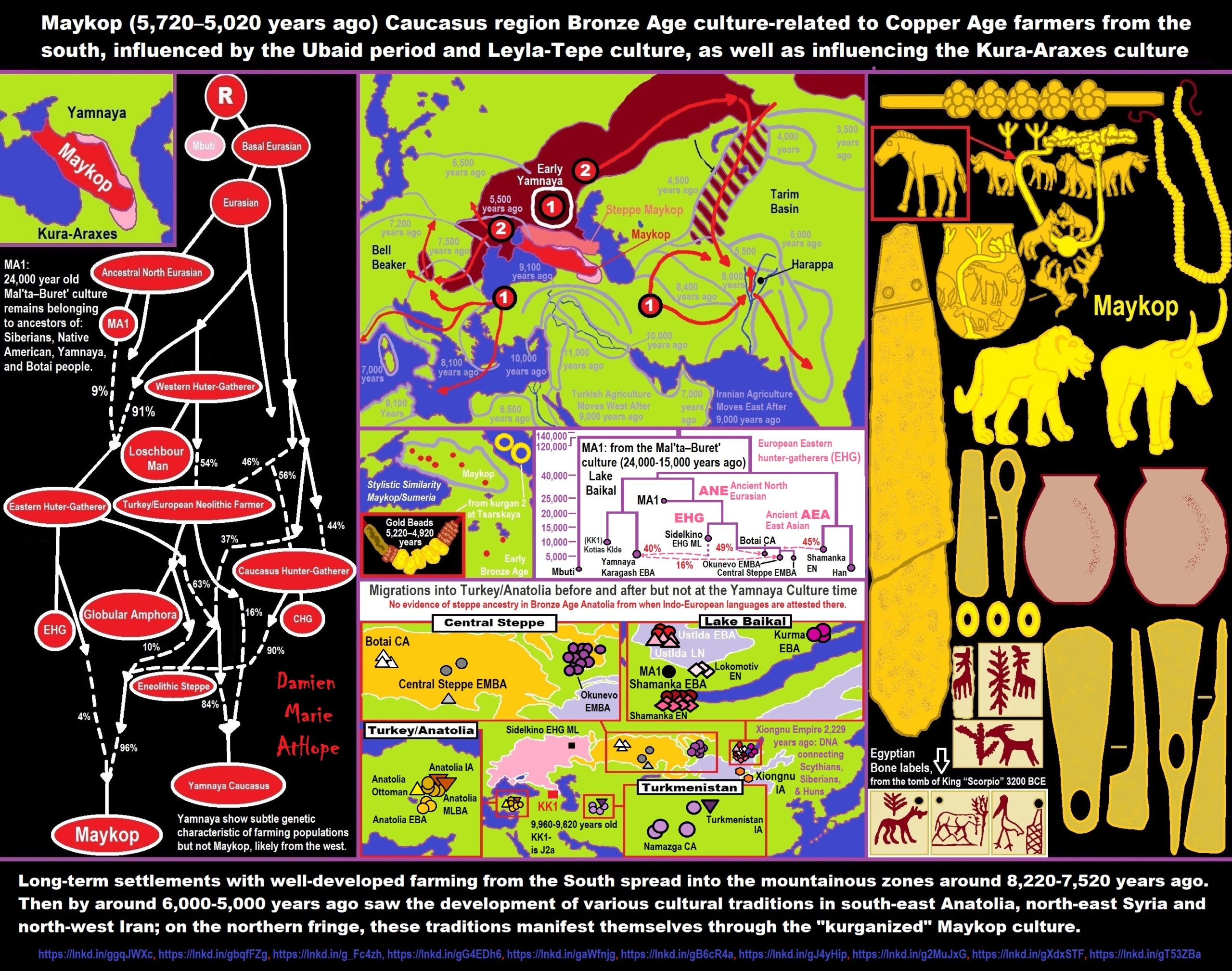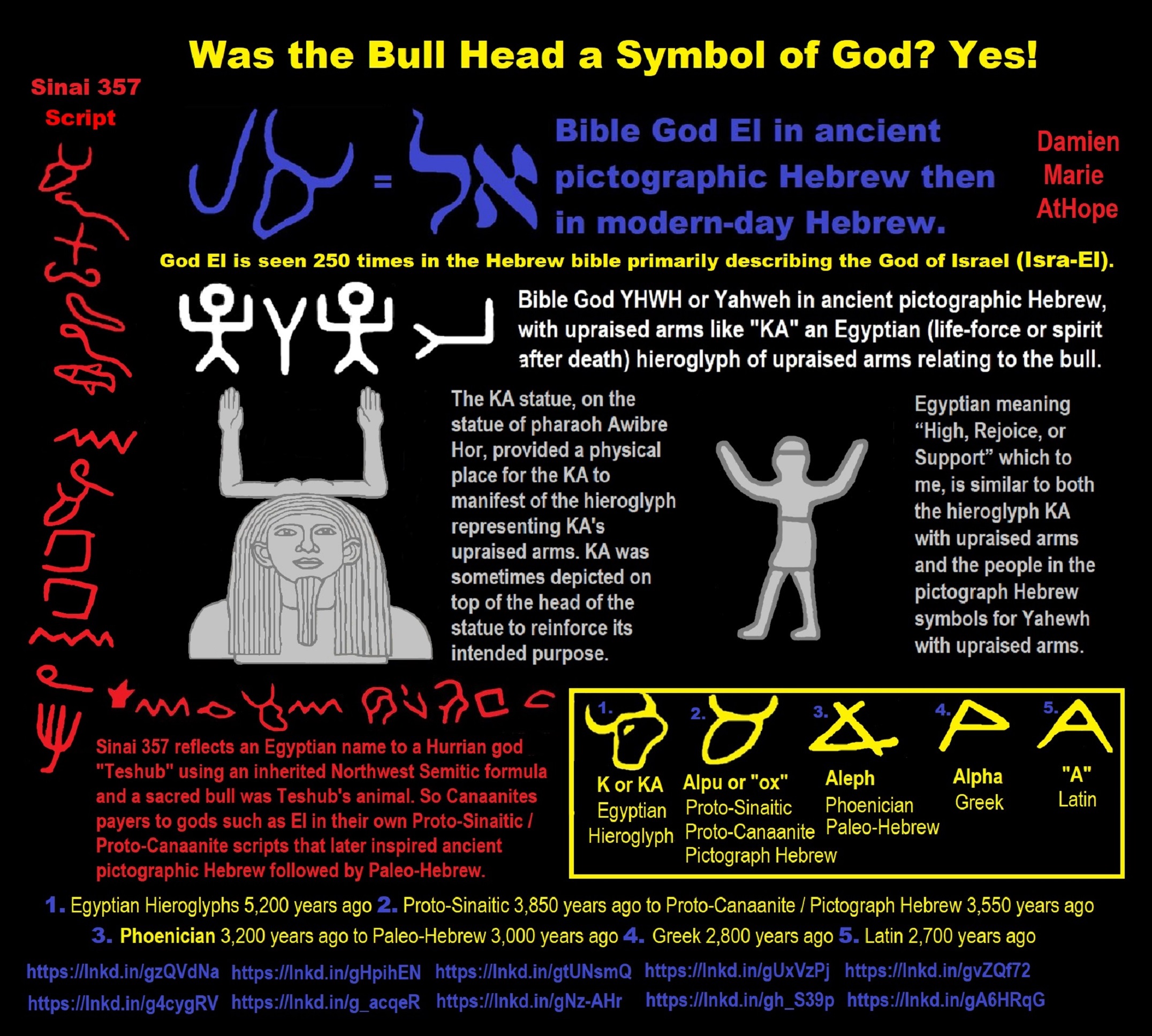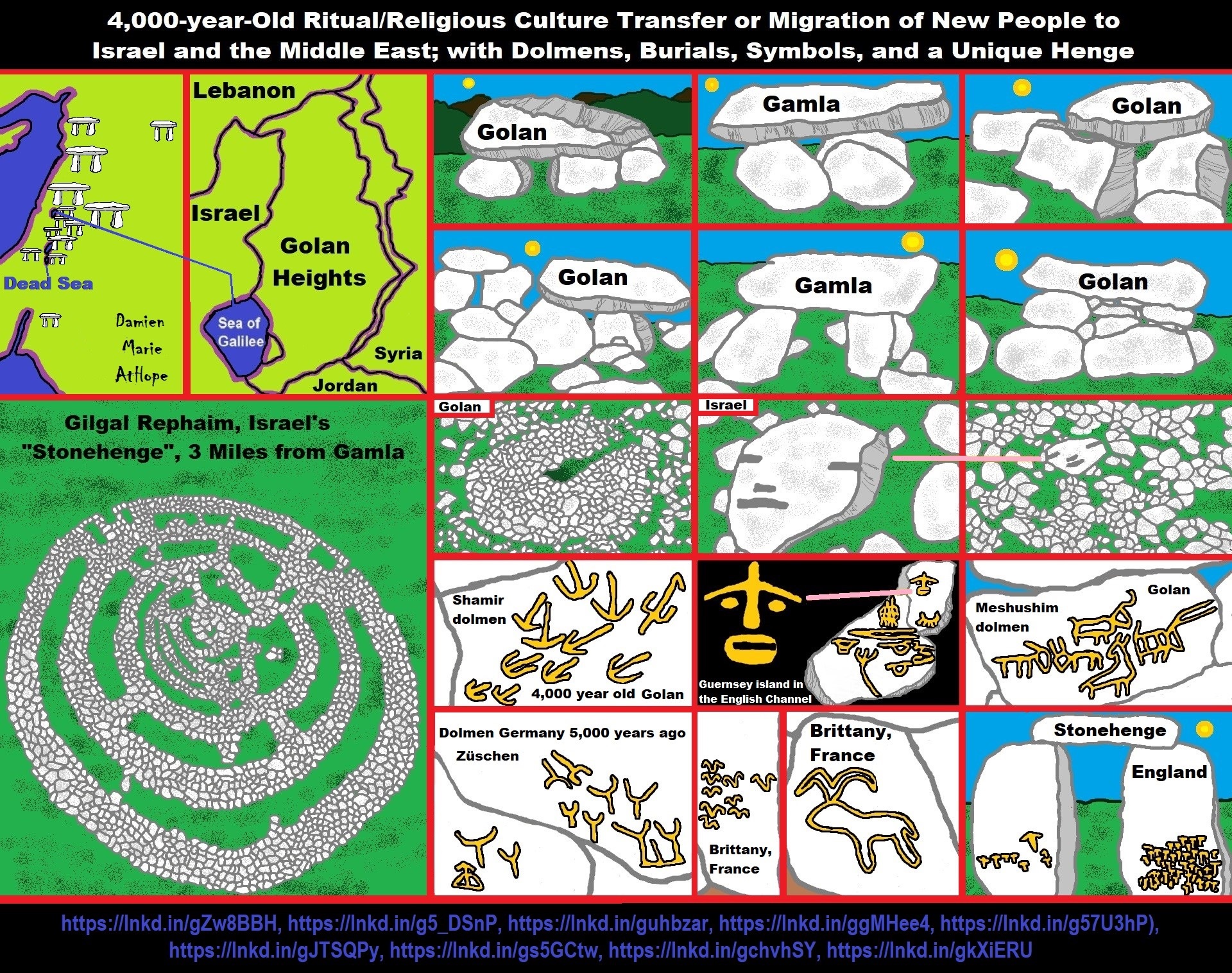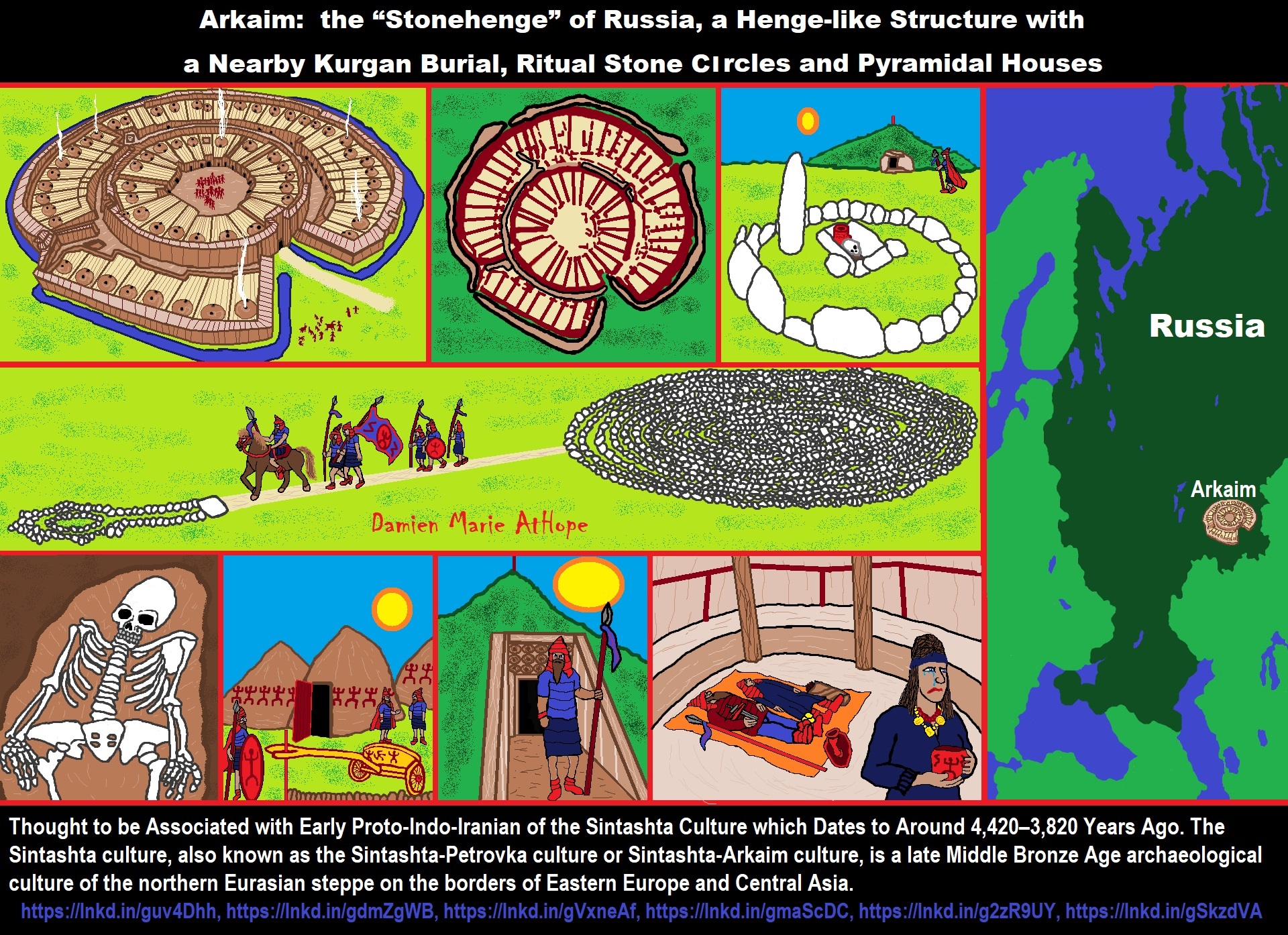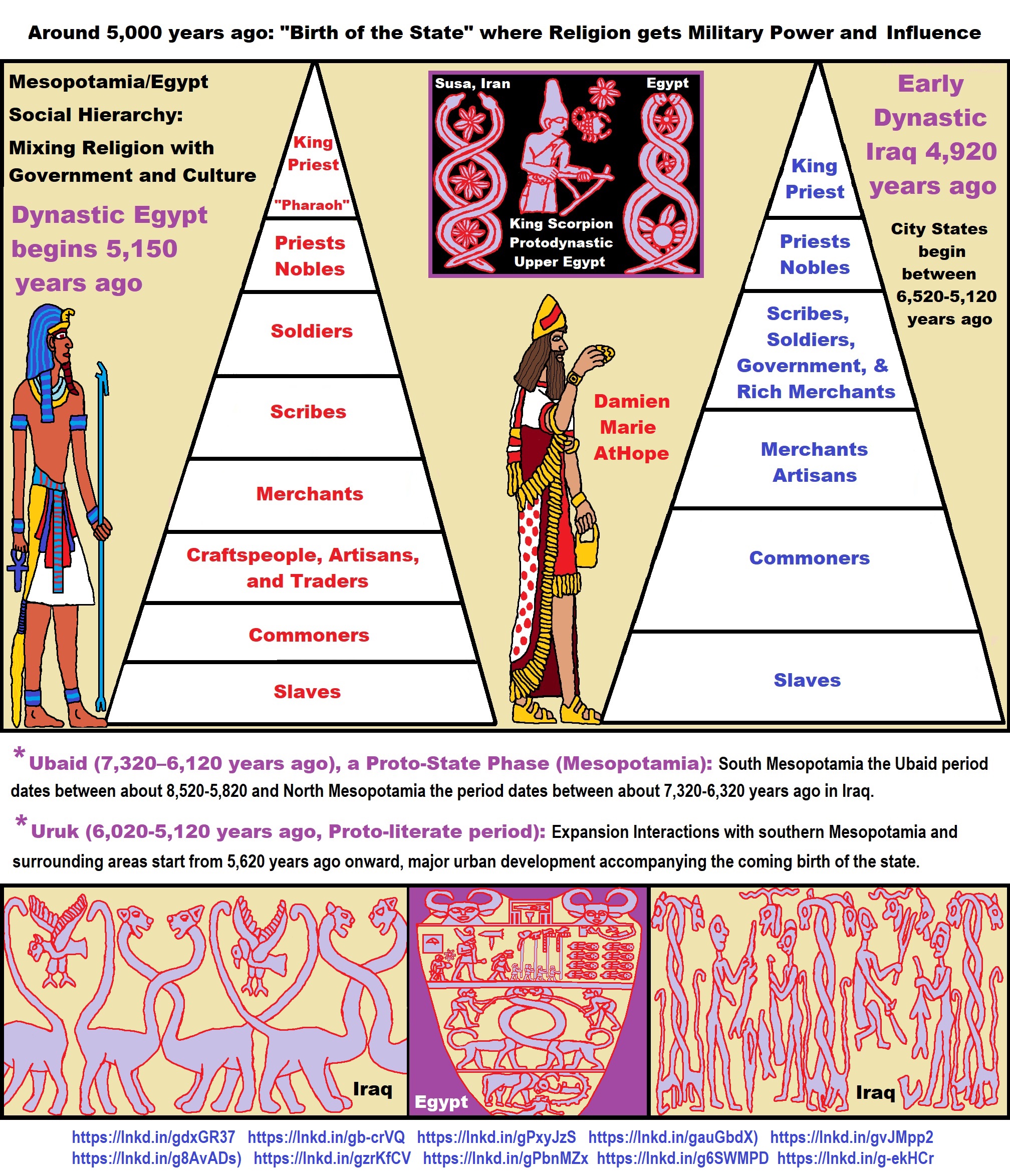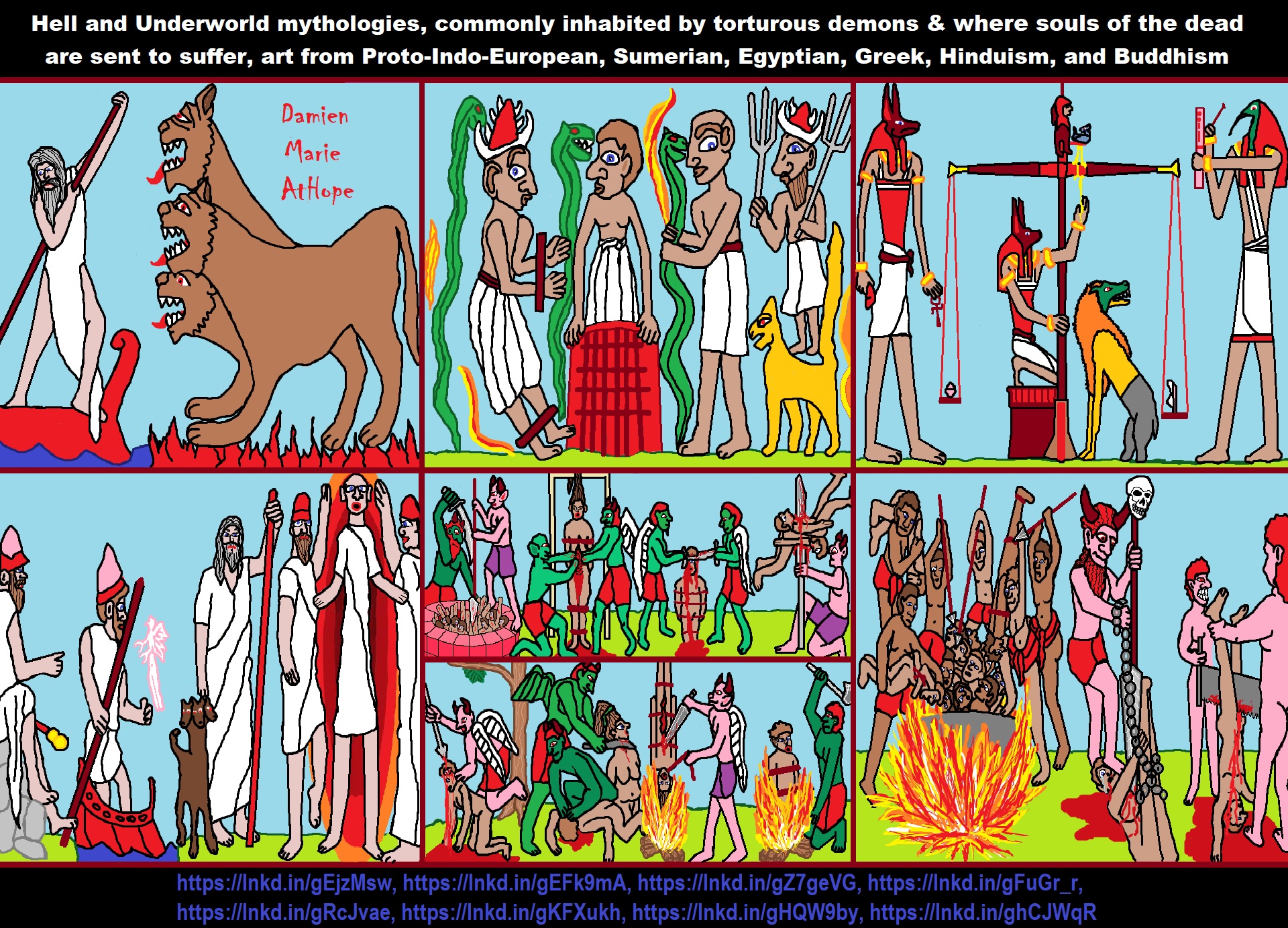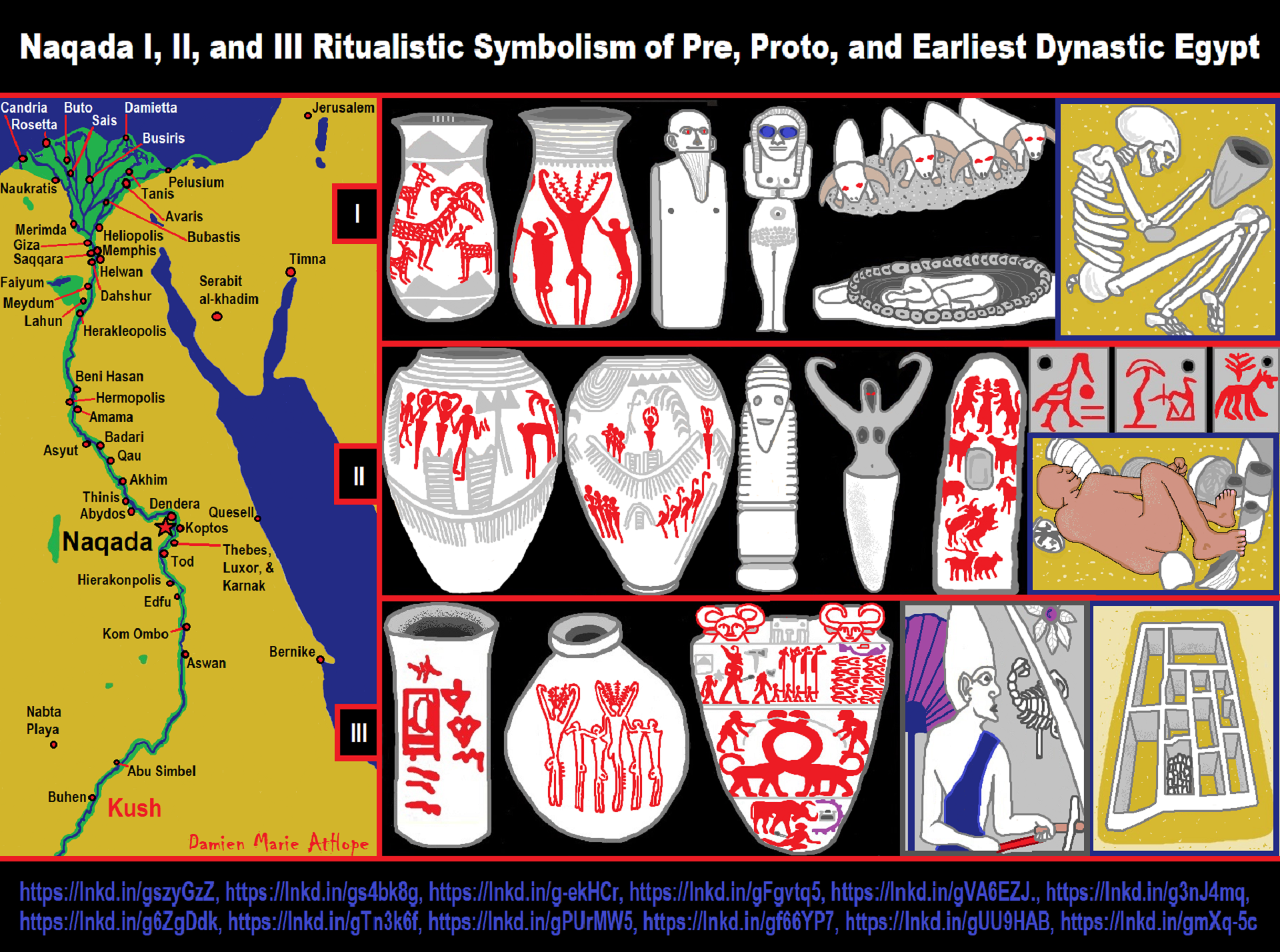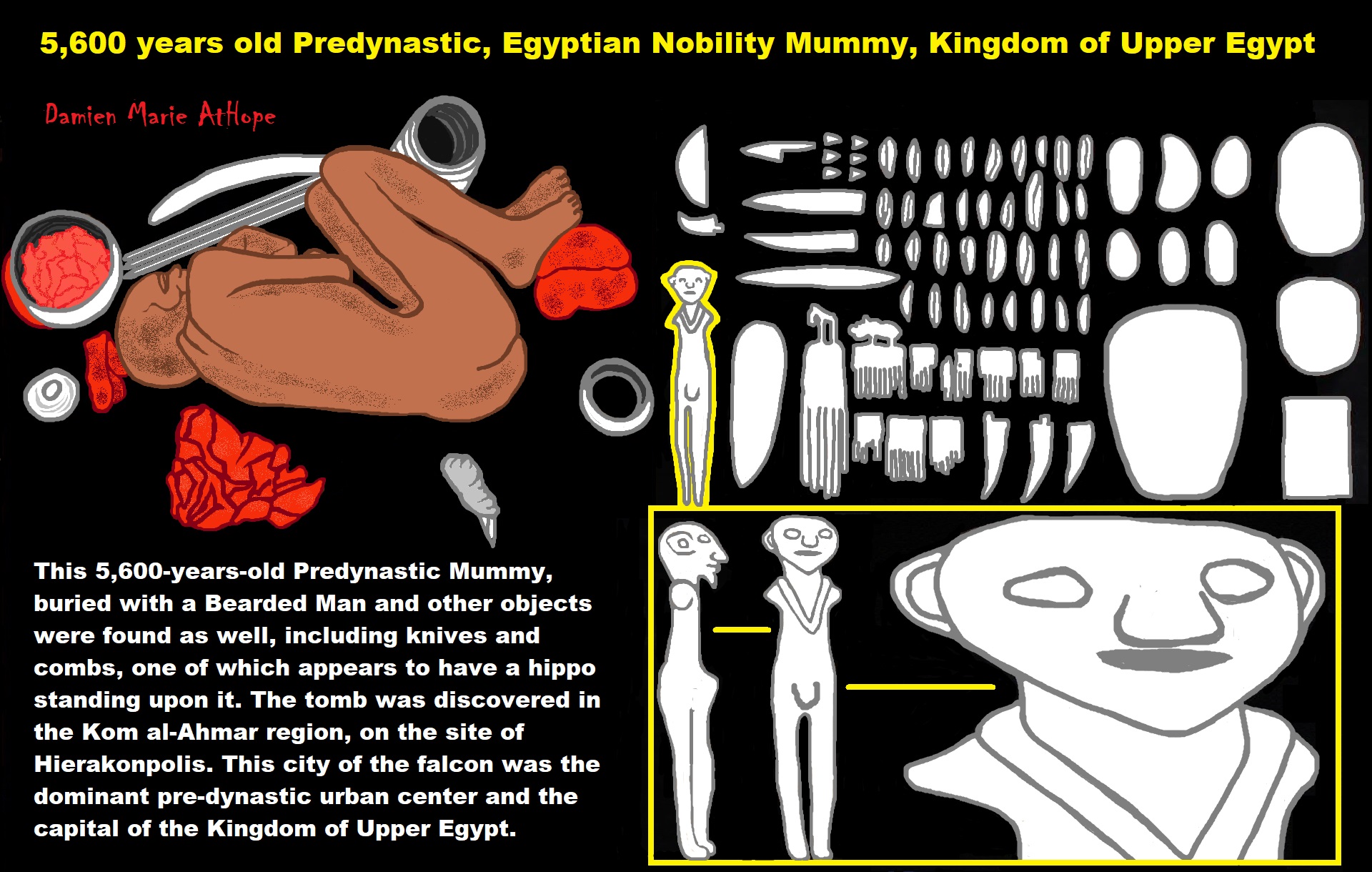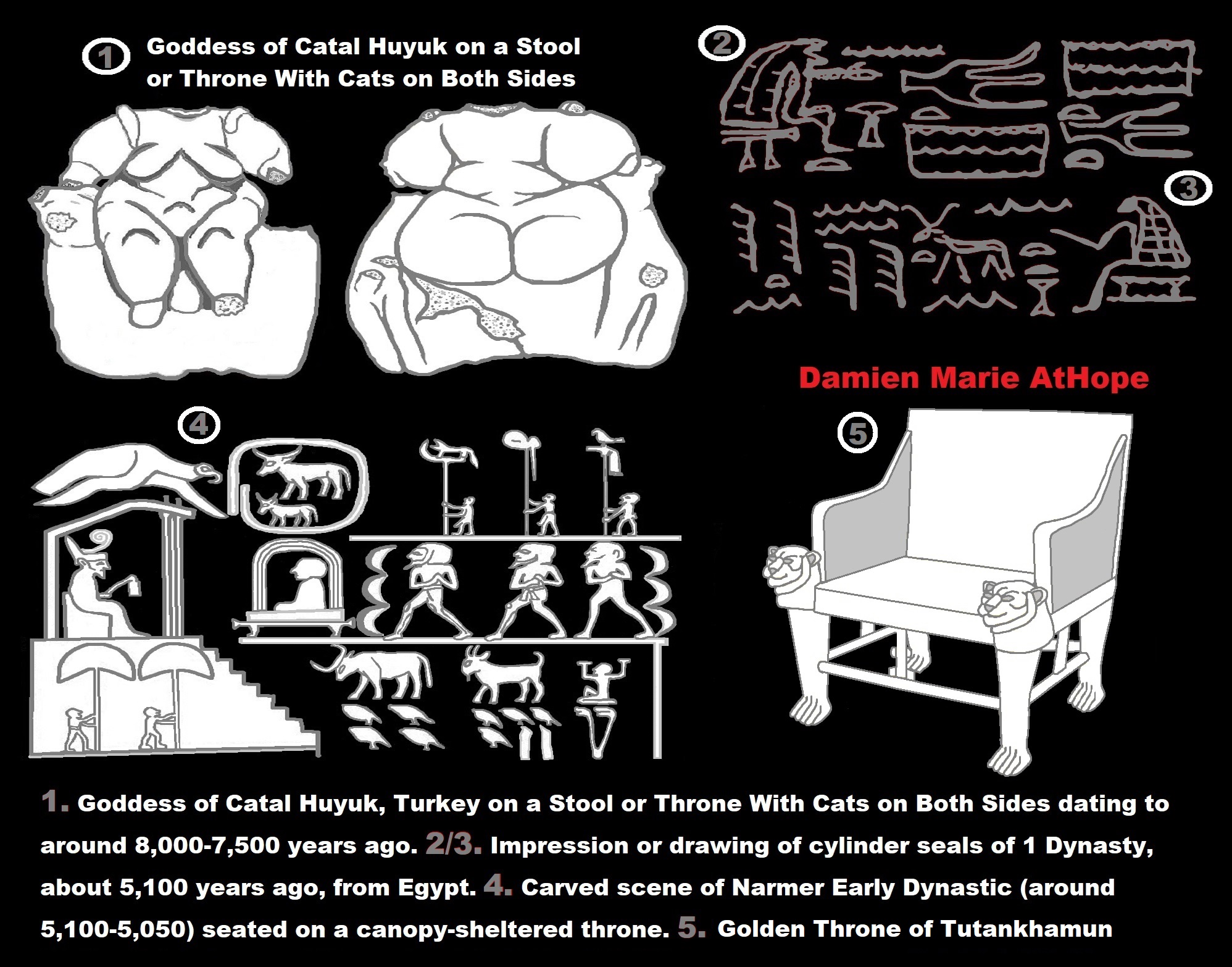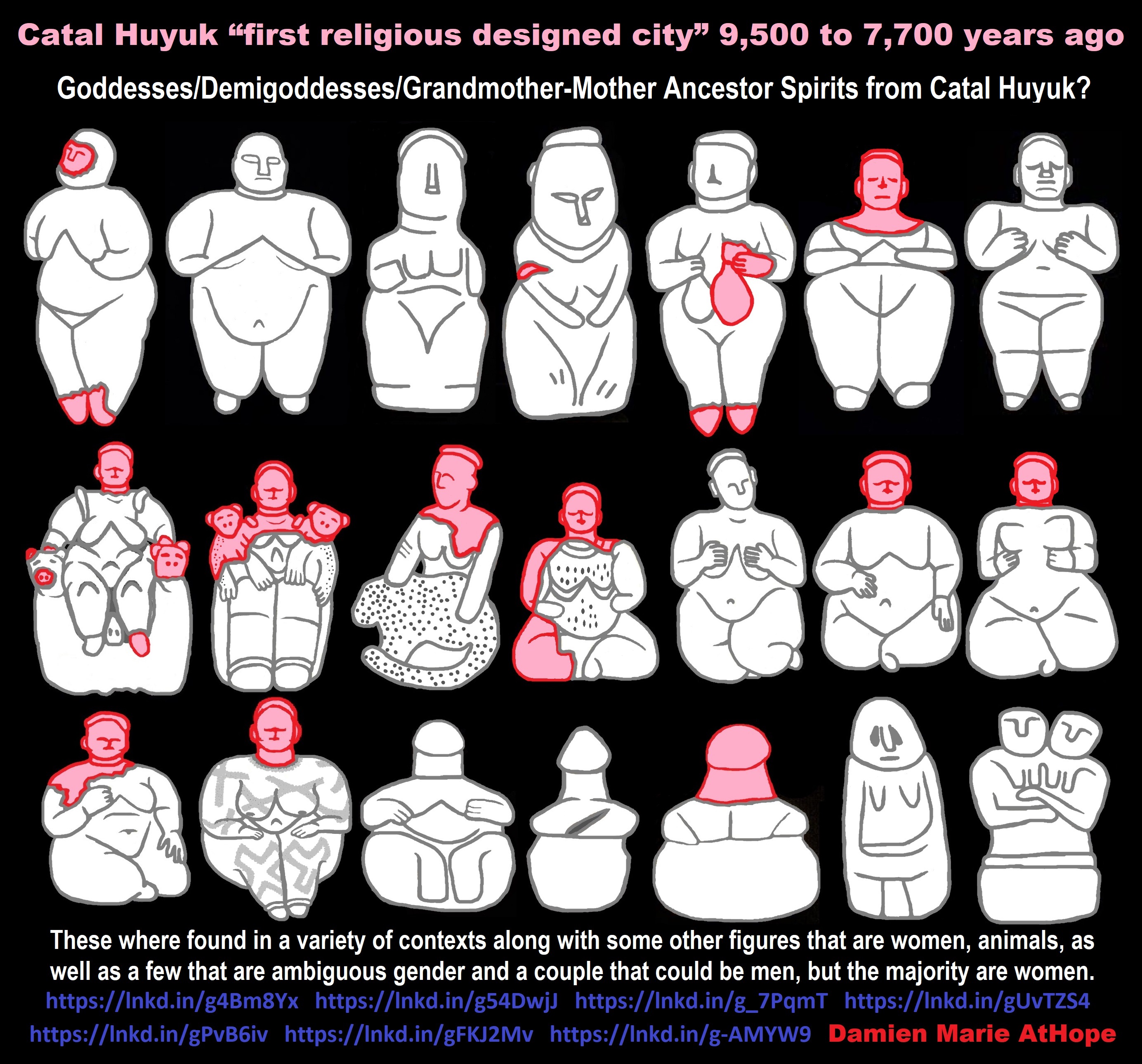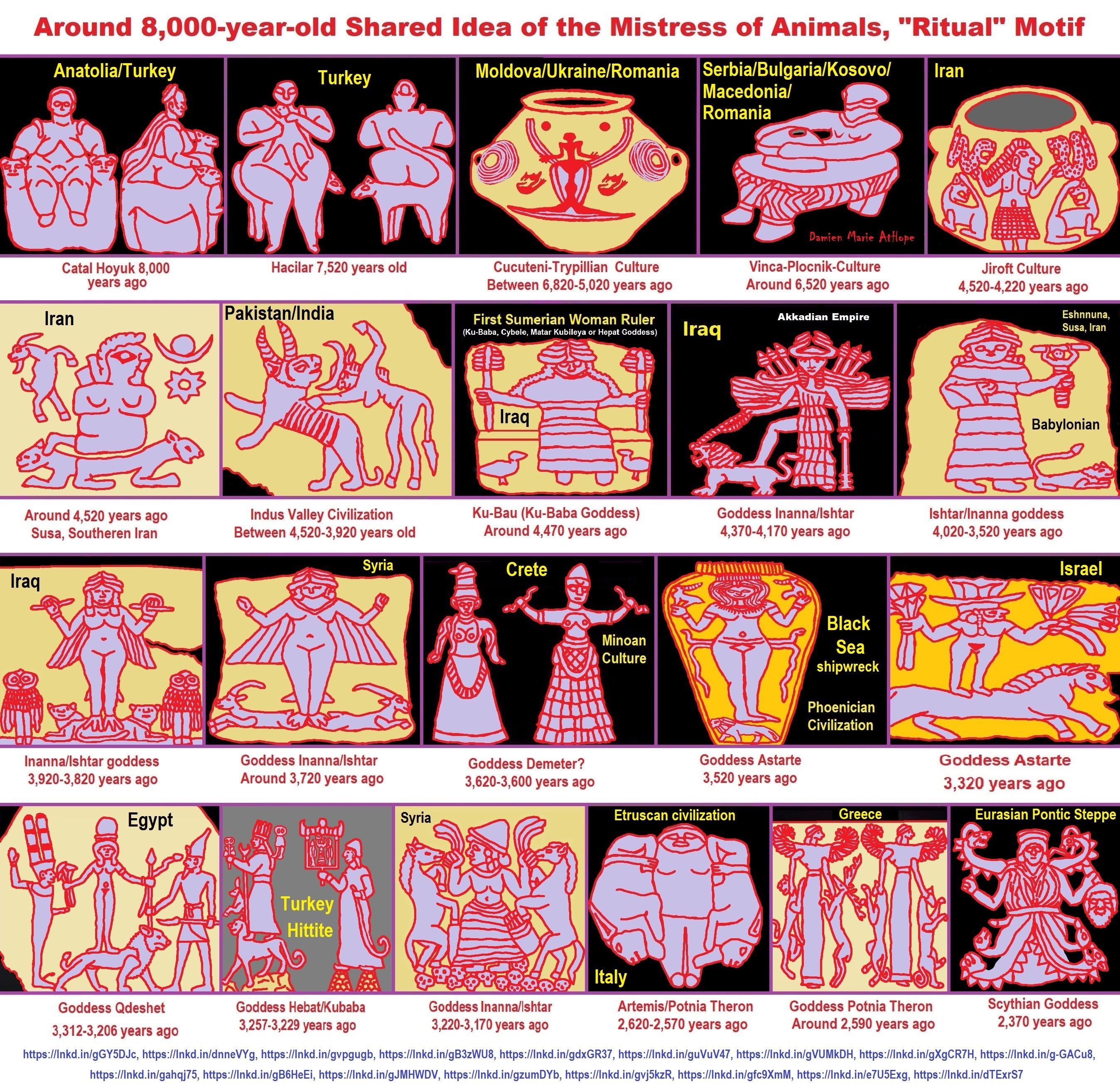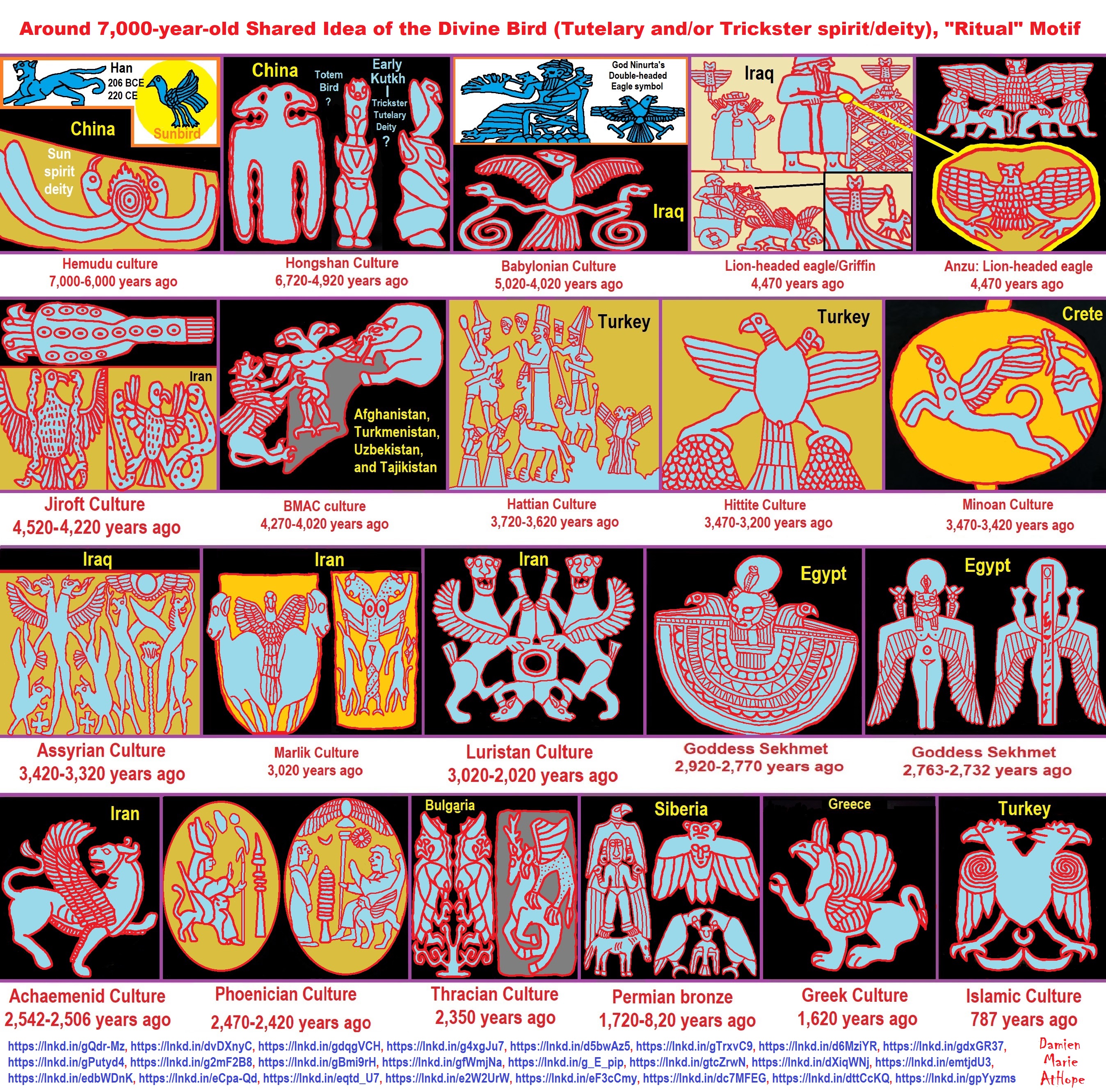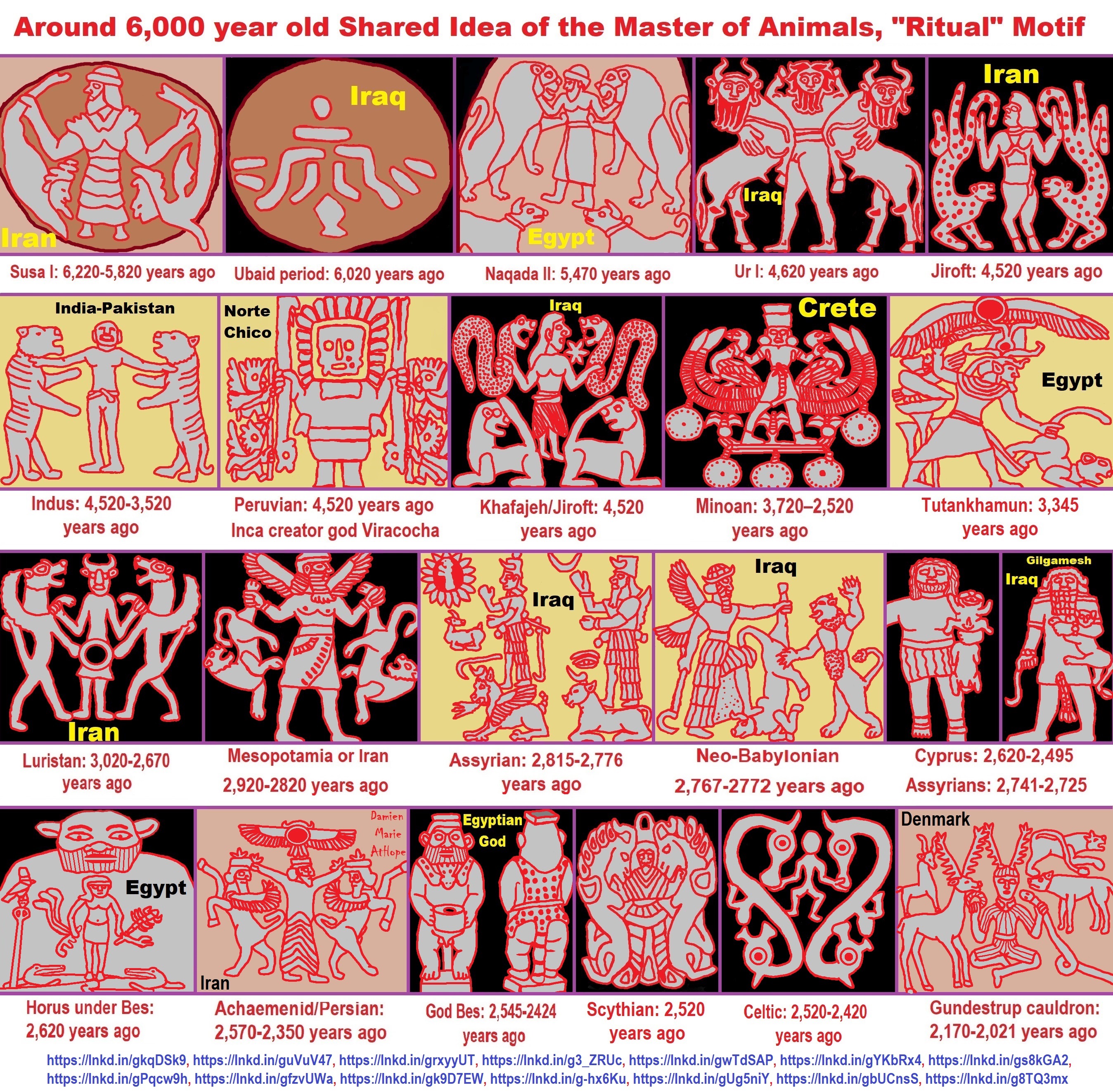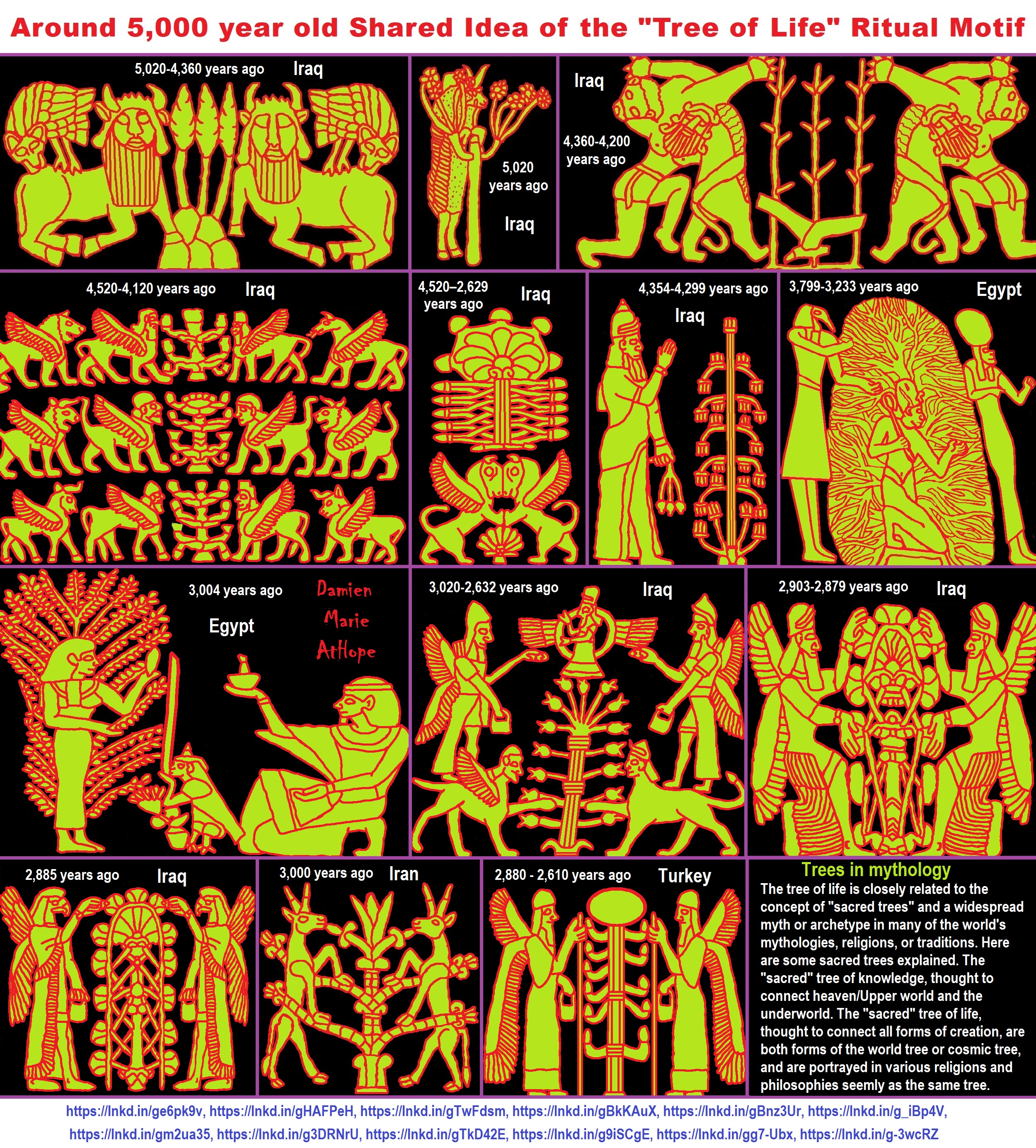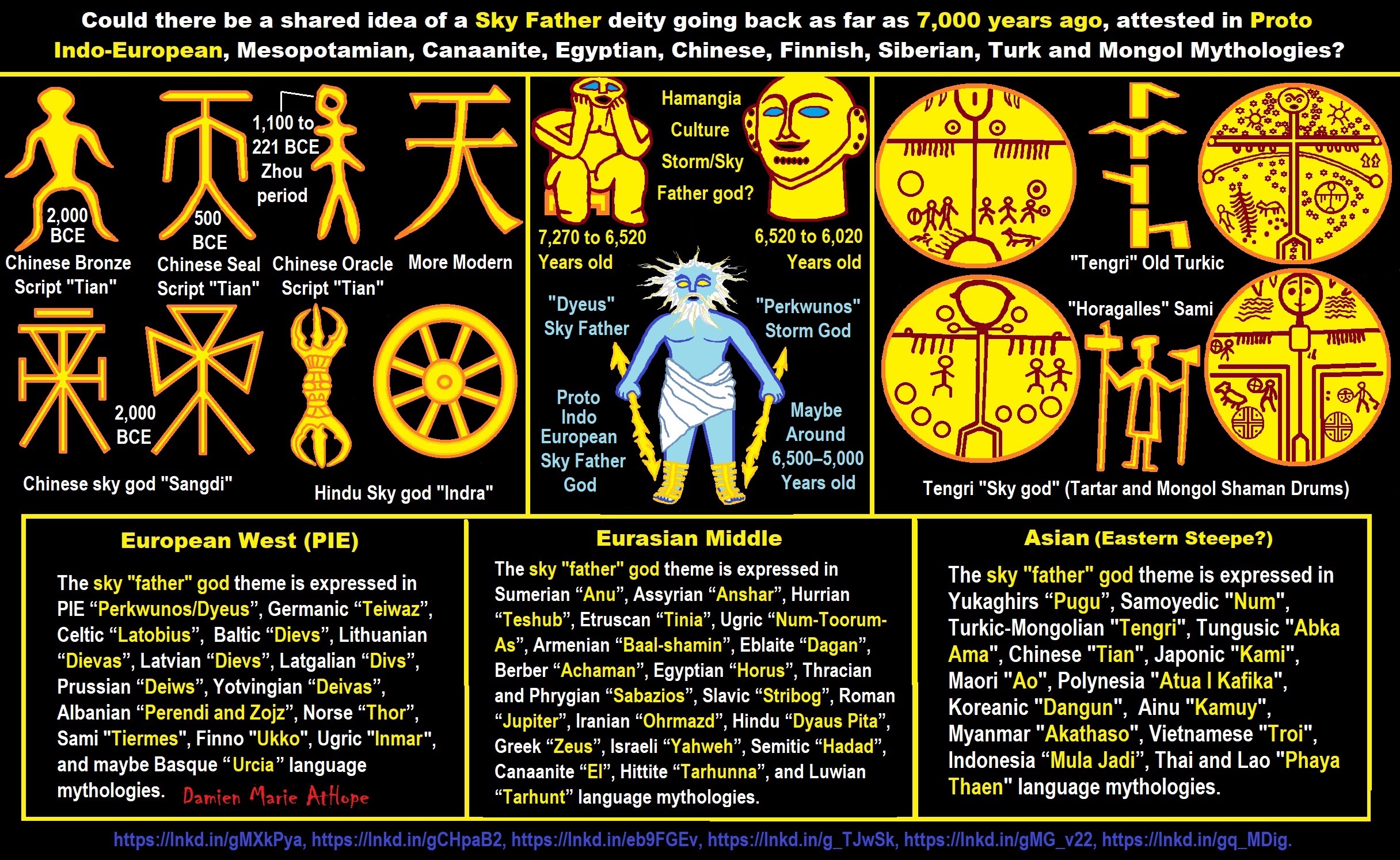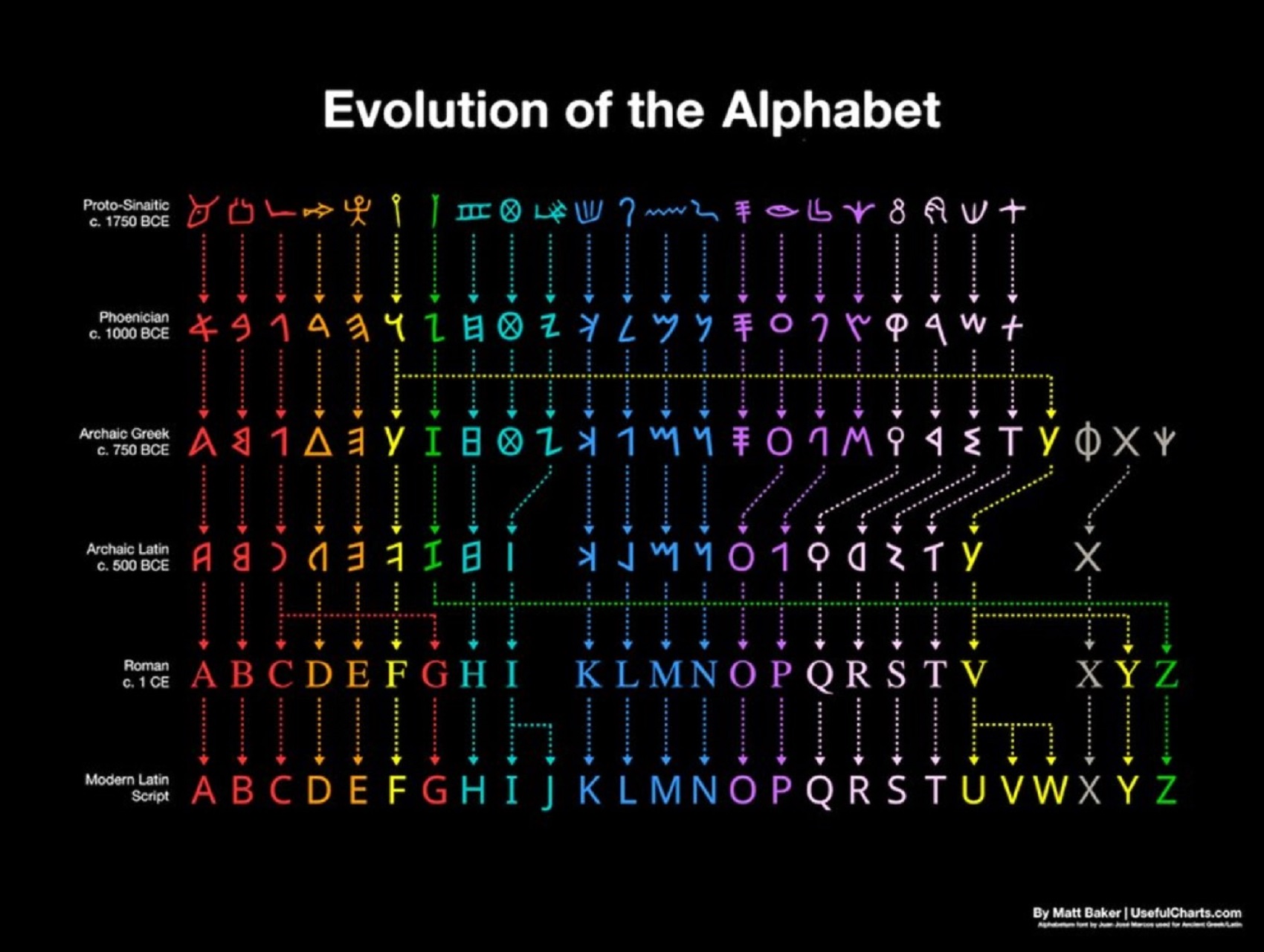
Paganism 12,000-4,000 years old
12,000-7,000 years old: related to (Pre-Capitalism)
7,000-5,000 years old: related to (Capitalism) (World War 0) Elite and their slaves!
5,000 years old: related to (Kings and the Rise of the State)
4,000 years old: related to (First Moralistic gods, then the Origin time of Monotheism)
Lineage: The majority of the individuals, 27 in total, were descended from four women who all had children with the same man and lived around 3700 to 3600 BC. Researchers said the findings allowed them to ‘uncover the oldest family tree ever reconstructed’ ref
Religions are myth protectors and distributors, fake, just like all god myths are cultural-mythology, and it would be helpful if they were finally acknowledged as such.
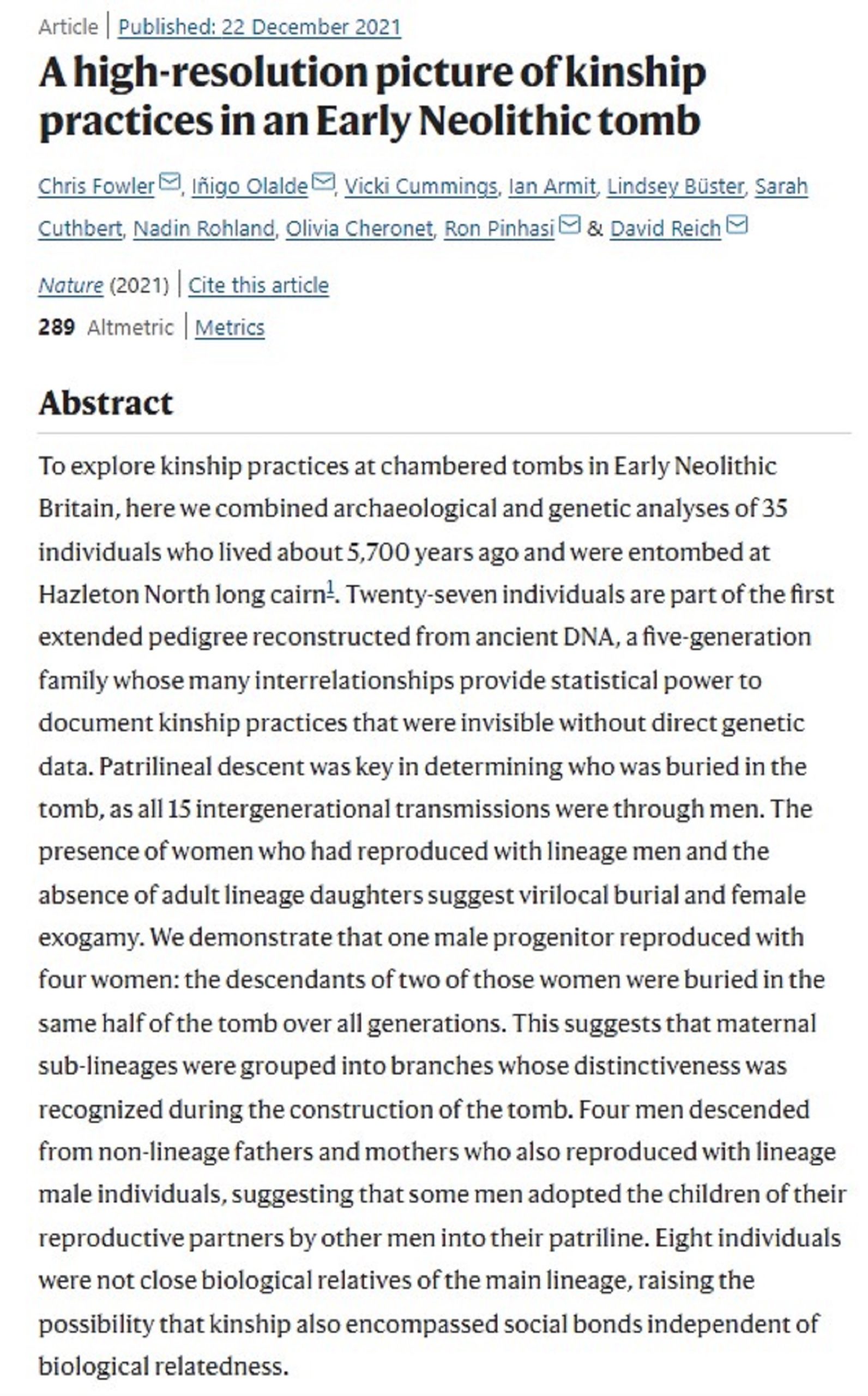
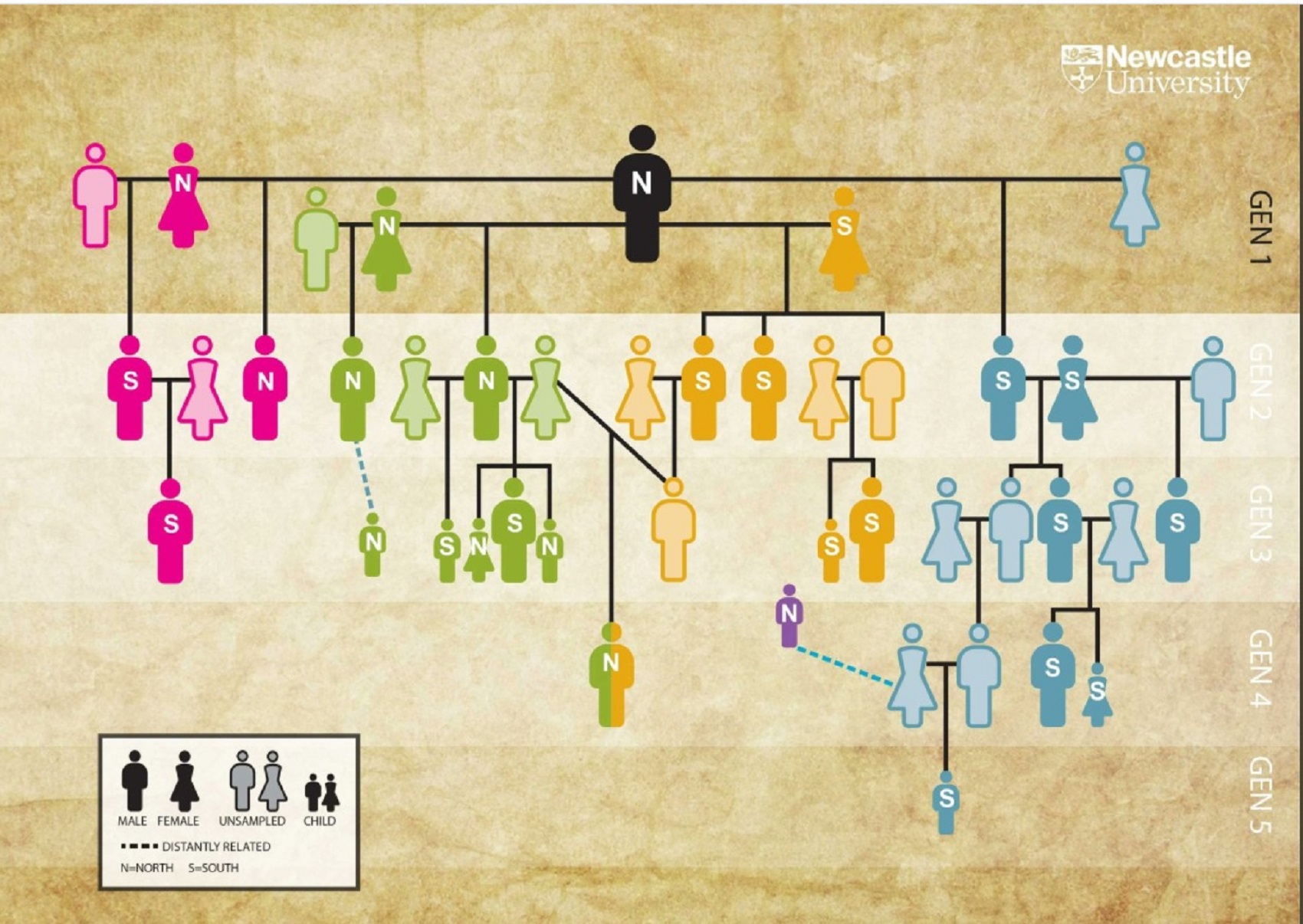
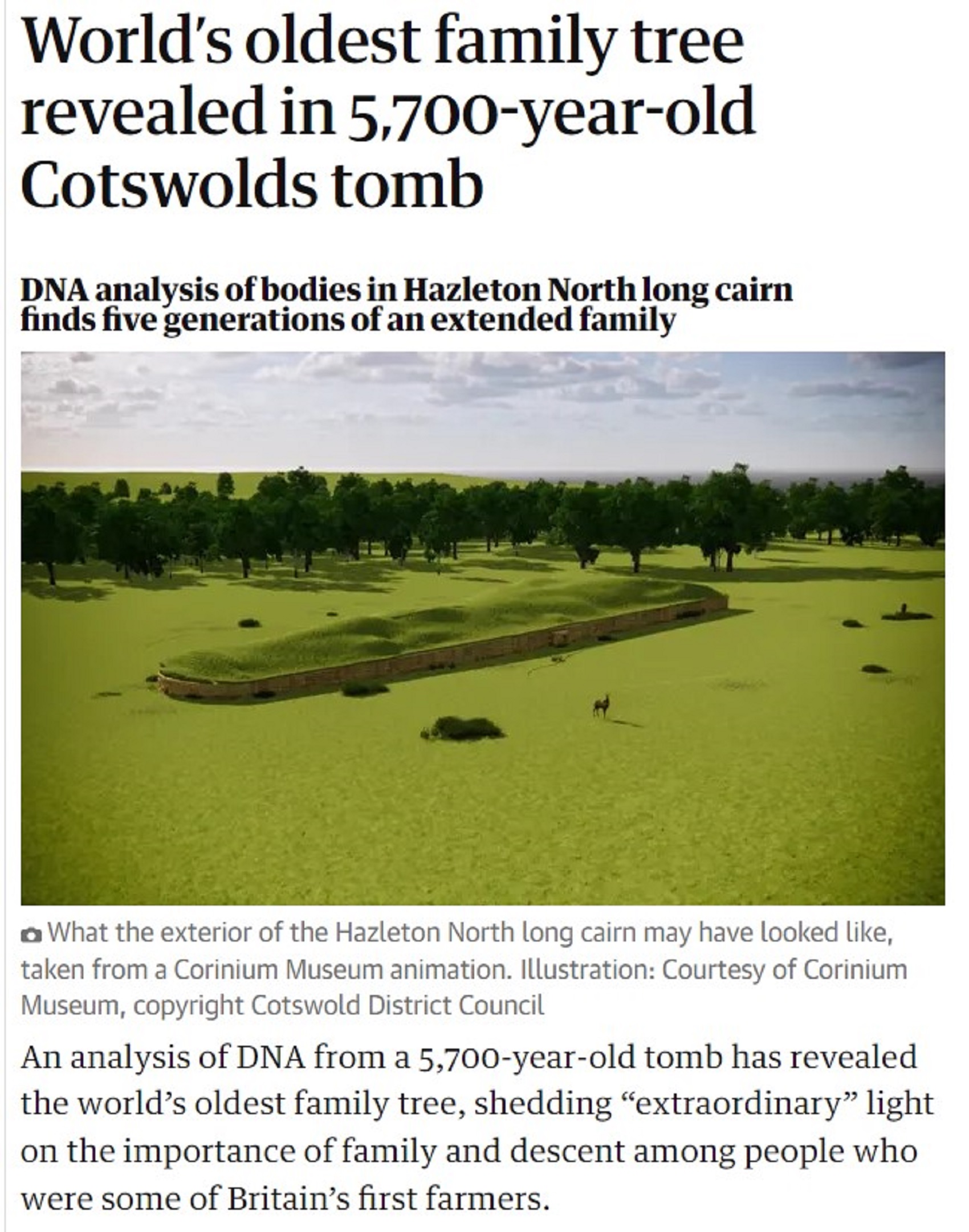

- DNA analysis carried out on 35 people buried in Neolithic tomb in the Cotswolds
- Study found that most were from five generations of a single extended family
- A total of 27 were descended from four women who had children with the same man
- Research allowed experts to ‘uncover the oldest family tree ever reconstructed’ ref
“DNA analysis of 35 people buried in a Neolithic tomb in the Cotswolds has revealed that most were descended from four women who all had children with the same man 5,700 years ago. Researchers said they couldn’t be sure whether it was an example of polygamy – which involves being in a relationship or married to more than one partner – or serial monogamy, where a person has one ‘other half’ at any one time. But genetic testing showed that 27 of the individuals were from five generations of a single extended family, allowing experts to put together ‘the oldest family tree ever reconstructed’. The group lived about 3,700 to 3,600 BCE — around 100 years after farming had been introduced to Britain.” ref
WHY DO EXPERTS THINK THE NEOLITHIC FAMILY COULD HAVE BEEN POLYGAMOUS?
“Polygamous is the practice of marrying multiple spouses. When a man is married to more than one wife at the same time, sociologists call this polygyny, which is what the researchers think may be a possibility in this case. The word polygamous was first coined in the 1960s and literally means ‘many loves’ in Latin.DNA analysis of 35 people buried in a Neolithic tomb in the Cotswolds has revealed that most were from five generations of a single extended family. It is also thought that stepsons were adopted into the lineage. Researchers said there was evidence of males whose mother was buried in the tomb but not their biological father, and whose mother had also had children with a male from the patriline.” ref
“Researchers found that 27 of them were descended from four women who all had children with the same man. They were able to establish this with the help of genetic testing. However, they said they couldn’t be sure whether it was an example of polygamy or serial monogamy, where a person has one ‘other half’ at any one time. Archaeologists from Newcastle University and geneticists from the University of the Basque Country, University of Vienna, and Harvard University were all involved in the research. It is the first study to reveal in such detail how prehistoric families were structured and provides new insights into kinship and burial practices in Neolithic times, the authors said.” ref
“The cairn at Hazleton North included two L-shaped chambered areas, to the north and south of the main ‘spine’ of the linear structure, where individuals were buried. Researchers found that men were generally laid to rest with their father and brothers, suggesting that descent was patrilineal, with later generations buried at the tomb connected to the first generation entirely through male relatives. While two of the daughters of the lineage who died in childhood were buried in the tomb, the absence of adult daughters suggests that their remains were placed either in the tombs of male partners with whom they had children, or elsewhere.” ref
“Dr. Chris Fowler of Newcastle University, the first author and lead archaeologist of the study, said: ‘This study gives us an unprecedented insight into kinship in a Neolithic community. ‘The tomb at Hazleton North has two separate chambered areas, one accessed via a northern entrance and the other from a southern entrance, and just one extraordinary finding is that initially each of the two halves of the tomb were used to place the remains of the dead from one of two branches of the same family.” ref
“This is of wider importance because it suggests that the architectural layout of other Neolithic tombs might tell us about how kinship operated at those tombs.’ Although the right to use the tomb ran through patrilineal ties, the choice of whether individuals were buried in the north or south chambered area initially depended on the first-generation woman from whom they were descended, suggesting that these first-generation women were socially significant in the memories of this community.” ref
“If gods have slaves, why not kings with their often claimed Divine rights? An easy excuse to justify the unequal hierarchy and servitude oppression of the many for the glory of the few.”
I hate religion as I hate harm, oppression, bigotry, and love equality, self-ownership, self-empowerment, self-actualization including self-mastery, as well as truth and not only does religion lie, it is a conspiracy theory of reality.
If there was a god, then it is evil and enjoys our suffering or an uncaring god that sits and does nothing. Thus, even if there was a god, I would never worship it. No Gods, No Kings, and No Masters.
All Kings renounce your thrones for humanity as classism is an evil that has separated and put humanity against each other from the first self-imposed glorification of “one”, the disgusting, and reviled behaviors of the psychopathic narcissist worshiping their most unhealthy urges.
I am an anticapitalist due to my ethics, this is true not even thinking about socialism, as capitalism is obviously vile all on its own. Thankfully, we do have an ethical system, like socialism as an alternative, but even if we did not, I would still be strongly anticapitalist.
People have always told me from the beginning of my out activism that all the different issues I address will make me limited to ever becoming famous because I offend people and force them to confront the distasteful or objectionable, so not fun topics. Guess what? I did it anyway.
Religions are a kind of willful communicative ignorance, mythology marketed as wisdom. Speak up, loud, clear, and with passion as hope dies in silence. Atheism is fact and all gods, including your deity, are but a goddam lie.
Just think, would you let Your God-Belief kill you?
What act could your god do if you’re a believer that is so bad you reject your god?
If there is nothing your god could do to make you against your god, what would this mean?
If nothing then is it that you hold your god to no standard or you think so little of yourself and the rest of humanity that no act deserves rebuke?
If that was the case doesn’t that speak more to the lack of ethical standards you hold than if a god could violate any?
Do you hope your EGO wins or the Truth?
I see myself as an anarcho-humanist regardless of whatever else and I thus believe in not harming and actively helping.


It is easy to not care when you are not the one suffering oppression. But for the humanitarian, care is a way of life, not limited to a people, nor place, but humanity itself. We rise by helping each other. Show us all how good humans can be.
Paganism:
*primal stage of organized religion is 13,000 years ago.
*proto stage of organized religion is 10,000 years ago.
*progressed stage of organized religion “Myths Origin” is 7,000 years ago.
*developed stage of organized religion is 5,000 years ago.
- Paganism 12,000-7,000 years old: related to “Anarchism and Socialism” (Pre-Capitalism)
- Paganism 7,000-5,000 years old: related to “Anarchism and Socialism” (Capitalism) (World War 0) Elite and their slaves!
- Paganism 5,000 years old: progressed organized religion and the birth of the state: related to “Anarchism and Socialism” (Kings and the Rise of the State)
- Paganism 4,000 years old: Moralistic gods after the rise of Statism and often support Statism/Kings: related to “Anarchism and Socialism” (First Moralistic gods, then the Origin time of Monotheism)
Then from 5,000-4,000 years ago moralistic deities are invented likely by or for the state. Then around 4,000 years ago monotheism emerges.
Paganism was more than shamanism at first it was about the clan leader from 13,000 to 7,000 years ago then from 7,000 until 5, 500 was a time of proto kings and by 5,000 kings were a growing norm.
The term “paganism”, used by me and some others who are academics, roughly refers to pre-Christian, socioreligious-cultural-based traditions which were polytheistic (worshiped multiple entities), and to me, I speculate also involve elements of Animism, Totemism, and shamanism; which together with polytheism are what I call paganism.
* “paganist” As I conceive it in a simplified way is to believe in spirit-filled life and/or afterlife can be attached to or be expressed in things or objects and these objects can be used by special persons or in special rituals can connect to spirit-filled life and/or afterlife who are guided/supported by a goddess/god or goddesses/gods (you are a hidden paganist/Paganism: an approximately 12,000-year-old belief system) And Gobekli Tepe: “first human-made temple” as well as Catal Huyuk “first religious designed city” are both evidence of some kind of early paganism, to me.
Again just to clarify when I refer to seeming paganism thinking or behaviors (emphasize reverence for nature, polytheistic and animistic, totemistic, and shamanist religious practices). and Gobekli Tepe, by paganism I mean a grouped set of behaviors that I believe resemble the concept of paganism-type beliefs. Neither am I claiming to fully know or understand all the possible mythology beliefs that may be represented in the carving at Gobekli Tepe, some seem more straightforward others beyond current understanding, and possibly forever beyond full comprehension.
“Paganism was originally a pejorative and derogatory term for polytheism, implying its inferiority. Paganism (from classical Latin refers to “rural, rustic,” later “civilian”) is a term first used in the fourth century by early Christians for people who practiced polytheism.” ref
“However, Paganism as a term of meaning represents a wide variety of traditions that emphasize reverence for nature and a revival of ancient polytheistic and animistic religious practices. Paganism is not a traditional religion per se because it does not have any official doctrine, but it does have some common characteristics joining the great variety of traditions. One of the common beliefs is the divine presence in nature and the reverence of the natural order in life. Spiritual growth is related to the cycles of the Earth and great emphasis is placed on ecological concerns. Monotheism is almost universally rejected within Paganism and most Pagan traditions are particularly interested in the revival of ancient polytheist religious traditions.” ref
“Religion may be defined as “a set of beliefs concerning the cause, nature, and purpose of the universe, especially when considered as the creation of a superhuman agency or agencies, usually involving devotional and ritual observances, and often containing a moral code governing the conduct of human affairs,” whereas ritual is “an established or prescribed procedure for a religious or other rites.” ref
*Primal superstition starts around 1 million years ago with. Then the development of religion increased around 600,000 years ago with proto superstition and then even to a greater extent around 300,000 years ago with progressed superstition.
Around 100,000 years ago, is the primal stage of early religion, the proto stage of early religion is around 75,000 years ago, or less, the progressed stage of early religion is around 50,000 years ago and finally after 13,500 years ago, begins with the evolution of organized religion. The set of stages for the development of organized religion is subdivided into the following: the primal stage of organized religion is 13,000 years ago, the proto stage of organized religion is around 10,000 years ago, and finally the progressed stage of organized religion is around 7,000 years ago with the forming of mythology and its connected set of Dogmatic-Propaganda-Closure belief strains of sacralized superstitionism. I will now give offer my rough outlined four-stage hypotheses, which use the reference of a house, in order to help to explain the way how that house (modern religions) fully developed a packet of wishful thinking nonsense, in order to assist in grasping the relative big picture of both the original elements that are involved in what often became a variety of nonrealism/unrealistic faiths or beliefs around the world. Moreover, this relative compiled a set of nonrealism faith or belief components (animism, totemism, and paganism) that are often still found in almost all religions today. My hypothesis with an explanation of this house (modern religions development).
- First, there is the foundation: Superstitionism and Symbolism/Ritualism.
- Second, is the frame and walls: Supernaturalism and Sacralizism/Spiritualism.
- Third, is the roof and finishing elements of the structure: Dogmatism and Myths.
- Fourth, is the window dressing and stylings to the house: decorated with the webs religious Dogmatic-Propaganda.
In the stage of organized religion, one important aspect that is often overlooked because of male-only thinking or by some over-emphasized because of extreme feminism is gender. There are some obvious gender associations in artifacts and possible gender-involved religious beliefs but thoughtful feminist archaeologists do not pounce on every representation of a woman and pronounce that it is a goddess. Around 5,000 years ago there are the full elements seem to be grouping together with its connected set of Dogmatic-Propaganda-Closure belief strains of sacralized superstitionism that took different forms of behavior in different areas of the world.
Hidden Religious Expressions
“animist, totemist, shamanist & paganist”
*Believe in spirit-filled life and/or afterlife (you are a hidden animist)
*Believe in spirit-filled life and/or afterlife can be attached to or be expressed in things or objects (you are a hidden totemist)
*Believe in spirit-filled life and/or afterlife can be attached to or be expressed in things or objects and these objects can be used by special persons or in special rituals can connect to spirit-filled life and/or afterlife (you are a hidden shamanist)
*Believe in spirit-filled life and/or afterlife can be attached to or be expressed in things or objects and these objects can be used by special persons or in special rituals can connect to spirit-filled life and/or afterlife who are guided/supported by a goddess/god or goddesses/gods (you are a hidden paganist)
I classify Animism (animated ‘spirit‘ or “supernatural” perspectives).
I see all religious people as at least animists, so, all religions have at least some amount, kind, or expression of animism as well.

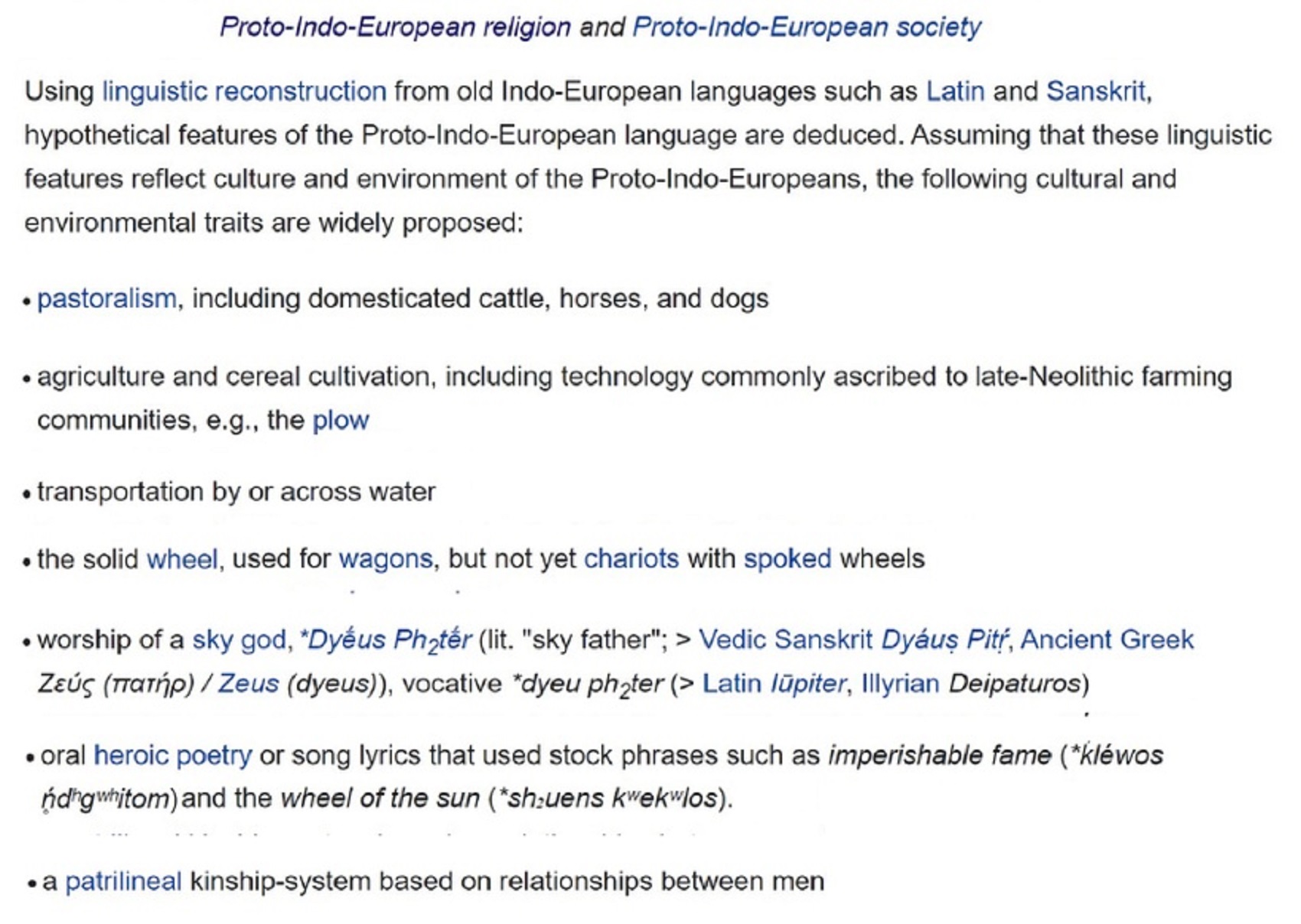
“Using linguistic reconstruction from old Indo-European languages such as Latin and Sanskrit, hypothetical features of the Proto-Indo-European language are deduced. Reflecting culture and environment of the Proto-Indo-Europeans.” ref

Western Steppe Herders: “The Proto-Indo-Europeans are a hypothetical prehistoric population of Eurasia who spoke Proto-Indo-European (PIE), the ancestor of the Indo-European languages according to linguistic reconstruction.” ref
“Knowledge of them comes chiefly from that linguistic reconstruction, along with material evidence from archaeology and archaeogenetics. The Proto-Indo-Europeans likely lived during the late Neolithic, or roughly the 4th millennium BCE. Mainstream scholarship places them in the Pontic–Caspian steppe zone in Eastern Europe (present-day Ukraine and southern Russia). Some archaeologists would extend the time depth of PIE to the middle Neolithic (5500 to 4500 BCE or 7,521-6,521 years ago) or even the early Neolithic (7500 to 5500 BCE or 9,521-7,521 years ago), and suggest alternative location hypotheses.” ref
“By the early second millennium BCE, descendants of the Proto-Indo-Europeans had reached far and wide across Eurasia, including Anatolia (Hittites), the Aegean (the linguistic ancestors of Mycenaean Greece), the north of Europe (Corded Ware culture), the edges of Central Asia (Yamnaya culture), and southern Siberia (Afanasievo culture).” ref
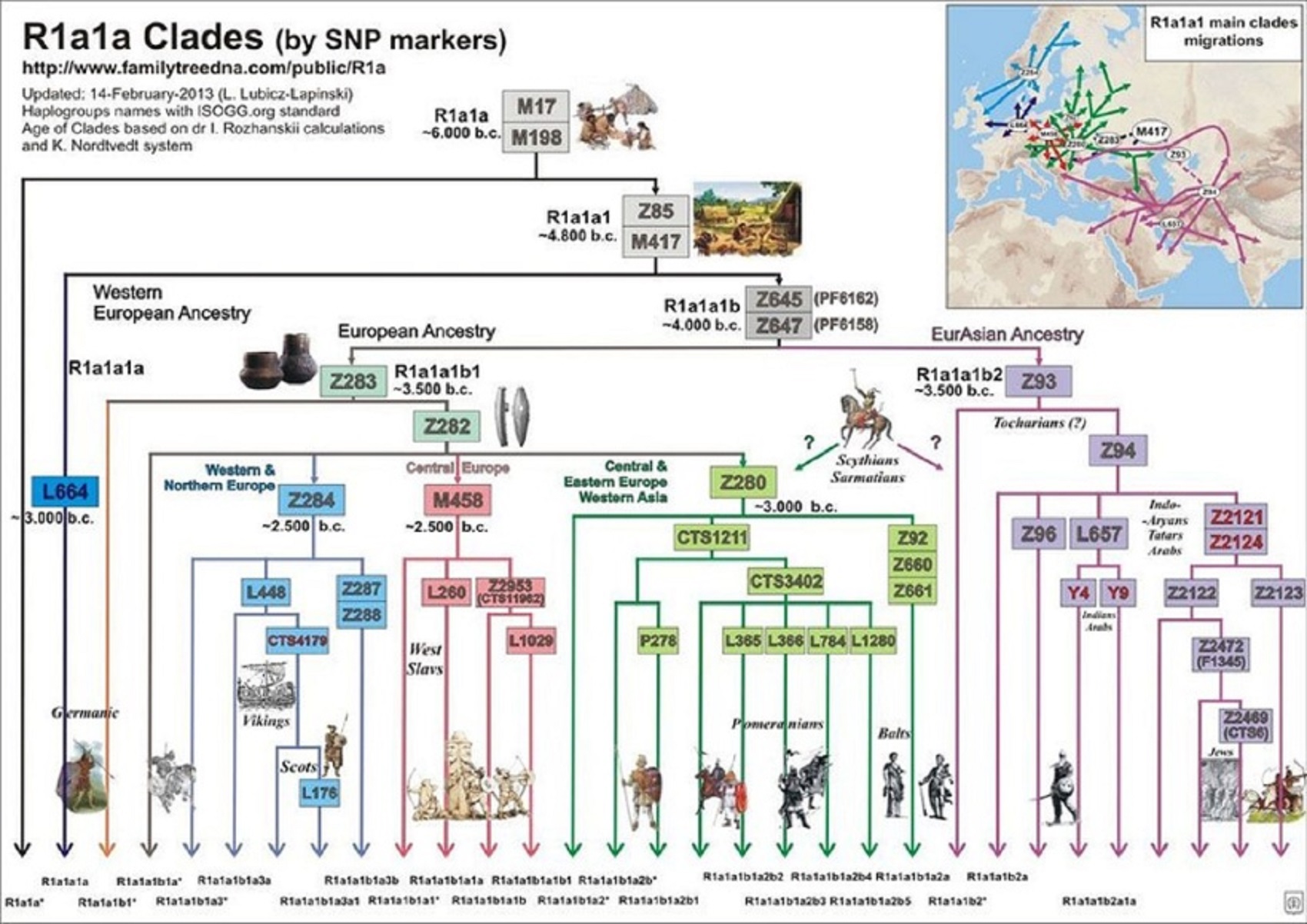

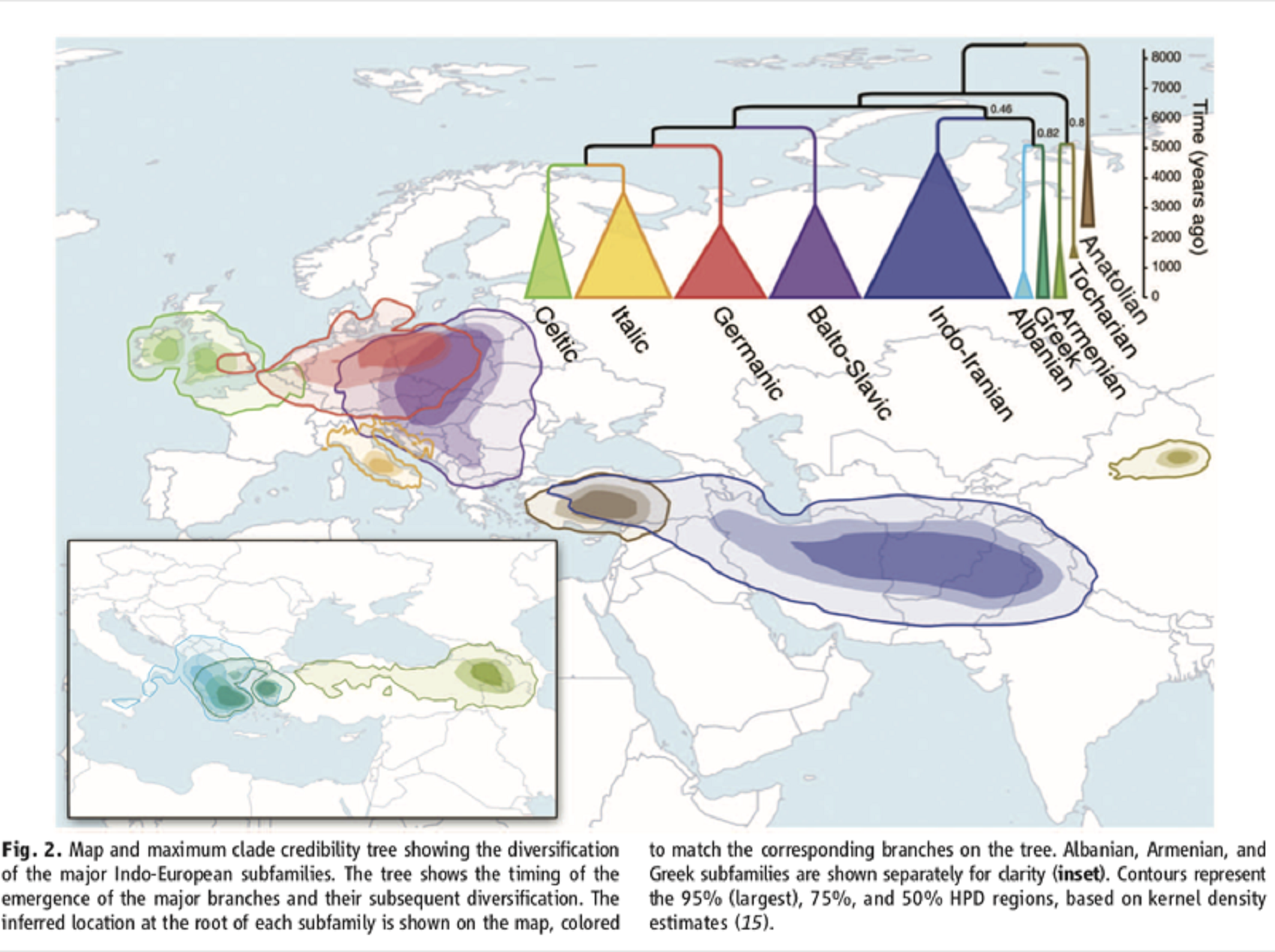
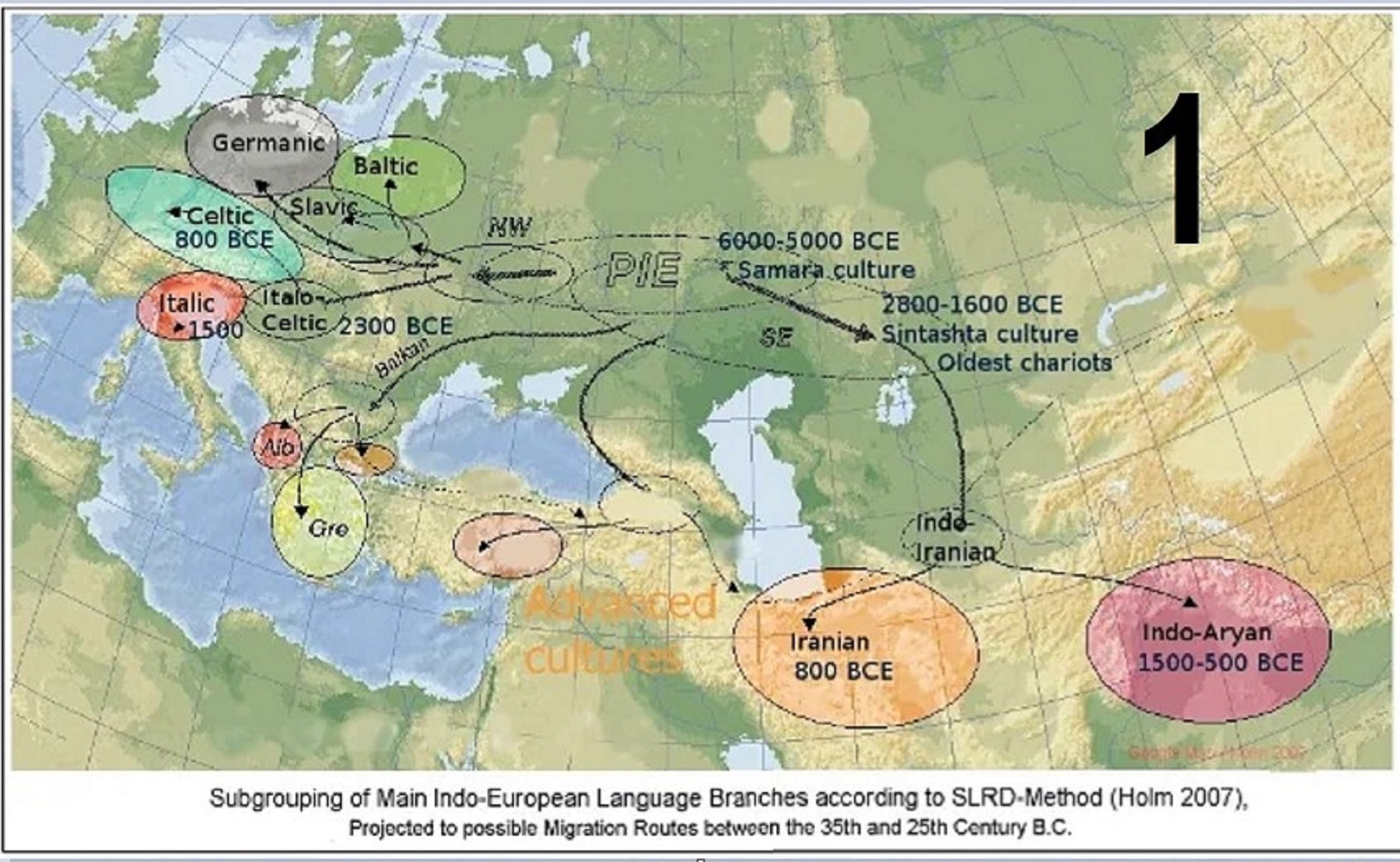
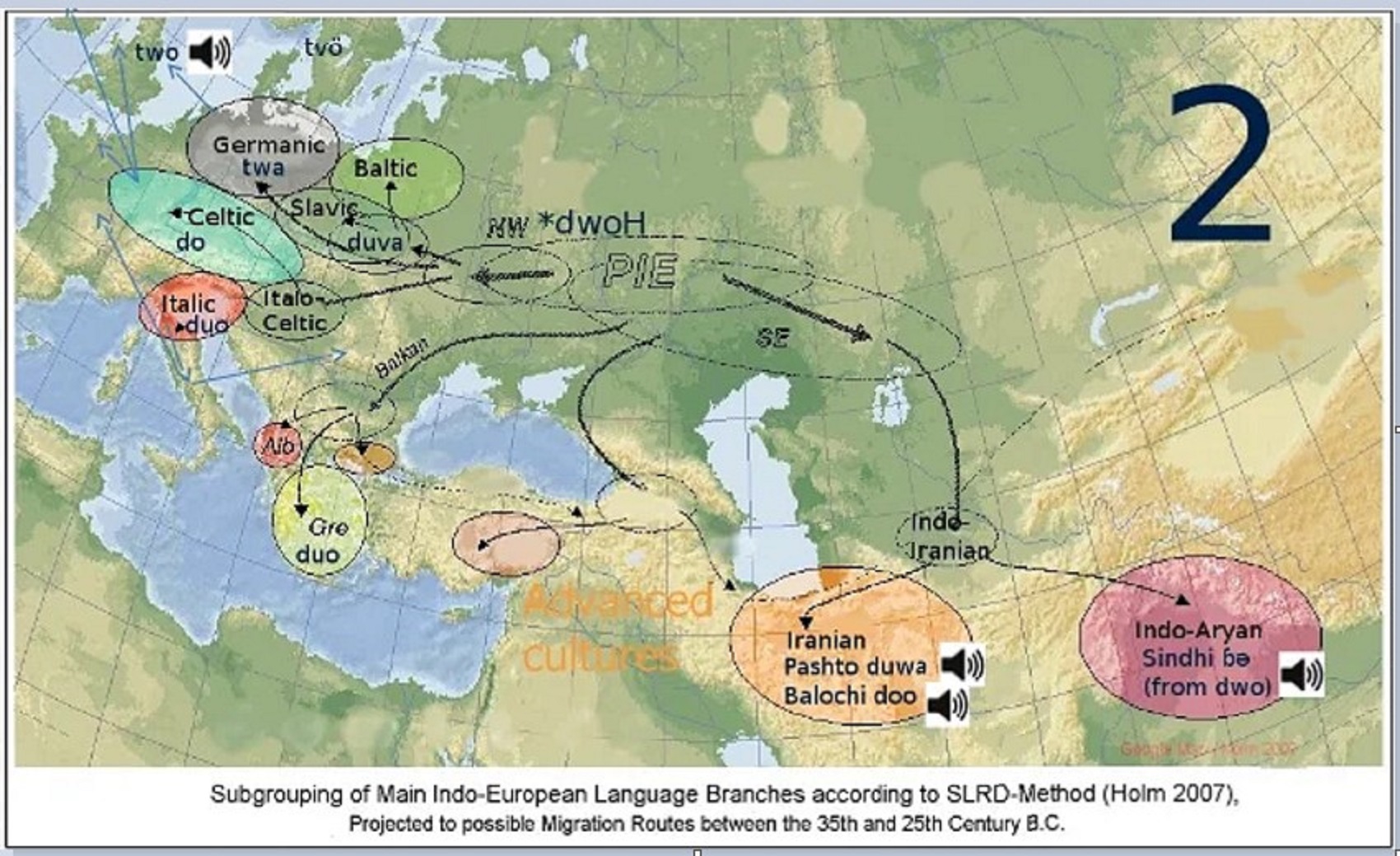


The door of reason opens not once but many times.
Religions continuing in our modern world, full of science and facts, should be seen as little more than a set of irrational conspiracy theories of reality. Nothing more than a confused reality made up of unscientific echoes from man’s ancient past. Rational thinkers must ask themselves why continue to believe in religions’ stories. Religion myths which are nothing more than childlike stories and obsolete tales once used to explain how the world works, acting like magic was needed when it was always only nature. These childlike religious stories should not even be taken seriously, but sadly too often they are. Often without realizing it, we accumulate beliefs that we allow to negatively influence our lives. In order to bring about awareness, we need to be willing to alter skewed beliefs. Rational thinkers must examine the facts instead of blindly following beliefs or faith.
I am doing what I know, so I see myself as gangbanging for humanity…
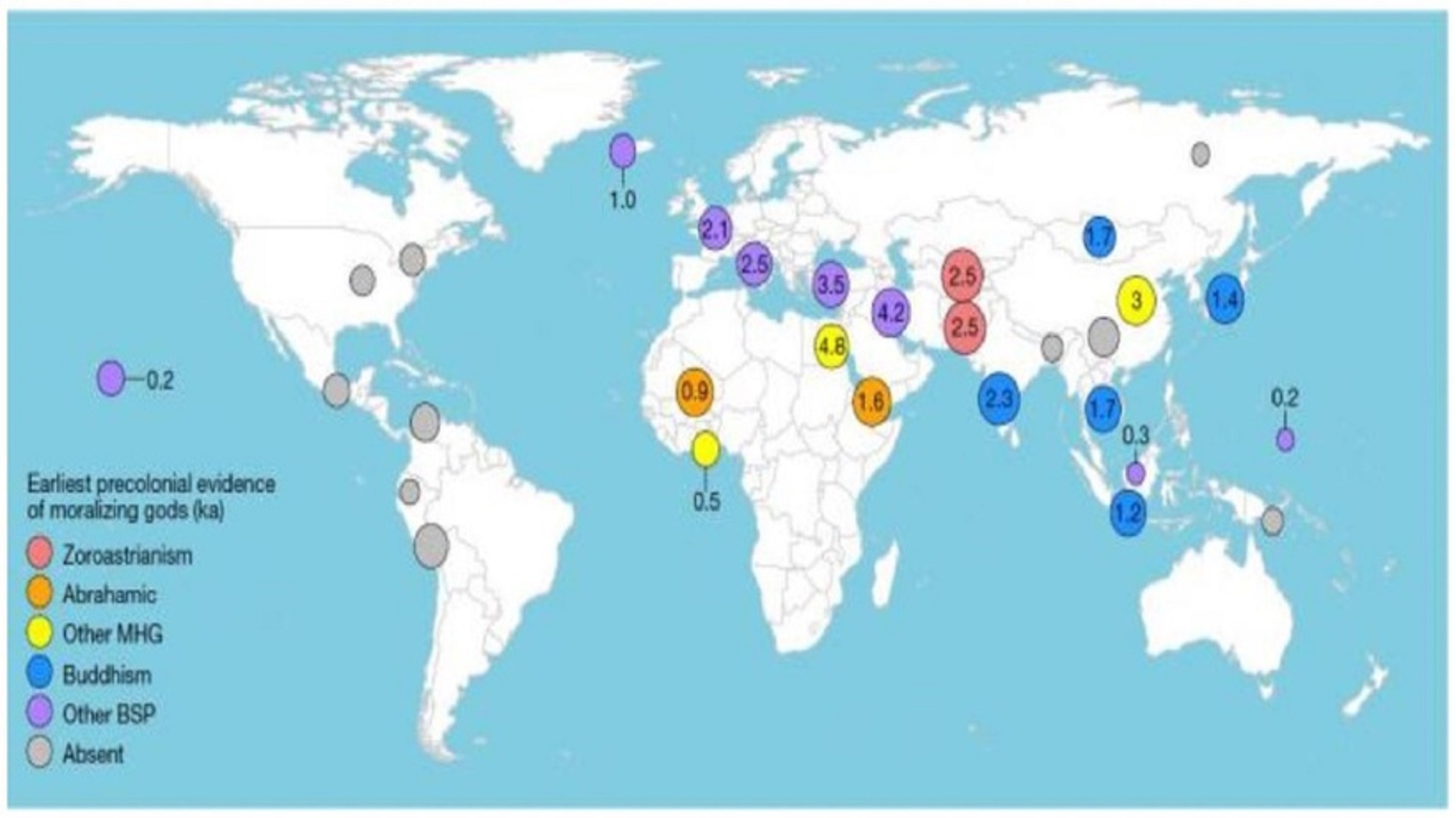
Picture ref
Which Came First, Big Gods or Big Societies?
“A global history databank spanning the end of the Paleolithic period to the beginning of the Industrial Revolution, to expand on the work of previous studies that looked at the relationship between belief in moralizing gods and the rise of complex societies. Smaller-scale studies have suggested that belief in moralizing gods and supernatural judgment helped shape emerging complex societies, while others have argued that belief in the threat of divine punishment appeared later in societies’ development. Researchers took into account more than 50 measures of social complexity and four measures of belief in supernatural enforcement in more than 400 societies living in 30 different regions of the world over the past 10,000 years. The researchers found that belief in moralizing gods usually appeared after civilizations reached populations estimated at more than one million people. It was particularly striking how consistent it was [that] this phenomenon emerged at the million-person level. First, you get big societies, and these beliefs then come.” Religion may help stabilize large societies in which people live more anonymous lives, unlike small hunter-gatherer societies, in which everyone knows what everyone else is doing. To read about the nineteenth-century discovery of a tablet containing a story that was eerily similar to that of Noah in the Old Testament, go to “Cuneiform: Religion.” ref
Now let’s address ritualism in archaeology as its important not just when speculating paganism in what seems ritual behaviors but any presumed religion or spiritually linked behaviors seen in archaeology contexts devoid of direct writing in general…
If it is ritual, thus relating to the world of religion or sacred supernatural beliefs, how would you know? We speculate from the evidence available. Does that mean we are 100% right? No of course not even if close we could still have thought about past people beliefs or behavior motivations with errors in relating to the exact thinking behind the behaviors but if we adhere to the evidence we may guess close or at least what may be a reasonable postulation of what potentially could relate.
This means that even if we have beloved speculations they may be good but we always need the intellectual humility that they should be open to analysis, critique, and change if needed. Thus we can offer great ideas about the past but there is always the need of remembering that when speculation on the mind and motivations of the past there is always a chance we are wrong or need more refinement thus should be ready to change if needed.
I have a general belief standard that helps me remember this in al thinking I do, which I call belief etiquette:
“Reasoned belief acquisitions, good belief maintenance, and honest belief relinquishment.”
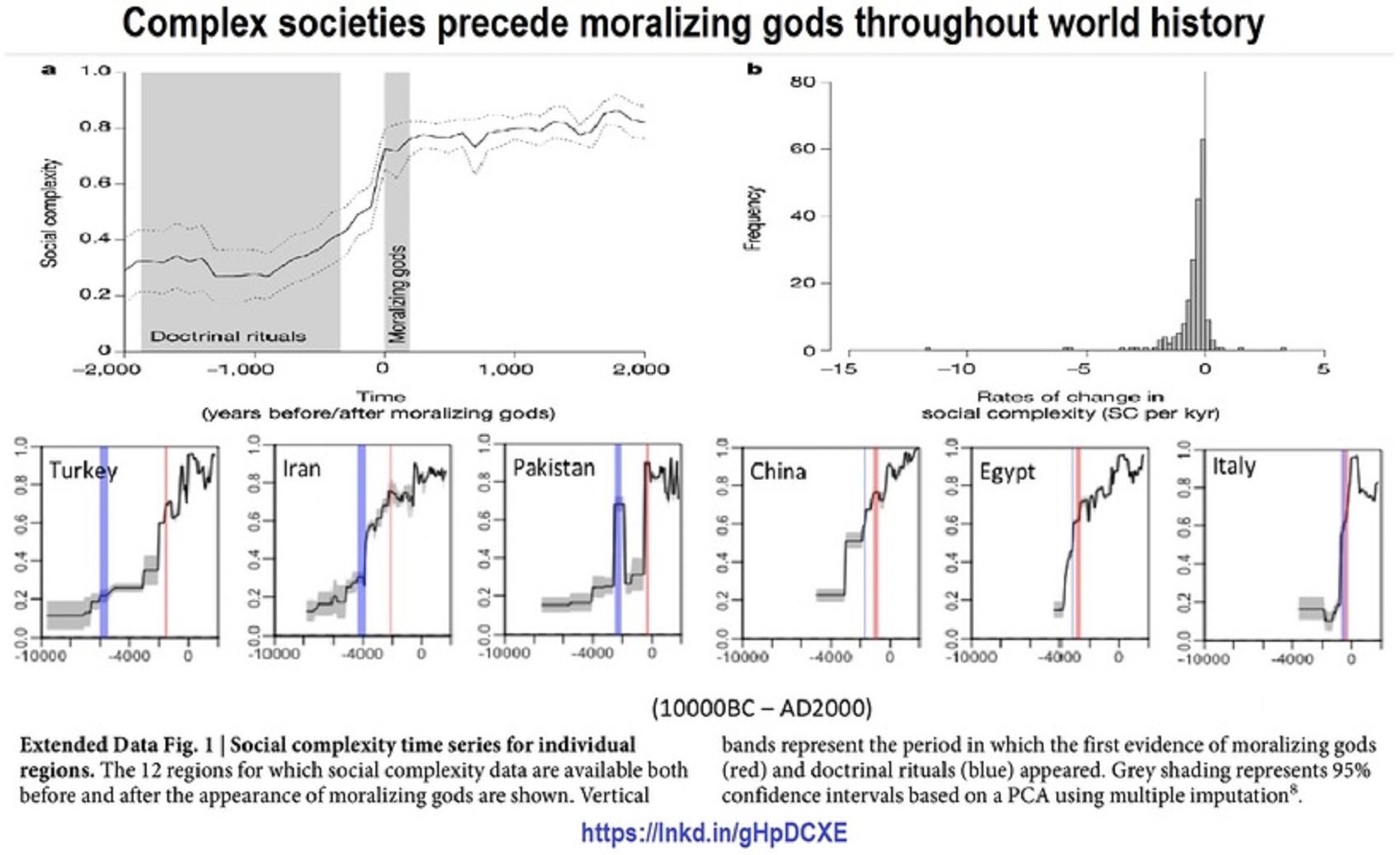
Complex societies precede moralizing gods throughout world history
“The ‘moralizing gods’ hypothesis offers a solution to both puzzles by proposing that belief in morally concerned supernatural agents culturally evolved to facilitate cooperation among strangers in large-scale societies. The study systematically coded records from 414 societies that span the past 10,000 years from 30 regions around the world, using 51 measures of social complexity and 4 measures of supernatural enforcement of morality. Not only confirm the association between moralizing gods and social complexity, but also reveal that moralizing gods follow—rather than precede—large increases in social complexity. Contrary to previous predictions, powerful moralizing ‘big gods’ and prosocial supernatural punishment tend to appear only after the emergence of ‘megasocieties’ with populations of more than around one million people.” ref
Less Imperialism Worship in Prehistory/History, PLEASE
7,000 years of Class Conflict, Class War Struggle Ain’t Nothing New!
I love when people of Statism-worship persuasion, love saying, things are so bad and we need to lower the struggle, I think what the delusion are you talking about, it has always been class war, crazy fucker, you know, for about 7,000 years ago of oppressions forced on us at the end.
Between 7,000-5,000 Years ago, rise of unequal hierarchy elite, leading to a “birth of the State” or worship of power, strong new sexism, oppression of non-elites, and the fall of Women’s equal status
I am for the emancipation of humanity. I want others to take what I learned and go learn more. Go then and teach more. I am not a leader that wants to make followers, rather I want to create leaders that go out and do the same, creating more leaders. I would rather be known for my humanity, not my hate.

Nebra sky Disc 1600 BCE or 3,621 years ago
“The Nebra sky disc is a bronze disc of around 30 centimeters (11+3⁄4 in) diameter and a weight of 2.2 kilograms (4.9 lb), having a blue-green patina and inlaid with gold symbols. These symbols are interpreted generally as the Sun or full moon, a lunar crescent, and stars (including a cluster of seven stars interpreted as the Pleiades). Two golden arcs along the sides, interpreted to mark the angle between the solstices, were added later. A final addition was another arc at the bottom with internal parallel lines (of uncertain meaning, variously interpreted as a solar barge with numerous oars, the Milky Way, or a rainbow).” ref
“The disc has been attributed to a site in present-day Germany near Nebra, Saxony-Anhalt, and was originally dated by archaeologists to c. 1600 BCE. Researchers initially suggested the disc is an artifact from the Bronze Age Unetice culture, although a later dating to the Iron Age has also been proposed. If its Bronze Age dating is accurate, the Nebra sky disc features the oldest concrete depiction of the cosmos yet known from anywhere in the world. In June 2013 it was included in the UNESCO Memory of the World Register and termed “one of the most important archaeological finds of the twentieth century.” ref
“The precise dating of the Nebra sky disc depended upon the dating of a number of Bronze Age weapons, which were offered for sale with the disc and said to be from the same site. These axes and swords can be dated typologically to the mid-second millennium BCE. Radiocarbon dating of a birchbark particle found on one of the swords to between 1600 and 1560 BCE confirmed this estimate. This corresponds to the date of burial, at which time the disc had likely been in existence for several generations.” ref
“The disc may be an astronomical instrument as well as an item of religious significance. The blue-green patina of the bronze may have been an intentional part of the original artifact. Euan MacKie suggests that the Nebra disc may be linked to the solar calendar reconstructed by Alexander Thom from his analysis of standing stone alignments in Britain.” ref
“The find is regarded as reconfirming that the astronomical knowledge and abilities of the people of the European Bronze Age included close observation of the yearly course of the Sun, and the angle between its rising and setting points at the summer and winter solstices. While much older earthworks and megalithic astronomical complexes, such as the Goseck circle and Stonehenge, had already been used to mark the solstices, the disc is the oldest known “portable instrument” to allow such measurements. Pásztor, however, sees no evidence that the disc was a practical device for solar measurements.” ref
“According to an initial analysis of trace elements by x-ray fluorescence by E. Pernicka, then at the University of Freiberg, the copper originated at Bischofshofen in Austria, whilst the gold was thought to be from the Carpathian Mountains. A more recent analysis found that the gold used in the first development phase (see below) was from the River Carnon in Cornwall, United Kingdom. The tin present in the bronze was also of Cornish origin.” ref
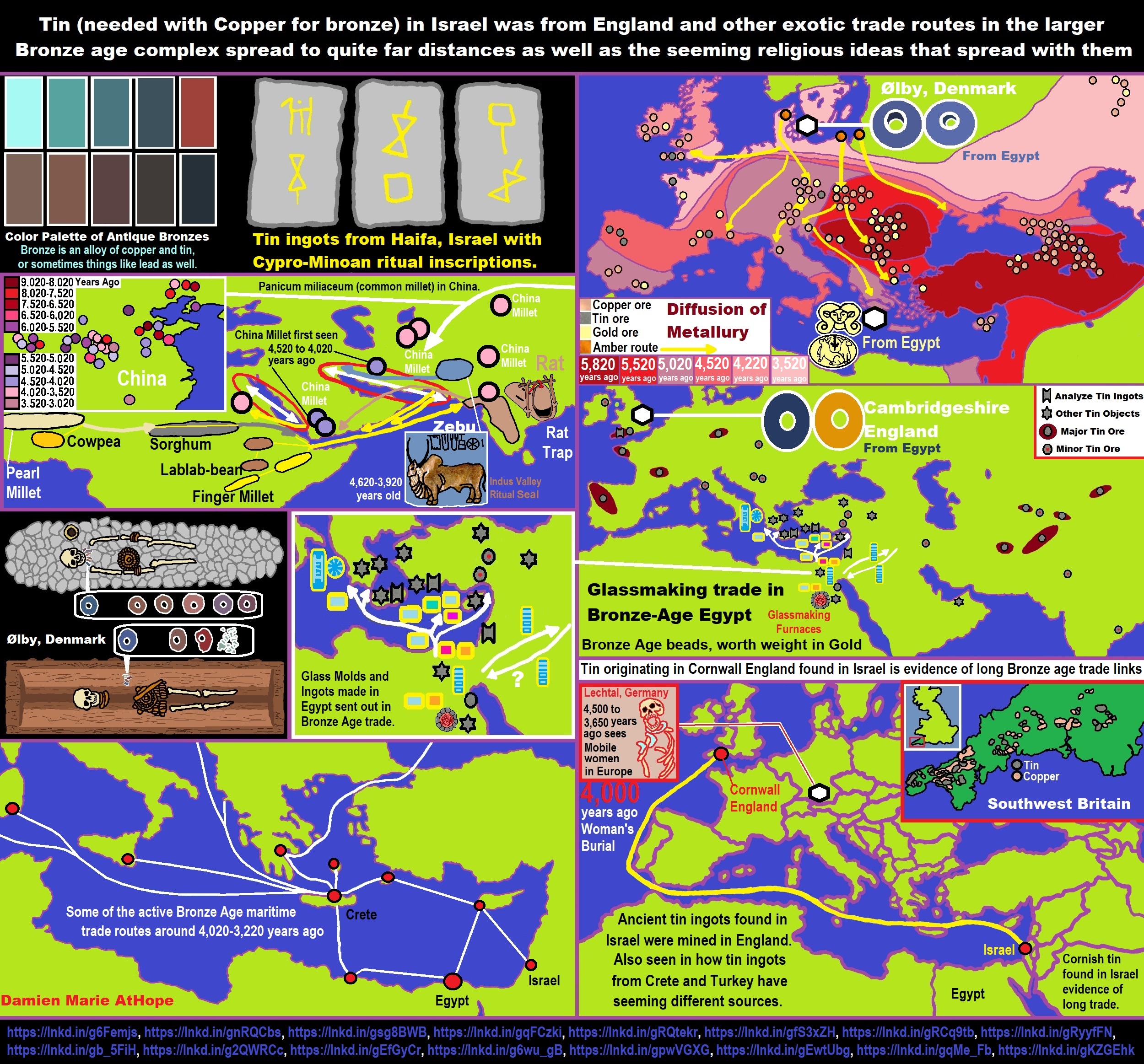



“Mesopotamia is a historical region of Western Asia situated within the Tigris–Euphrates river system, in the northern part of the Fertile Crescent. Mesopotamia occupies most of present-day Iraq and Kuwait. The historical region includes the head of the Persian Gulf and parts of present-day Iran, Syria, and Turkey.” ref
“The Sumerians and Akkadians (including Assyrians and Babylonians) dominated Mesopotamia from the beginning of written history (c. 3100 BCE or 5,121 years ago) to the fall of Babylon in 539 BCE or 2,560 years ago, when it was conquered by the Achaemenid Empire. It fell to Alexander the Great in 332 BCE or 2,353 years ago, and after his death, it became part of the Greek Seleucid Empire. Later the Arameans dominated major parts of Mesopotamia (900 BCE – 270 CE).” ref
“Around 150 BCE or 2,171 years ago, Mesopotamia was under the control of the Parthian Empire. Mesopotamia became a battleground between the Romans and Parthians, with western parts of Mesopotamia coming under ephemeral Roman control. In 226 CE, the eastern regions of Mesopotamia fell to the Sassanid Persians. The division of Mesopotamia between Roman (Byzantine from 395 AD) and Sassanid Empires lasted until the 7th-century Muslim conquest of Persia of the Sasanian Empire and Muslim conquest of the Levant from Byzantines.” ref
“A number of primarily neo-Assyrian and Christian native Mesopotamian states existed between the 1st century BCE and 3rd century BCE, including Adiabene, Osroene, and Hatra. Mesopotamia is the site of the earliest developments of the Neolithic Revolution from around 10,000 BCE or 12,021 years ago. It has been identified as having “inspired some of the most important developments in human history, including the invention of the wheel, the planting of the first cereal crops, and the development of cursive script, mathematics, astronomy, and agriculture“. It has been known as one of the earliest civilizations to ever exist in the world.” ref
City-States seem to likely start in Mesopotamia
“As time went on, many small villages became the first cities, one of them being Eridu, according to the Mesopotamians themselves. Scholars, however, consider Uruk to be the first city in history. Other Sumerian cities include Ur, Lagash, Adab, Kish, Larsa, Nippur, Kullah, and Adab among others.” ref
“In 4000 BCE or 6,021 years ago. came the first villages and the beginning of towns. By 3,500 BCE or 5,521 years ago, the Sumerian city-states began forming, all centered around temples to the gods. By this time, Sumerian people had invented writing, the wheel, irrigation and water control, and sailboats. One of the names for Mesopotamia is the “cradle of civilization,” as the land between the Tigris and Euphrates Rivers was the birthplace of civilization as we know it.” ref
“Sumer’s city-states were first ruled by priest-kings, known as Ensi. As society grew more complex, however, and city-states began battling over land and water rights, a secular kingship began, with the rule of a city-state in the hands of a Lugal, or strong man. The Lugal supervised wars and oversaw important trade with other lands. Trade brought in goods such as metal ores that were unobtainable in Sumer itself. It was probably the necessity of record-keeping in long-distance trade that spurred the development of cuneiform writing.” ref
“While the archeological record reveals the life of common Sumerians, the Sumerian King List provides some detail of Sumer’s kings. The King List, a cuneiform document that lists and briefly describes all the kings of the region beginning with Etana of Kish, who ruled c. 3100 BCE or 5,121 years ago. A scribe in the city of Lagash wrote the document around 2100 BCE or 4,121 years ago at the instigation of a king who wished to legitimate his rule by connecting his name with the known kings and their great deeds.” ref
“Sumer’s city-states warred with each other continually for land, water rights, and other natural resources. One king might create a larger alliance, but no one managed to rule them all until Eannutum of Lagash, who managed to subdue most of the city-states of Sumer under his rule. Lugalzagesi of Umma then held that proto-empire together until he was overthrown by Sargon the Great circa 2234 BCE or 4,255 years ago. Sargon, a Semite rather than a Sumerian, originated from northern Mesopotamia.” ref
“The Akkadian Empire dominated Sumer for the next 150 years. Sumer, however, would rise again during the Sumerian Renaissance of 2047-1750 BCE or 4,068 years ago. Sumer’s civilization provided the world with many firsts: first legal codes, court system, schools, proverbs, moral and ethical ideas, mathematical systems, libraries, bronze, writing, astrological signs, our division of time into hours and minutes and many technological innovations.” ref
Divine right of Kings
“Historically, many Notions of rights have been authoritarian and hierarchical, with different people granted different rights and some having more rights than others. For instance, the right of a father to receive respect from his son did not indicate a right for the son to receive a return from that respect. Analogously, the divine right of kings, which permitted absolute power over subjects, provided few rights for the subjects themselves.” ref
Pre-Christian conceptions of the Divine Right of Kings
Divine Right of Kings and Zoroastrianism (Iranian world)
The Indo-Iranian languages (also Indo-Iranic languages or Aryan languages) constitute the largest and southeasternmost extant branch of the Indo-European language family.
“Khvarenah “Ahura Mazda the god reportedly gives divine kingship to Ardashir.” Khvarenah is an Iranian and Zoroastrian concept, which literally means glory, about the divine right of the kings. This may stem from early Mesopotamian culture, where kings were often regarded as deities after their death. Shulgi of Ur was among the first Mesopotamian rulers to declare himself to be divine. In the Iranian view, kings would never rule, unless Khvarenah is with them, and they will never fall unless Khvarenah leaves them. For example, according to the Kar-namag of Ardashir, when Ardashir I of Persia and Artabanus V of Parthia fought for the throne of Iran, on the road Artabanus and his contingent are overtaken by an enormous ram, which is also following Ardashir. Artabanus’s religious advisors explain to him that the ram is the manifestation of the khwarrah of the ancient Iranian kings, which is leaving Artabanus to join Ardashir.” ref
Roman Empire (Italic languages)
Italic languages form a branch of the Indo-European language family, whose earliest known members were spoken on the Italian Peninsula in the first millennium BCE.
“The Imperial cult of ancient Rome identified Roman emperors and some members of their families with the “divinely sanctioned” authority (auctoritas) of the Roman State. The official offer of cultus to a living emperor acknowledged his office and rule as divinely approved and constitutional: his Principate should therefore demonstrate pious respect for traditional Republican deities and mores. Many of the rites, practices, and status distinctions that characterized the cult to emperors were perpetuated in the theology and politics of the Christianised Empire.” ref
Christian conceptions of the Divine Right of Kings
“In European Christianity, the divine right of kings, divine right, or God’s mandation is a political and religious doctrine of political legitimacy of a monarchy. It stems from a specific metaphysical framework in which a monarch is, before birth, pre-ordained to inherit the crown. According to this theory of political legitimacy, the subjects of the crown have actively (and not merely passively) turned over the metaphysical selection of the king’s soul – which will inhabit the body and rule them – to God. In this way, the “divine right” originates as a metaphysical act of humility and/or submission towards God. The Divine Right has been a key element of the legitimation of many absolute monarchies.” ref
“Significantly, the doctrine asserts that a monarch is not accountable to any earthly authority (such as a parliament) because their right to rule is derived from divine authority. Thus, the monarch is not subject to the will of the people, of the aristocracy, or of any other estate of the realm. It follows that only divine authority can judge a monarch, and that any attempt to depose, dethrone or restrict their powers runs contrary to God’s will and may constitute a sacrilegious act. It is often expressed in the phrase by the Grace of God, which has historically been attached to the titles of certain reigning monarchs. Note, however, that such accountability only to God does not per se make the monarch a sacred king.” ref

Dynasties of Ancient Egypt
“In ancient Egyptian history, dynasties are series of rulers sharing a common origin. They are usually, but not always, traditionally divided into 32 pharaonic dynasties; these dynasties are commonly grouped into “kingdoms” and “intermediate periods.” ref
“The title “Pharaoh” is used for those rulers of Ancient Egypt who ruled after the unification of Upper and Lower Egypt by Narmer during the Early Dynastic Period, approximately 3100 BCE or 5,121 years ago. However, the specific title “Pharaoh” was not used to address the kings of Egypt by their contemporaries until the rule of Merneptah in the 19th Dynasty, c. 1200 BCE or 3,221 years ago.” ref
“The first 30 divisions are due to the 3rd century BC Egyptian priest Maneitho, and appeared in his now-lost work Aegyptaiaca, which was perhaps written for the Greek-speaking Ptolemaic ruler of Egypt. The names of the last two, the short-lived 31st Dynasty and the longer-lasting Ptolemaic Dynasty, are later coinings.” ref
“While widely used and useful, the system does have its shortcomings. Some dynasties only ruled part of Egypt and existed concurrently with other dynasties based in other cities. The 7th might not have existed at all, the 10th seems to be a continuation of the 9th, and there might have been one or several Upper Egyptian Dynasties before the 1st Dynasty.” ref
Ancient Egypt Dynasty I Thinis 3100 BC-2900 BCE, 200 years? *Narmer*
“The title “Pharaoh” is used for those rulers of Ancient Egypt who ruled after the unification of Upper and Lower Egypt by Narmer during the Early Dynastic Period, approximately 3100 BC. However, the specific title “Pharaoh” was not used to address the kings of Egypt by their contemporaries until the rule of Merneptah in the 19th Dynasty, c. 1200 BC. Along with the title Pharaoh for later rulers, there was an Ancient Egyptian royal titulary used by Egyptian kings which remained relatively constant during the course of Ancient Egyptian history, initially featuring a Horus name, a Sedge and Bee (nswt-bjtj) name and a Two Ladies (nbtj) name, with the additional Golden Horus, nomen and prenomen titles being added successively during later dynasties.” ref
“Egypt was continually governed, at least in part, by native pharaohs for approximately 2500 years, until it was conquered by the Kingdom of Kush in the late 8th century BCE, whose rulers adopted the traditional pharaonic titulature for themselves. Following the Kushite conquest, Egypt experienced another period of independent native rule before being conquered by the Achaemenid Empire, whose rulers also adopted the title of “Pharaoh”. The last native pharaoh of Egypt was Nectanebo II, who was pharaoh before the Achaemenids conquered Egypt for a second time.” ref
“Achaemenid rule over Egypt came to an end through the conquests of Alexander the Great in 332 BCE, after which it was ruled by the Hellenic Pharaohs of the Ptolemaic Dynasty. Their rule, and the independence of Egypt, came to an end when Egypt became a province of Rome in 30 BCE. Augustus and subsequent Roman emperors were styled as Pharaoh when in Egypt until the reign of Maximinus Daza in 314 CE.” ref
“The dates given in this list of pharaohs are approximate. They are based primarily on the conventional chronology of Ancient Egypt, mostly based on the Digital Egypt for Universities[3] database developed by the Petrie Museum of Egyptian Archaeology, but alternative dates taken from other authorities may be indicated separately.” ref
Dynasties in Ancient China
“Dynasties in Chinese history, or Chinese dynasties, were hereditary monarchical regimes that ruled over China during much of its history. From the inauguration of dynastic rule by Yu the Great in circa 2070 BCE or 4,091 years ago to the abdication of the Xuantong Emperor on 12 February 1912 in the wake of the Xinhai Revolution, China was ruled by a series of successive dynasties. Dynasties of China were not limited to those established by ethnic Han—the dominant Chinese ethnic group—and its predecessor, the Huaxia tribal confederation, but also included those founded by non-Han peoples.” ref
“Dividing Chinese history into periods ruled by dynasties is a convenient method of periodization. Accordingly, a dynasty may be used to delimit the era during which a family reigned, as well as to describe events, trends, personalities, artistic compositions, and artifacts of that period. For example, porcelain made during the Ming dynasty may be referred to as “Ming porcelain”. The word “dynasty” is usually omitted when making such adjectival references.” ref
“The longest-reigning orthodox dynasty of China was the Zhou dynasty, ruling for a total length of 789 years, albeit it is divided into the Western Zhou and the Eastern Zhou in Chinese historiography, and its power was drastically reduced during the latter part of its rule. The largest orthodox Chinese dynasty in terms of territorial size was either the Yuan dynasty or the Qing dynasty, depending on the historical source.” ref
“Chinese dynasties often referred to themselves as “Tiāncháo” (天朝; “Celestial Dynasty” or “Heavenly Dynasty”). As a form of respect and subordination, Chinese tributary states referred to Chinese dynasties as “Tiāncháo Shàngguó” (天朝上國; “Celestial Dynasty of the Lofty State”) or “Tiāncháo Dàguó” (天朝大國; “Celestial Dynasty of the Great State”).” ref
Monarch/King/ Supreme Ruler
“A monarch is a head of state for life or until abdication, and therefore the head of state of a monarchy. A monarch may exercise the highest authority and power in the state, or others may wield that power on behalf of the monarch. Usually a monarch either personally inherits the lawful right to exercise the state’s sovereign rights (often referred to as the throne or the crown) or is selected by an established process from a family or cohort eligible to provide the nation’s monarch. Alternatively, an individual may proclaim themself monarch, which may be backed and legitimated through acclamation, right of conquest, or a combination of means.” ref
“If a young child is crowned the monarch, then a regent is often appointed to govern until the monarch reaches the requisite adult age to rule. Monarchs’ actual powers vary from one monarchy to another and in different eras; on one extreme, they may be autocrats (absolute monarchy) wielding genuine sovereignty; on the other they may be ceremonial heads of state who exercise little or no direct power or only reserve powers, with the actual authority vested in a parliament or other body (constitutional monarchy). A monarch can reign in multiple monarchies simultaneously. For example, the monarchy of Canada and the monarchy of the United Kingdom (as well as 14 other Commonwealth realms) are separate states, but they share the same monarch through personal union.” ref
“The earliest forms of states arose about 5,500 years ago in conjunction with the rapid growth of cities, the invention of writing, and the codification of new forms of religion.”
“A head of state (or chief of state) is the public persona who officially embodies a state in its unity and legitimacy. Depending on the country’s form of government and separation of powers, the head of state may be a ceremonial figurehead (such as the British Monarch) or concurrently the head of government and more (such as the president of the United States, who is also commander-in-chief of the US Armed Forces).” ref
“In a parliamentary system, such as the United Kingdom or India, the head of state usually has mostly ceremonial powers, with a separate head of government. However, in some parliamentary systems, like South Africa, there is an executive president that is both head of state and head of government. Likewise, in some parliamentary systems the head of state is not the head of government, but still has significant powers.” ref
“For example Morocco. In contrast, a semi-presidential system, such as France, has both heads of state and government as the de facto leaders of the nation (in practice they divide the leadership of the nation between themselves). Meanwhile, in presidential systems, the head of state is also the head of government.” ref
“A state is a polity under a system of governance with a monopoly on force. There is no undisputed definition of a state. A widely used definition from the German sociologist Max Weber is that a “state” is a polity that maintains a monopoly on the legitimate use of violence, although other definitions are not uncommon. A state is not synonymous with a government, as stateless governments like the Iroquois Confederacy exist.” ref
“Some states are sovereign (known as sovereign states), while others are subject to external sovereignty or hegemony, wherein supreme authority lies in another state. In a federal union, the term “state” is sometimes used to refer to the federated polities that make up the federation. (Other terms that are used in such federal systems may include “province”, “region” or other terms.)” ref
“Most of the human population has existed within a state system for millennia; however, for most of prehistory people lived in stateless societies. The earliest forms of states arose about 5,500 years ago in conjunction with rapid growth of cities, invention of writing, and codification of new forms of religion. Over time, a variety of different forms developed, employing a variety of justifications for their existence (such as divine right, the theory of the social contract, etc.). Today, the modern nation state is the predominant form of state to which people are subject.” ref
“A monarchy is a form of government in which a person, the monarch, is head of state for life or until abdication. The political legitimacy and authority of the monarch may vary from restricted and largely symbolic (constitutional monarchy), to fully autocratic (absolute monarchy), and can expand across the domains of the executive, legislative, and judicial. Monarchs can carry various titles such as emperor, empress, king, queen, prince regnant, princess regnant, raja, khan, tsar, sultan, shah, chhatrapati, or pharaoh.” ref
“The succession of monarchs is in most cases hereditary, often building dynastic periods. However, elective and self-proclaimed monarchies are possible. Aristocrats, though not inherent to monarchies, often serve as the pool of persons to draw the monarch from and fill the constituting institutions (e.g. diet and court), giving many monarchies oligarchic elements.” ref
“Monarchies were the most common form of government until the 20th century. Today forty-three sovereign nations in the world have a monarch, including fifteen Commonwealth realms that have Elizabeth II as their shared head of state. Other than that there are a range of sub-national monarchical entities. Modern monarchies tend to be constitutional monarchies, retaining under a constitution unique legal and ceremonial roles for the monarch, exercising limited or no political power, similar to heads of state in a parliamentary republic.” ref
Ancient Kings
“King is the title given to a male monarch in a variety of contexts. The female equivalent is queen, which title is also given to the consort of a king. The term king may also refer to a king consort, a title that is sometimes given to the husband of a ruling queen, but the title of prince consort is more common.” ref
- “In the context of prehistory, antiquity, and contemporary indigenous peoples, the title may refer to tribal kingship. Germanic kingship is cognate with Indo-European traditions of tribal rulership (c.f. Indic rājan, Gothic reiks, and Old Irish rí, etc.).” ref
- In the context of classical antiquity, king may translate in Latin as rex and in Greek as archon or basileus.
- In classical European feudalism, the title of king as the ruler of a kingdom is understood to be the highest rank in the feudal order, potentially subject, at least nominally, only to an emperor (harking back to the client kings of the Roman Republic and Roman Empire).” ref
- In a modern context, the title may refer to the ruler of one of a number of modern monarchies (either absolute or constitutional). The title of king is used alongside other titles for monarchs: in the West, emperor, grand prince, prince, archduke, duke or grand duke, and in the Islamic world, malik, sultan, emir or hakim, etc.
- The city-states of the Aztec Empire had a Tlatoani, which were kings of pre-Hispanic Mesoamerica. The Huey Tlatoani was the emperor of the Aztecs.” ref
“The English term king is derived from the Anglo-Saxon cyning, which in turn is derived from the Common Germanic *kuningaz. The Common Germanic term was borrowed into Estonian and Finnish at an early time, surviving in these languages as kuningas. It is a derivation from the term *kunjom “kin” (Old English cynn) by the -inga- suffix. The literal meaning is that of a “scion of the [noble] kin”, or perhaps “son or descendant of one of noble birth” (OED).” ref
“The English term translates, and is considered equivalent to, Latin rēx and its equivalents in the various European languages. The Germanic term is notably different from the word for “King” in other Indo-European languages (*rēks “ruler”; Latin rēx, Sanskrit rājan and Irish ríg; however, see Gothic reiks and, e.g., modern German Reich and modern Dutch rijk).” ref
“The English word is of Germanic origin, and historically refers to Germanic kingship, in the pre-Christian period a type of tribal kingship. The monarchies of Europe in the Christian Middle Ages derived their claim from Christianisation and the divine right of kings, partly influenced by the notion of sacral kingship inherited from Germanic antiquity.” ref
“The Early Middle Ages begin with a fragmentation of the former Western Roman Empire into barbarian kingdoms. In Western Europe, the kingdom of the Franks developed into the Carolingian Empire by the 8th century, and the kingdoms of Anglo-Saxon England were unified into the kingdom of England by the 10th century.” ref
“With the breakup of the Carolingian Empire in the 9th century, the system of feudalism places kings at the head of a pyramid of relationships between liege lords and vassals, dependent on the regional rule of barons, and the intermediate positions of counts (or earls) and dukes. The core of European feudal manorialism in the High Middle Ages were the territories of the former Carolingian Empire, i.e. the kingdom of France and the Holy Roman Empire (centered on the nominal kingdoms of Germany and Italy).” ref
“In the course of the European Middle Ages, the European kingdoms underwent a general trend of centralization of power, so that by the Late Middle Ages there were a number of large and powerful kingdoms in Europe, which would develop into the great powers of Europe in the Early Modern period.” ref
- “In the Iberian Peninsula, the remnants of the Visigothic Kingdom, the petty kingdoms of Asturias and Pamplona, expanded into the kingdom of Portugal, the Crown of Castile, and the Crown of Aragon with the ongoing Reconquista.
- In southern Europe, the kingdom of Sicily was established following the Norman conquest of southern Italy. The Kingdom of Sardinia was claimed as a separate title held by the Crown of Aragon in 1324. In the Balkans, the Kingdom of Serbia was established in 1217.
- In central Europe, the Kingdom of Hungary was established in CE 1000 following the Christianisation of the Magyars. The kingdoms of Poland and Bohemia were established within the Holy Roman Empire in 1025 and 1198, respectively.
- In eastern Europe, the Kievan Rus’ consolidated into the Grand Duchy of Moscow, which did not technically claim the status of kingdom until the early modern Tsardom of Russia.
- In northern Europe, the tribal kingdoms of the Viking Age by the 11th century expanded into the North Sea Empire under Cnut the Great, king of Denmark, England, and Norway. The Christianization of Scandinavia resulted in “consolidated” kingdoms of Sweden and Norway, and by the end of the medieval period the pan-Scandinavian Kalmar Union.” ref
Divine Right of Kings Related concepts in other Religions
- Mandate of Heaven and king as the Son of Heaven – East Asia
- Madkhalism – Islam
- Guardianship of the Islamic Jurist
- Monarchs who are also deities:God emperors
God kings - Sacred kings – the occupant of the monarchy gains religious significance or has support from a deity Cakravartin – South Asia

Picture ref

Picture ref
“Relating to the two pictures of a wooden stake and a bull skull. The archaeologists first thought the timbers must be medieval or even Victorian, and were puzzled to find them so deeply buried. But as 30 metres of timber track were exposed, alongside other unexpected objects too, such as the massive horns and skull of an aurochs, an extinct breed of giant cattle, they realized they were dealing with something far more ancient. The timbers were 4,300 years old, according to the first carbon-14 tests, and underlying ones may be much older. The Neolithic trackway, which had evidence of being repeatedly restored and renewed over decades and probably generations, seems to have led up to a level timber platform, with spring water deliberately channeled to surround it. From the platform, objects were dropped into the running water, including metal, pottery, and the horned aurochs skull. The skull had been carefully shaped either to fix to a pole or use as part of a headdress – and as the archaeologists who had to lift and carry it down the hill could testify, lugging it to the site would have taken considerable effort. The skull was already ancient when it went into the water – tests dated it to about 2,000 years older than the track. Masses of white pebbles that would have been brought specially to the site were also found. Archaeologists are nervous of using the word “ritual”, but in this case, it has been said, it is unavoidable: the people who used the site “weren’t living here – they made this place deliberately and they were coming here because it was important to them.” ref
——————————————————————————————————-
What is Old is New Again: A Primer on “Ritual” in Archaeology
By Alex Fitzpatrick a zooarchaeologist
“The term “ritual” has a bit of a reputation among archaeologists. Well, less of a “reputation” and more of a “running joke”, if I’m being honest…one of the first things I learned as an undergraduate taking an “Intro to Archaeology” class was that “ritual” is what archaeologists write when they don’t know what’s happening at a site.” ref
And, to be honest, that makes sense. How do we even define the word “ritual”? Let’s take a look at some examples:
One approach identified the “Four Aspects of Ritual Practice” as:
- An attention-focused activity that can be seen in the physical record
- A liminal zone that can be correlated with the remaining material
- A focus on transcendence and symbol in the material record
- Archaeological evidence for participation or offerings ref
Another, on the other hand, highlights the main elements used for “ritualization” to further define “ritual”:
- Temporality – Experiencing time differently
- Spatiality – Restricting space
- Fragmentation – Relationships between parts and whole
- Distance and Scale – Enlargement and minimization for emphasis
- Value and Substance – Setting “ritual” importance
- Food and Cuisine – Associated with and used to designate “ritual.” ref
And yet another adds that ritual, as well as religion, can be differentiated from other acts due to the need for imaginative processes, arguing that finding evidence of early ritual will correlate to the oldest instances of the development of an imagination and symbolic behavior. To round these definitions off, there is another who provides a perceived definition of “ritual” in her critique of its use in archaeology, arguing that the discipline sees it as something “non-functional” and “impractical”, mutually exclusive from functionality. In some respects, there are some commonalities in these definitions – for most, ritual is something associated with more abstract, often spiritual concepts that can be differentiated in some sense from what we consider “normative”. Except…that’s a bit problematic as well. After all, what’s “normal” then? This has led to some archaeologists, such as yet another highlights to consider these dualities – “sacred”, “profane”…are these always separated?” ref
———————————————————————————————————
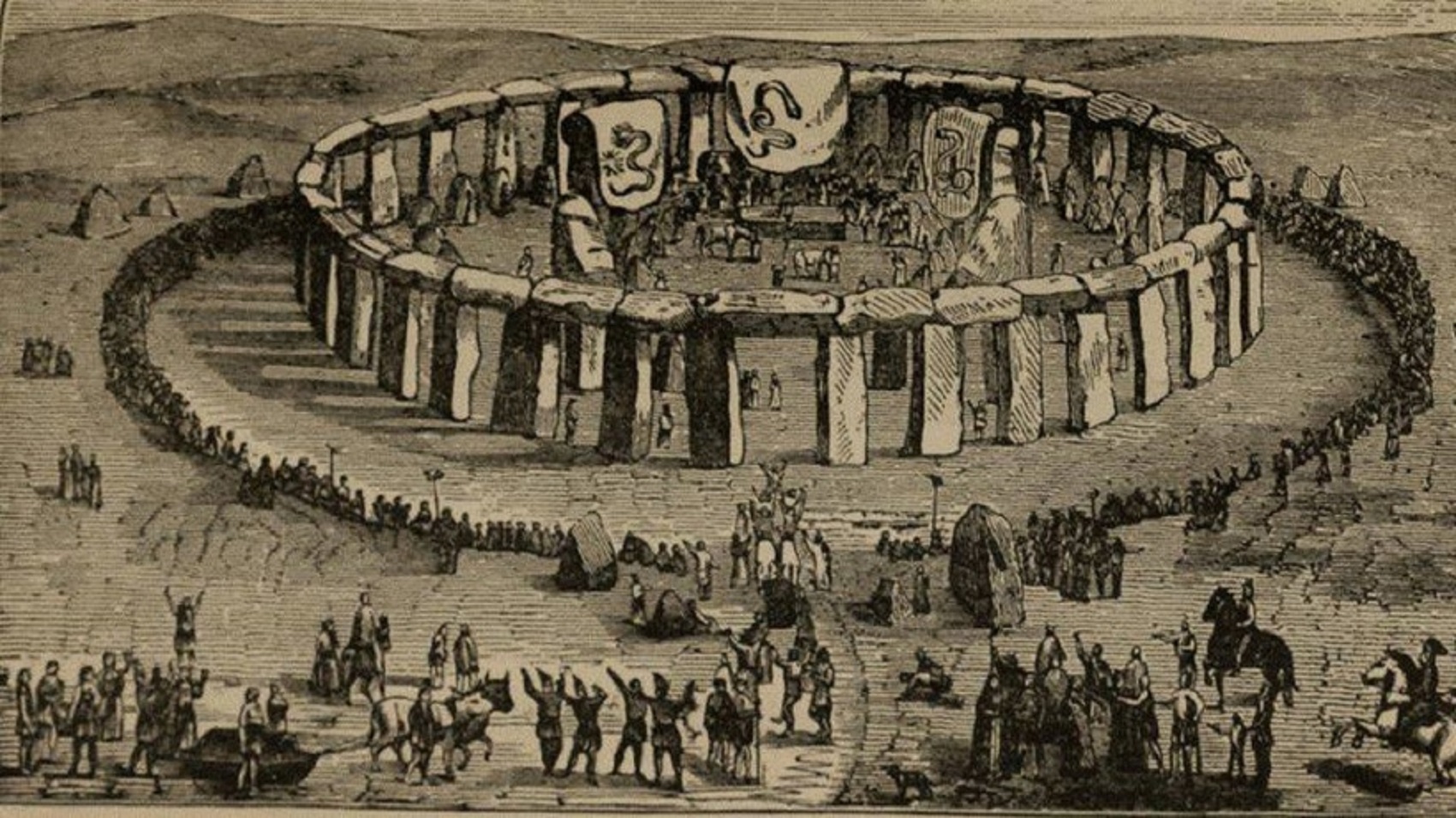
Picture ref
“Stonehenge served as one of the earliest large-scale feast locations in Britain, and research indicates attendees transported the animals for hundreds of miles as a contribution. Further demonstrating a scale of movement and level of social complexity not previously appreciated.” ref
What is interesting is how possibly the same or similar account may be suitable for the site of Gobekli Tepe as well, as it too was the earliest large-scale feast locations in the fertile crescent and is thought to have had attendees potentially coming long distances to reach Gobekli Tepe.
“The ancient Britons who built Stonehenge were descended from migrants with origins in modern-day Turkey, scientists have claimed. Genetics has revealed that a dramatic ‘population replacement’ took place after tribes of ‘Anatolian (Turkey) farmers’ started to arrive these Neolithic incomers supplanted the Mesolithic population in most of Britain bringing farming techniques with them but they are also believed to have introduced the tradition of building stone monuments as well.” ref


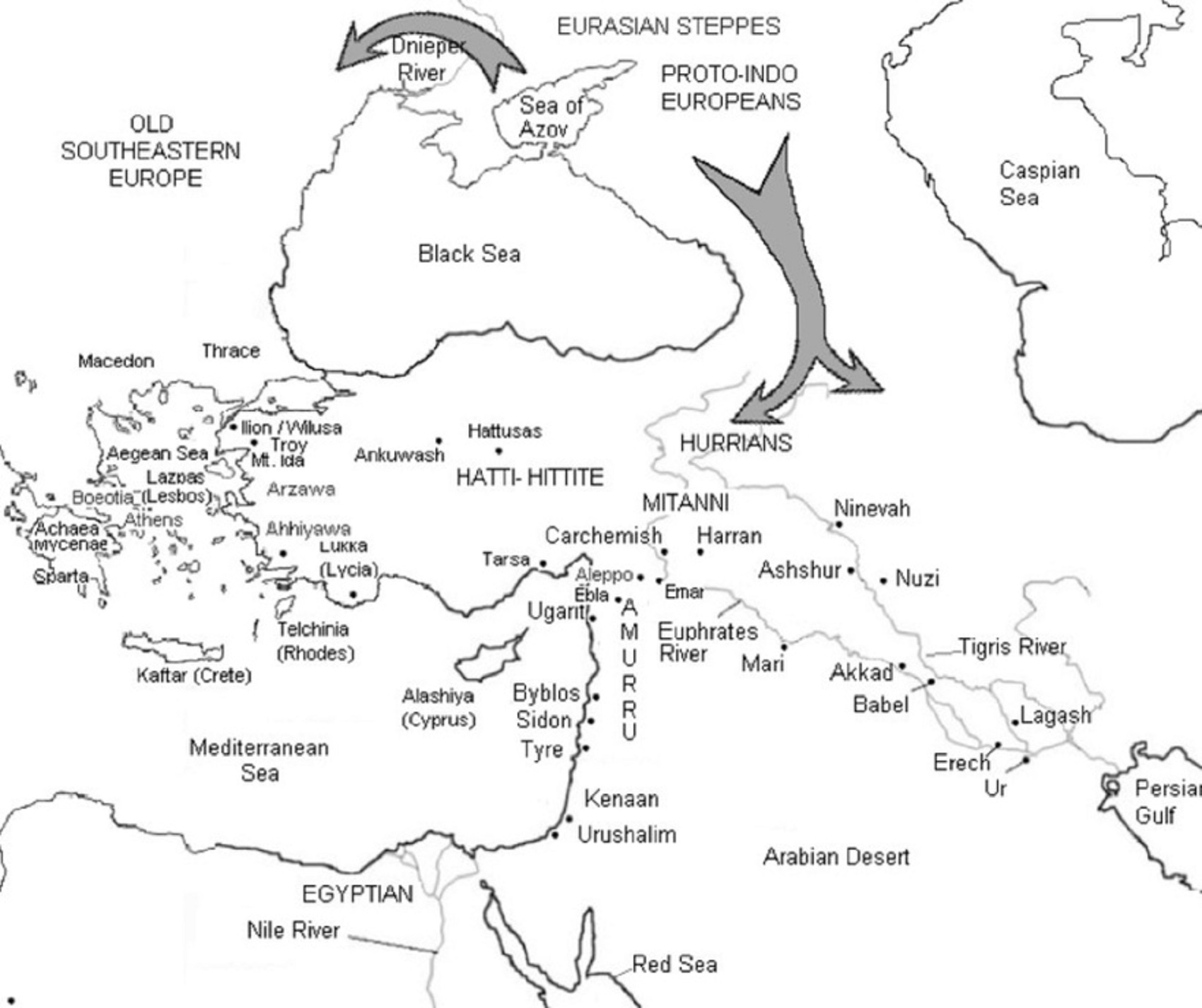

“Amurru and Martu are names given in Akkadian and Sumerian texts to the god of the Amorite/Amurru people, often forming part of personal names. He is sometimes called Ilu Amurru (DMAR.TU). He was the patron god of the Mesopotamian city of Ninab, whose exact location is unknown. He was occasionally called “lord of the steppe” or “lord of the mountain.” ref
“Amurru/Martu was probably a western Semitic god originally. He is sometimes described as a ‘shepherd’ or as a storm god, and as a son of the sky-god Anu. He is sometimes called bêlu šadī or bêl šadê, ‘lord of the mountain’; dúr-hur-sag-gá sikil-a-ke, ‘He who dwells on the pure mountain’; and kur-za-gan ti-[la], ‘who inhabits the shining mountain’. In Cappadocian Zinčirli inscriptions he is called ì-li a-bi-a, ‘the god of my father‘.” ref
“Bêl Šadê could also have become the fertility-god ‘Ba’al‘, possibly adopted by the Canaanites, a rival and enemy of the Hebrew God YHWH, and famously combatted by the Hebrew prophet Elijah.” ref
“Amurru also has storm-god features. Like Adad, Amurru bears the epithet ramān ‘thunderer’, and he is even called bāriqu ‘hurler of the thunderbolt’ and Adad ša a-bu-be ‘Adad of the deluge’. Yet his iconography is distinct from that of Adad, and he sometimes appears alongside Adad with a baton of power or throwstick, while Adad bears a conventional thunderbolt.” ref
“Amurru’s wife is usually the goddess Ašratum (see Asherah) who in northwest Semitic tradition and Hittite tradition appears as wife of the god El which suggests that Amurru may indeed have been a variation of that god. If Amurru was identical with Ēl, it would explain why so few Amorite names are compounded with the name Amurru, but so many are compounded with Il; that is, with El.” ref
“Another tradition about Amurru’s wife (or one of Amurru’s wives) gives her name as Belit-Sheri, ‘Lady of the Desert’. A third tradition appears in a Sumerian poem in pastoral style, which relates how the god Martu came to marry Adg̃ar-kidug the daughter of the god Numushda of the city of Inab. It contains a speech expressing urbanite Sumerian disgust at uncivilized, nomadic Amurru life which Adg̃ar-kidug ignores, responding only: “I will marry Martu!.” ref
“Amorite (Sumerian ???????? MAR.TU, Akkadian Tidnum or Amurrūm, Egyptian Amar, Hebrew ’emōrî אמורי) refers to a Semitic people who occupied large parts of Mesopotamia from at least the second half of the third millennium BC. The term Amurru refers to them, as well as to their principal deity.” ref
“In the earliest Sumerian sources, beginning about 2400 BC, the land of the Amorites (“the Mar.tu land”) is associated with the West, including Syria and Canaan. They appear as nomadic people in the Mesopotamian sources, and they are especially connected with the mountainous region of Jebel Bishri in Syria called as the “mountain of the Amorites”. The ethnic terms Amurru and Amar were used for them in Assyria and Egypt respectively.” ref
“From the 21st century BC and likely triggered by the 22nd century BC drought, a large-scale migration of Amorite tribes infiltrated Mesopotamia, precipitating the downfall of the Neo-Sumerian Third Dynasty of Ur, and acquiring a series of powerful kingdoms, culminating in the triumph under Hammurabi of one of them, that of Babylon.” ref
“Known Amorites (mostly those of Mari) wrote in a dialect of Akkadian found on tablets dating from 1800–1750 BC showing many northwest Semitic forms and constructions. The Amorite language was presumably a northwest Semitic dialect. The main sources for our extremely limited knowledge about the language are proper names, not Akkadian in style, that are preserved in such texts.” ref
“In early inscriptions, all western lands, including Syria and Canaan, were known as “the land of the Amorites”. “The MAR.TU land” appears in the earliest Sumerian texts, such as Enmerkar and the Lord of Aratta, as well as early tablets from Ebla; and for the Akkadian kings Mar.tu was one of the “Four Quarters” surrounding Akkad, along with Subartu, Sumer, and Elam. The Akkadian king Naram-Sin records campaigns against them in northern Syria ca. 2240 BC, and his successor Shar-Kali-Sharri followed suit.” ref
“By the time of the Neo-Sumerian Ur-III empire, immigrating Amorites had become such a force that kings such as Shu-Sin were obliged to construct a 170-mile wall from the Tigris to the Euphrates to hold them off. These Amorites appear as nomadic clans ruled by fierce tribal chiefs, who forced themselves into lands they needed to graze their herds. Some of the Akkadian literature of this era speaks disparagingly of the Amorites, and implies that the neo-Sumerians viewed their nomadic way of life with disgust and contempt, for example:
“The MAR.TU who know no grain…. The MAR.TU who know no house nor town, the boors of the mountains…. The MAR.TU who digs up truffles… who does not bend his knees (to cultivate the land), who eats raw meat, who has no house during his lifetime, who is not buried after death…They have prepared wheat and gú-nunuz (grain) as a confection, but an Amorite will eat it without even recognizing what it contains!” ref
“As the centralized structure of the neo-Sumerian empire of Ur slowly collapsed, the component regions began to reassert their former independence, and places, where Amorites resided, were no exception. Elsewhere, armies of Elam were attacking and weakening the empire, making it vulnerable. Some Amorites aggressively took advantage of the failing empire to seize power for themselves. There was not an Amorite invasion as such, but Amorites did ascend to power in many locations, especially during the reign of the last king of the Ur-III Dynasty, Ibbi-Sin. Leaders with Amorite names assumed power in various places, including Isin, Larsa, and Babylon. The Elamites finally sacked Ur in ca. 2004 BC. Sometime later, the most powerful ruler in Mesopotamia (immediately preceding the rise of Hammurabi of Babylon) was Shamshi-Adad I, another Amorite.” ref
Effects on Mesopotamia
“The rise of the Amorite kingdoms in Mesopotamia brought about deep and lasting repercussions in its political, social, and economic structure. The division into kingdoms replaced the Sumerian city-state. Men, land, and cattle ceased to belong physically to the gods or to the temples and the king. The new monarchs gave, or let out for an indefinite period, numerous parcels of royal or sacerdotal land, freed the inhabitants of several cities from taxes and forced labor, and seem to have encouraged a new society to emerge, a society of big farmers, free citizens, and enterprising merchants which was to last throughout the ages. The priest assumed the service of the gods, and cared for the welfare of his subjects, but the economic life of the country was no longer exclusively (or almost exclusively) in their hands.” ref
“In general terms, Mesopotamian civilization survived the arrival of Amorites, as it had survived the Akkadian domination and the restless period that had preceded the rise of the Third Dynasty of Ur. The religious, ethical, and artistic directions in which Mesopotamia had been developing since earliest times, were not greatly impacted by the Amorites’ hegemony. They continued to worship the Sumerian gods, and the older Sumerian myths and epic tales were piously copied, translated, or adapted, generally with only minor alterations. As for the scarce artistic production of the period, there is little to distinguish it from the preceding Ur-III era.” ref
“The era of the Amorite kingdoms, ca. 2000–1600 BC, is sometimes known as the “Amorite period” in Mesopotamian history. The principal Amorite dynasties arose in Mari, Yamkhad, Qatna, Assur (under Shamshi-Adad I), Isin, Larsa, and Babylon. This era ended with the Hittite sack of Babylon (c. 1595 BC) which brought new ethnic groups—particularly Kassites and Hurrians—to the forefront in Mesopotamia. From the 15th century BC onward, the term Amurru is usually applied to the region extending north of Canaan as far as Kadesh on the Orontes.” ref
Biblical Amorites
“The term Amorites is used in the Bible to refer to certain highland mountaineers who inhabited the land of Canaan, described in Gen. 10:16 as descendants of Canaan, son of Ham. They are described as a powerful people of great stature “like the height of the cedars,” who had occupied the land east and west of the Jordan; their king, Og, being described as the last “of the remnant of the giants” (Deut. 3:11). The terms Amorite and Canaanite seem to be used more or less interchangeably, Canaan being more general, and Amorite a specific component among the Canaanites who inhabited the land.” ref
“The Biblical Amorites seem to have originally occupied the region stretching from the heights west of the Dead Sea (Gen. 14:7) to Hebron (13:8; Deut. 3:8; 4:46-48), embracing “all Gilead and all Bashan” (Deut. 3:10), with the Jordan valley on the east of the river (4:49), the land of the “two kings of the Amorites,” Sihon and Og (Deut. 31:4; Josh. 2:10; 9:10). Both Sihon and Og were independent kings.” ref
“These Amorites seem to have been linked to the Jerusalem region, and the Jebusites may have been a subgroup of them. The southern slopes of the mountains of Judea are called the “mount of the Amorites” (Deut. 1:7, 19, 20). Five kings of the Amorites were first defeated with great slaughter by Joshua (10:10). They were said to have been utterly destroyed at the waters of Merom by Joshua (Josh. 11:8).” ref
“It is mentioned that in the days of Samuel, there was peace between them and the Israelites (1 Sam. 7:14). The Gibeonites were said to be their descendants, being an offshoot of the Amorites that made a covenant with the Hebrews; when Saul would break that vow and kill some of the Gibeonites, God sent a famine to Israel.” ref
Indo-European Amorites
“The view that Amorites were fierce tall nomads led to an idiosyncratic theory among some writers in the 19th Century that they were a tribe of “Germanic” warriors who at one point dominated the Israelites. This was because the evidence fitted then-current models of Indo-European migrations. This theory originated with Felix von Luschan, who later abandoned it.” ref
Amorite Jesus and David
“Houston Stewart Chamberlain, claimed that King David and Jesus were both Aryans of Amorite extraction. This argument was repeated by the Nazi ideologist Alfred Rosenberg.” ref

“Anu, Anum, or Ilu (Akkadian: ???????? DAN), also called An (Sumerian: ???? AN, from ???? an “Sky”, “Heaven”), is the divine personification of the sky, supreme god, and ancestor of all the deities in ancient Mesopotamian religion. Anu was believed to be the supreme source of all authority, for the other gods and for all mortal rulers, and he is described in one text as the one “who contains the entire universe”. He is identified with the part of the sky located between +17° and -17° declination which contains 23 constellations.” ref
“Along with his sons Enlil and Enki, Anu constitutes the highest divine triad personifying the three bands of constellations of the vault of the sky. By the time of the earliest written records, Anu was rarely worshipped, and veneration was instead devoted to his son Enlil. But, throughout Mesopotamian history, the highest deity in the pantheon was always said to possess the anûtu, meaning “Heavenly power”. Anu’s primary role in myths is as the ancestor of the Anunnaki, the major deities of Sumerian religion. His primary cult center was the Eanna temple in the city of Uruk, but, by the Akkadian Period (c. 2334–2154 BCE), his authority in Uruk had largely been ceded to the goddess Inanna, the Queen of Heaven.” ref
“Anu’s consort in the earliest Sumerian texts is the goddess Uraš, but she is later the goddess Ki and, in Akkadian texts, the goddess Antu, whose name is a feminine form of Anu. Anu briefly appears in the Akkadian Epic of Gilgamesh, in which his daughter Ishtar (the East Semitic equivalent to Inanna) persuades him to give her the Bull of Heaven so that she may send it to attack Gilgamesh. The incident results in the death of Enkidu.” ref
“In another legend, Anu summons the mortal hero Adapa before him for breaking the wing of the south wind. Anu orders for Adapa to be given the food and water of immortality, which Adapa refuses, having been warned beforehand by Enki that Anu will offer him the food and water of death. In ancient Hittite religion, Anu is a former ruler of the gods, who was overthrown by his son Kumarbi, who bit off his father’s genitals and gave birth to the storm god Teshub. Teshub overthrew Kumarbi, avenged Anu’s mutilation, and became the new king of the gods. This story was the later basis for the castration of Ouranos in Hesiod‘s Theogony.” ref
“In Mesopotamian religion, Anu was the personification of the sky, the utmost power, the supreme god, the one “who contains the entire universe”. He was identified with the north ecliptic pole centered in Draco. His name meant the “One on High”, and together with his sons Enlil and Enki (Ellil and Ea in Akkadian), he formed a triune conception of the divine, in which Anu represented a “transcendental” obscurity, Enlil the “transcendent” and Enki the “immanent” aspect of the divine. The three great gods and the three divisions of the heavens were Anu (the ancient god of the heavens), Enlil (son of Anu, god of the air and the forces of nature, and lord of the gods), and Ea (the beneficent god of earth and life, who dwelt in the abyssal waters). The Babylonians divided the sky into three parts named after them: The equator and most of the zodiac occupied the Way of Anu, the northern sky was the Way of Enlil, and the southern sky was the Way of Ea. The boundaries of each Way were at 17°N and 17°S.” ref
“Though Anu was the supreme god, he was rarely worshipped, and, by the time that written records began, the most important cult was devoted to his son Enlil. Anu’s primary role in the Sumerian pantheon was as an ancestor figure; the most powerful and important deities in the Sumerian pantheon were believed to be the offspring of Anu and his consort Ki. These deities were known as the Anunnaki, which means “offspring of Anu”. Although it is sometimes unclear which deities were considered members of the Anunnaki, the group probably included the “seven gods who decree”: Anu, Enlil, Enki, Ninhursag, Nanna, Utu, and Inanna.” ref
“Anu’s main cult center was the Eanna temple, whose name means “House of Heaven” (Sumerian: e2-anna; Cuneiform: ???????? E2.AN), in Uruk. Although the temple was originally dedicated to Anu, it was later transformed into the primary cult center of Inanna. After its dedication to Inanna, the temple seems to have housed priestesses of the goddess.” ref
“Anu was believed to be a source of all legitimate power; he was the one who bestowed the right to rule upon gods and kings alike. According to scholar Stephen Bertman, Anu “… was the supreme source of authority among the gods, and among men, upon whom he conferred kingship. As heaven’s grand patriarch, he dispensed justice and controlled the laws known as the meh that governed the universe.” In inscriptions commemorating his conquest of Sumer, Sargon of Akkad, the founder of the Akkadian Empire, proclaims Anu and Inanna as the sources of his authority. A hymn from the early second millennium BCE professes that “his utterance ruleth over the obedient company of the gods.” ref
“Anu’s original name in Sumerian is An, of which Anu is a Semiticized form. Anu was also identified with the Semitic god Ilu or El from early on. The functions of Anu and Enlil frequently overlapped, especially during later periods as the cult of Anu continued to wane and the cult of Enlil rose to greater prominence. In later times, Anu was fully superseded by Enlil. Eventually, Enlil was, in turn, superseded by Marduk, the national god of ancient Babylon. Nonetheless, references to Anu’s power were preserved through archaic phrases used in reference to the ruler of the gods. The highest god in the pantheon was always said to possess the anûtu, which literally means “Heavenly power”. In the Babylonian Enûma Eliš, the gods praise Marduk, shouting “Your word is Anu!” ref
“Although Anu was a very important deity, his nature was often ambiguous and ill-defined; he almost never appears in Mesopotamian artwork and has no known anthropomorphic iconography. During the Kassite Period (c. 1600—1155 BCE) and Neo-Assyrian Period (911—609 BCE), Anu was represented by a horned cap. The Amorite god Amurru was sometimes equated with Anu. Later, during the Seleucid Empire (213—63 BCE), Anu was identified with Enmešara and Dumuzid.” ref
“The earliest Sumerian texts make no mention of where Anu came from or how he came to be the ruler of the gods; instead, his preeminence is simply assumed. In early Sumerian texts from the third millennium BC, Anu’s consort is the goddess Uraš; the Sumerians later attributed this role to Ki, the personification of the earth. The Sumerians believed that rain was Anu’s seed and that, when it fell, it impregnated Ki, causing her to give birth to all the vegetation of the land. During the Akkadian Period, Ki was supplanted by Antu, a goddess whose name is probably a feminine form of Anu. The Akkadians believed that rain was milk from the clouds, which they believed were Antu’s breasts.” ref
“Anu is commonly described as the “father of the gods”, and a vast array of deities were thought to have been his offspring over the course of Mesopotamian history. Inscriptions from Lagash dated to the late third millennium BC identify Anu as the father of Gatumdug, Baba, and Ninurta. Later literary texts proclaim Adad, Enki, Enlil, Girra, Nanna-Suen, Nergal, and Šara as his sons and Inanna-Ishtar, Nanaya, Nidaba, Ninisinna, Ninkarrak, Ninmug, Ninnibru, Ninsumun, Nungal, and Nusku as his daughters. The demons Lamaštu, Asag, and the Sebettu were thought to have been Anu’s creations.” ref
Sumerian creation myth: Sumerian creation myth
“The main source of information about the Sumerian creation myth is the prologue to the epic poem Gilgamesh, Enkidu, and the Netherworld, which briefly describes the process of creation: at first, there is only Nammu, the primeval sea. Then, Nammu gives birth to An (the Sumerian name for Anu), the sky, and Ki, the earth. An and Ki mate with each other, causing Ki to give birth to Enlil, the god of the wind. Enlil separates An from Ki and carries off the earth as his domain, while An carries off the sky.” ref
“In Sumerian, the designation “An” was used interchangeably with “the heavens” so that in some cases it is doubtful whether, under the term, the god An or the heavens is being denoted. In Sumerian cosmogony, heaven was envisioned as a series of three domes covering the flat earth; Each of these domes of heaven was believed to be made of a different precious stone. An was believed to be the highest and outermost of these domes, which was thought to be made of reddish stone. Outside of this dome was the primordial body of water known as Nammu. An’s sukkal, or attendant, was the god Ilabrat.” ref
Inanna myths
“Inanna and Ebih, otherwise known as Goddess of the Fearsome Divine Powers, is a 184-line poem written in Sumerian by the Akkadian poetess Enheduanna. It describes An’s granddaughter Inanna’s confrontation with Mount Ebih, a mountain in the Zagros mountain range. An briefly appears in a scene from the poem in which Inanna petitions him to allow her to destroy Mount Ebih. An warns Inanna not to attack the mountain, but she ignores his warning and proceeds to attack and destroy Mount Ebih regardless.” ref
“The poem Inanna Takes Command of Heaven is an extremely fragmentary, but important, account of Inanna’s conquest of the Eanna temple in Uruk. It begins with a conversation between Inanna and her brother Utu in which Inanna laments that the Eanna temple is not within their domain and resolves to claim it as her own. The text becomes increasingly fragmentary at this point in the narrative, but appears to describe her difficult passage through a marshland to reach the temple, while a fisherman instructs her on which route is best to take. Ultimately, Inanna reaches An, who is shocked by her arrogance, but nevertheless concedes that she has succeeded and that the temple is now her domain. The text ends with a hymn expounding Inanna’s greatness. This myth may represent an eclipse in the authority of the priests of An in Uruk and a transfer of power to the priests of Inanna.” ref
Akkadian
Epic of Gilgamesh
“In a scene from the Akkadian Epic of Gilgamesh, written in the late second millennium BC, Anu’s daughter Ishtar, the East Semitic equivalent to Inanna, attempts to seduce the hero Gilgamesh. When Gilgamesh spurns her advances, Ishtar angrily goes to heaven and tells Anu that Gilgamesh has insulted her. Anu asks her why she is complaining to him instead of confronting Gilgamesh herself. Ishtar demands that Anu give her the Bull of Heaven and swears that if he does not give it to her, she will break down the gates of the Underworld and raise the dead to eat the living. Anu gives Ishtar the Bull of Heaven, and Ishtar sends it to attack Gilgamesh and his friend Enkidu.” ref
Adapa myth
“In the myth of Adapa, which is first attested during the Kassite Period, Anu notices that the south wind does not blow towards the land for seven days. He asks his sukkal Ilabrat the reason. Ilabrat replies that is because Adapa, the priest of Ea (the East Semitic equivalent of Enki) in Eridu, has broken the south wind’s wing. Anu demands that Adapa be summoned before him, but, before Adapa sets out, Ea warns him not to eat any of the food or drink any of the water the gods offer him, because the food and water are poisoned. Adapa arrives before Anu and tells him that the reason he broke the south wind’s wing was because he had been fishing for Ea and the south wind had caused a storm, which had sunk his boat. Anu’s doorkeepers Dumuzid and Ningishzida speak out in favor of Adapa. This placates Anu’s fury and he orders that, instead of the food and water of death, Adapa should be given the food and water of immortality as a reward. Adapa, however, follows Ea’s advice and refuses the meal.” ref
“The story of Adapa was beloved by scribes, who saw him as the founder of their trade and a vast plethora of copies and variations of the myth have been found across Mesopotamia, spanning the entire course of Mesopotamian history. The story of Adapa’s appearance before Anu has been compared to the later Jewish story of Adam and Eve, recorded in the Book of Genesis. In the same way that Anu forces Adapa to return to earth after he refuses to eat the food of immortality, Yahweh in the biblical story drives Adam out of the Garden of Eden to prevent him from eating the fruit from the tree of life. Similarly, Adapa was seen as the prototype for all priests;[49] whereas Adam in the Book of Genesis is presented as the prototype of all mankind.” ref
Erra and Išum
“In the epic poem Erra and Išum, which was written in Akkadian in the eighth century BC, Anu gives Erra, the god of destruction, the Sebettu, which are described as personified weapons. Anu instructs Erra to use them to massacre humans when they become overpopulated and start making too much noise (Tablet I, 38ff).” ref
Hittite
“In Hittite mythology, Anu overthrows his father Alalu and proclaims himself ruler of the universe. He himself is later overthrown by his own son Kumarbi; Anu attempts to flee, but Kumarbi bites off Anu’s genitals and swallows them. Kumarbi then banishes Anu to the underworld, along with his allies, the old gods, whom the Hittites syncretized with the Anunnaki. As a consequence of swallowing Anu’s genitals, Kumarbi becomes impregnated with Anu’s son Teshub and four other offspring. After he grows to maturity, Teshub overthrows his father Kumarbi, thus avenging his other father Anu’s overthrow and mutilation.” ref
Later influence
“The series of divine coups described in the Hittite creation myth later became the basis for the Greek creation story described in the long poem Theogony, written by the Boeotian poet Hesiod in the seventh century BC. In Hesiod’s poem, the primeval sky-god Ouranos is overthrown and castrated by his son Kronos in much the same manner that Anu is overthrown and castrated by Kumarbi in the Hittite story. Kronos is then, in turn, overthrown by his own son Zeus. In one Orphic myth, Kronos bites off Ouranos’s genitals in exactly the same manner that Kumarbi does to Anu in the Hittite myth. Nonetheless, Robert Mondi notes that Ouranos never held mythological significance to the Greeks comparable with Anu’s significance to the Mesopotamians. Instead, Mondi calls Ouranos “a pale reflection of Anu”, noting that “apart from the castration myth, he has very little significance as a cosmic personality at all and is not associated with kingship in any systematic way.” ref
“According to Walter Burkert, an expert on ancient Greek religion, direct parallels also exist between Anu and the Greek god Zeus. In particular, the scene from Tablet VI of the Epic of Gilgamesh in which Ishtar comes before Anu after being rejected by Gilgamesh and complains to her mother Antu, but is mildly rebuked by Anu, is directly paralleled by a scene from Book V of the Iliad. In this scene, Aphrodite, the later Greek development of Ishtar, is wounded by the Greek hero Diomedes while trying to save her son Aeneas. She flees to Mount Olympus, where she cries to her mother Dione, is mocked by her sister Athena, and is mildly rebuked by her father Zeus. Not only is the narrative parallel significant, but so is the fact that Dione’s name is a feminization of Zeus’s own, just as Antu is a feminine form of Anu. Dione does not appear throughout the rest of the Iliad, in which Zeus’s consort is instead the goddess Hera. Burkert therefore concludes that Dione is clearly a calque of Antu.” ref
“The most direct equivalent to Anu in the Canaanite pantheon is Shamem, the personification of the sky, but Shamem almost never appears in myths and it is unclear whether the Canaanites ever regarded him as a previous ruler of the gods at all. Instead, the Canaanites seem to have ascribed Anu’s attributes to El, the current ruler of the gods. In later times, the Canaanites equated El with Kronos rather than with Ouranos, and El’s son Baal with Zeus. A narrative from Canaanite mythology describes the warrior-goddess Anat coming before El after being insulted, in a way that directly parallels Ishtar coming before Anu in the Epic of Gilgamesh.” ref
“El is characterized as the malk olam (“the eternal king”) and, like Anu, he is “consistently depicted as old, just, compassionate, and patriarchal”. In the same way that Anu was thought to wield the Tablet of Destinies, Canaanite texts mentions decrees issued by El that he alone may alter. In late antiquity, writers such as Philo of Byblos attempted to impose the dynastic succession framework of the Hittite and Hesiodic stories onto Canaanite mythology, but these efforts are forced and contradict what most Canaanites seem to have actually believed. Most Canaanites seem to have regarded El and Baal as ruling concurrently:
El is king, Baal becomes king. Both are kings over other gods, but El’s kingship is timeless and unchanging. Baal must acquire his kingship, affirm it through the building of his temple, and defend it against adversaries; even so he loses it, and must be enthroned anew. El’s kingship is static, Baal’s is dynamic.” ref


ref, ref, ref, ref, ref, ref, ref, ref, ref, ref, ref, ref, ref
By day the LORD went ahead of them in a pillar of cloud to guide them on their way and by night in a pillar of fire to give them light, so that they could travel by day or night.
- By day the “Bible God” was in a cloud pillar.
- By night the “Bible God” was in a fire pillar.

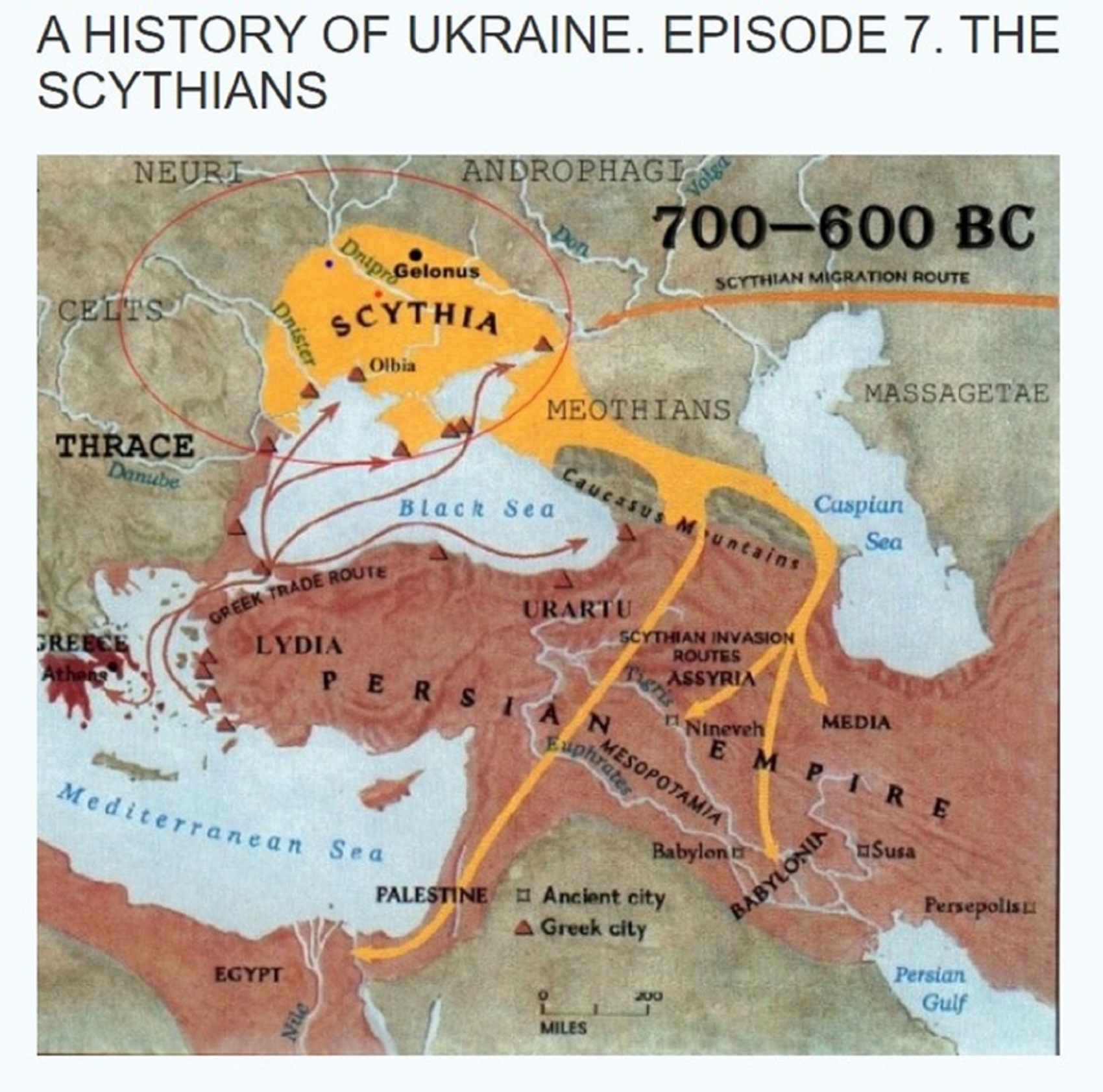

Picture Link: ref
“The Nagyrév culture was a bronze-age culture that existed in what is now Nagyrév, Hungary with a general geographical range of Hungary and Slovakia. Most burials were of cremated remains and the ashes would either be spread on the ground of the site or occasionally placed in urns. Most graves contained up to fourteen pottery pieces that held food, water, and other possessions for the journey to the afterlife. Pottery vessels were decorated with geometric designs with a symbolic meaning. Some pots with diamond, square or arm like looking shapes were painted around the circumference of the vessels.” ref
“The Nagyrév culture was preceded by the Vučedol culture flourished between 3000 and 2200 BCE (the Eneolithic period of earliest copper-smithing), centered in Syrmia and eastern Slavonia on the right bank of the Danube river, but possibly spreading throughout the Pannonian plain and western Balkans and southward. It was thus contemporary with the Sumer period in Mesopotamia, the Early Dynastic period in Egypt and the earliest settlements of Troy (Troy I and II). Some authors regard it as an Indo-European culture. The Vučedol culture is the final eneolithic culture of the region, displaying characteristically common use of the war axe in its “Banniabik” form. Cult objects suggest the practice of new cults very different from the Neolithic Magna Mater conception: cult of the Deer,[4] womb-shaped solar motives, figures of women in clothes without sexual or fertility decoration, symbols of double axe. In pottery, new forms and a new rich decoration, are characterized by the spectacular find, the Vučedol dove. The Vučedol culture developed from two older eneolithic cultures: the Baden culture, mainly in the Pannonian plain, and the Kostolac culture in northern Serbia and western Romania, so the primary region of Vučedol development is eastern Croatia and the Syrmia region. The houses at the Vučedol site were also places of birth and burial. A number of human skeletons were found in the pits that once served as food storage pits. Their bodies were placed in a ritual way, with some possible indications of human sacrifice. Also, marks on the foreheads of skulls were found that could be attributed to some kind of initiation in early childhood by a drop of molten copper. The community chief was the shaman-smith, possessing the arcane knowledge of avoiding poisonous arsenic gas which is connected to the technology of coppersmithing as well as understanding the year cycle. Still, the whole life of shaman-smith could not pass without biological consequences of chronic arsenic exposure: slow loss of body movement coordination, and at the same time, stronger sexual potency. “That is why”, according to Aleksandar Durman, “all eneolithic, or later gods of metallurgy are identified with fertility, and also why all gods in almost all early cultures – limp”. It was a society of deep social changes and stratification that led to the birth of tribal and military aristocracy.” ref
“Marija Gimbutas characterized the Bell Beaker culture complex as an amalgam of the Vučedol and Yamna culture, formed after the incursion of the Yamna people into the Vučedol milieu and the interaction of these peoples for three or four centuries, from circa 3000 BCE or around 5,020 years ago.” ref
“In modern times, Vučedol ceramics have become famous worldwide. A very characteristic bi-conical shape and typical ornaments evolved, in many cases with typical “handles” which were almost non-functional, but were key to understanding ornaments that had symbolic meanings, representing ideas such as “horizon”, “mountains”, “sky”, “underworld”, “sun”, “constellation of Orion“, “Venus“, et cetera. The “Vučedol Dove” made between 2,800 – 2,500 BCE or around 4,820 to 4,520 years ago is a ritual vessel made from baked clay. Three symbols of double axes and a necklace were incised on its neck with lines covering its wings and chest, and an unusual crest on the back of the head. One speculation is that the vessel is in the shape of the male partridge, a symbol of fertility, whose limping defensive behavior against attack by predators on a partridge nest on the ground linked it to the limping shaman-smith. Another is that the figure is an example of religious symbolism associated with a cult of the Great Mother or mother goddess type of faith.” ref
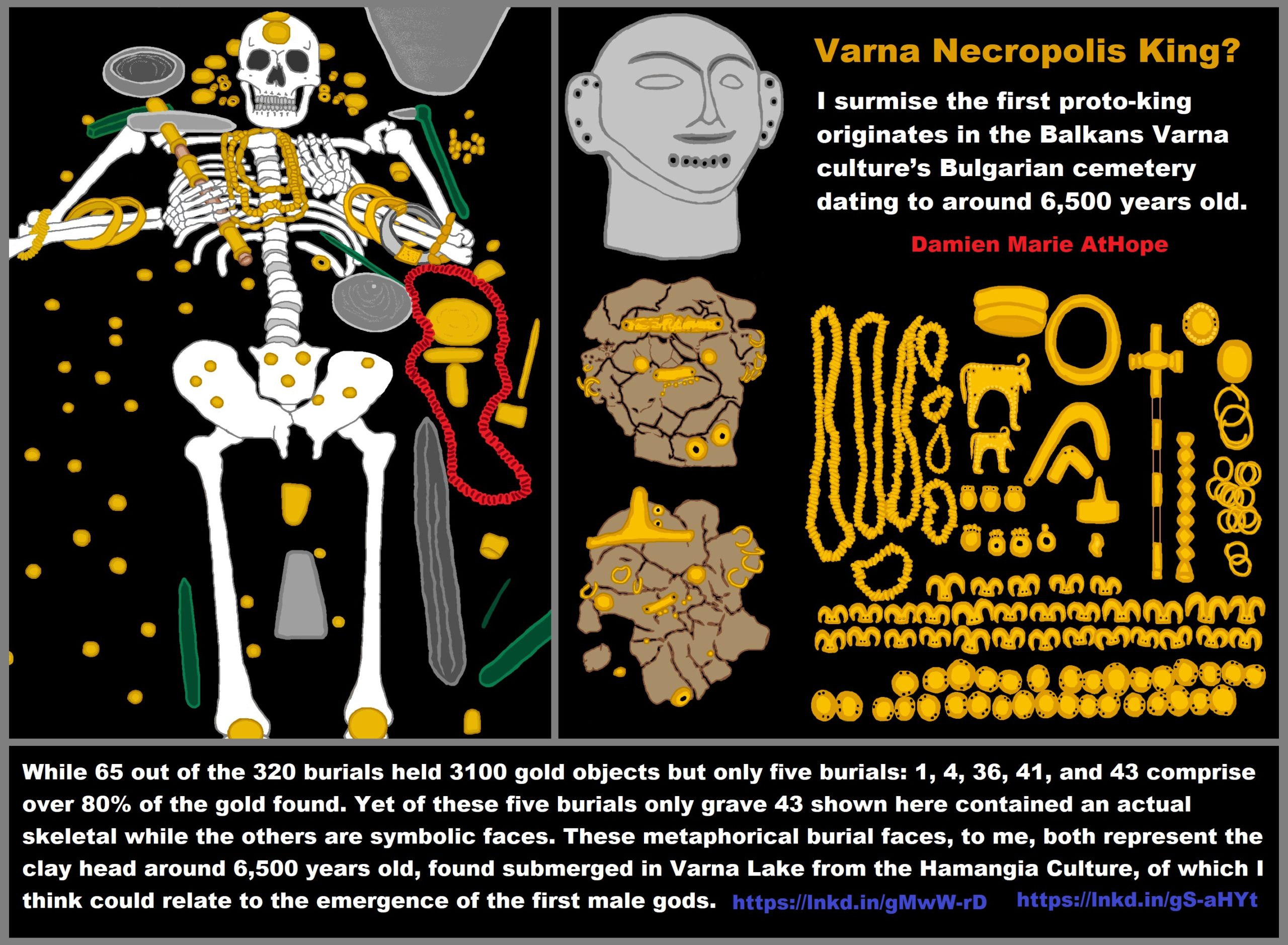

Seated Woman of Çatalhöyük
“The Seated Woman of Çatalhöyük (also Çatal Höyük) is a baked-clay, nude female form, seated between feline-headed arm-rests. It is generally thought to depict a corpulent and fertile Mother goddess in the process of giving birth while seated on her throne, which has two hand rests in the form of feline (lioness, leopard, or panther) heads in a Mistress of Animals motif. The statuette, one of several iconographically similar ones found at the site, is associated to other corpulent prehistoric goddess figures, of which the most famous is the Venus of Willendorf. It is a neolithic sculpture shaped by an unknown artist, and was completed in approximately 6000 BCE.” ref
Kubaba
“Kubaba is the only queen on the Sumerian King List, which states she reigned for 100 years – roughly in the Early Dynastic III period (ca. 2500–2330 BCE) of Sumerian history. A connection between her and a goddess known from Hurro–Hittite and later Luwian sources cannot be established on the account of spatial and temporal differences. Kubaba is one of very few women to have ever ruled in their own right in Mesopotamian history. Most versions of the king list place her alone in her own dynasty, the 3rd Dynasty of Kish, following the defeat of Sharrumiter of Mari, but other versions combine her with the 4th dynasty, that followed the primacy of the king of Akshak. Before becoming monarch, the king list says she was an alewife, brewess or brewster, terms for a woman who brewed alcohol.” ref
“Kubaba was a Syrian goddess associated particularly closely with Alalakh and Carchemish. She was adopted into the Hurrian and Hittite pantheons as well. After the fall of the Hittite empire, she continued to be venerated by Luwians. A connection between her and the similarly named legendary Sumerian queen Kubaba of Kish, while commonly proposed, cannot be established due to spatial and temporal differences. Emmanuel Laroche proposed in 1960 that Kubaba and Cybele were one and the same. This view is supported by Mark Munn, who argues that the Phrygian name Kybele developed from Lydian adjective kuvavli, first changed into kubabli and then simplified into kuballi, and finally kubelli. However, such an adjective is a purely speculative construction.” ref
Cybele
“Cybele (Phrygian: “Kubileya/Kubeleya Mother”, perhaps “Mountain Mother”) is an Anatolian mother goddess; she may have a possible forerunner in the earliest neolithic at Çatalhöyük, where statues of plump women, sometimes sitting, have been found in excavations. Phrygia‘s only known goddess, she was probably its national deity. Greek colonists in Asia Minor adopted and adapted her Phrygian cult and spread it to mainland Greece and to the more distant western Greek colonies around the 6th century BCE. In Greece, Cybele met with a mixed reception. She became partially assimilated to aspects of the Earth-goddess Gaia, of her possibly Minoan equivalent Rhea, and of the harvest–mother goddess Demeter. Some city-states, notably Athens, evoked her as a protector, but her most celebrated Greek rites and processions show her as an essentially foreign, exotic mystery-goddess who arrives in a lion-drawn chariot to the accompaniment of wild music, wine, and a disorderly, ecstatic following.” ref
“Uniquely in Greek religion, she had a eunuch mendicant priesthood. Many of her Greek cults included rites to a divine Phrygian castrate shepherd-consort Attis, who was probably a Greek invention. In Greece, Cybele became associated with mountains, town and city walls, fertile nature, and wild animals, especially lions. In Rome, Cybele became known as Magna Mater (“Great Mother”). The Roman State adopted and developed a particular form of her cult after the Sibylline oracle in 205 BCE recommended her conscription as a key religious ally in Rome’s second war against Carthage (218 to 201 BCE). Roman mythographers reinvented her as a Trojan goddess, and thus an ancestral goddess of the Roman people by way of the Trojan prince Aeneas. As Rome eventually established hegemony over the Mediterranean world, Romanized forms of Cybele’s cults spread throughout Rome’s empire. Greek and Roman writers debated and disputed the meaning and morality of her cults and priesthoods, which remain controversial subjects in modern scholarship.” ref

ref, ref, ref, ref, ref, ref, ref, ref, ref, ref, ref, ref, ref, ref, ref, ref, ref, ref, ref, ref, ref
Low Gods “Earth” or Tutelary deity and High Gods “Sky” or Supreme deity
“An Earth goddess is a deification of the Earth. Earth goddesses are often associated with the “chthonic” deities of the underworld. Ki and Ninhursag are Mesopotamian earth goddesses. In Greek mythology, the Earth is personified as Gaia, corresponding to Roman Terra, Indic Prithvi/Bhūmi, etc. traced to an “Earth Mother” complementary to the “Sky Father” in Proto-Indo-European religion. Egyptian mythology exceptionally has a sky goddess and an Earth god.” ref
“A mother goddess is a goddess who represents or is a personification of nature, motherhood, fertility, creation, destruction or who embodies the bounty of the Earth. When equated with the Earth or the natural world, such goddesses are sometimes referred to as Mother Earth or as the Earth Mother. In some religious traditions or movements, Heavenly Mother (also referred to as Mother in Heaven or Sky Mother) is the wife or feminine counterpart of the Sky father or God the Father.” ref
Tutelary deity
“A tutelary (also tutelar) is a deity or spirit who is a guardian, patron, or protector of a particular place, geographic feature, person, lineage, nation, culture, or occupation. The etymology of “tutelary” expresses the concept of safety and thus of guardianship. In late Greek and Roman religion, one type of tutelary deity, the genius, functions as the personal deity or daimon of an individual from birth to death. Another form of personal tutelary spirit is the familiar spirit of European folklore.” ref
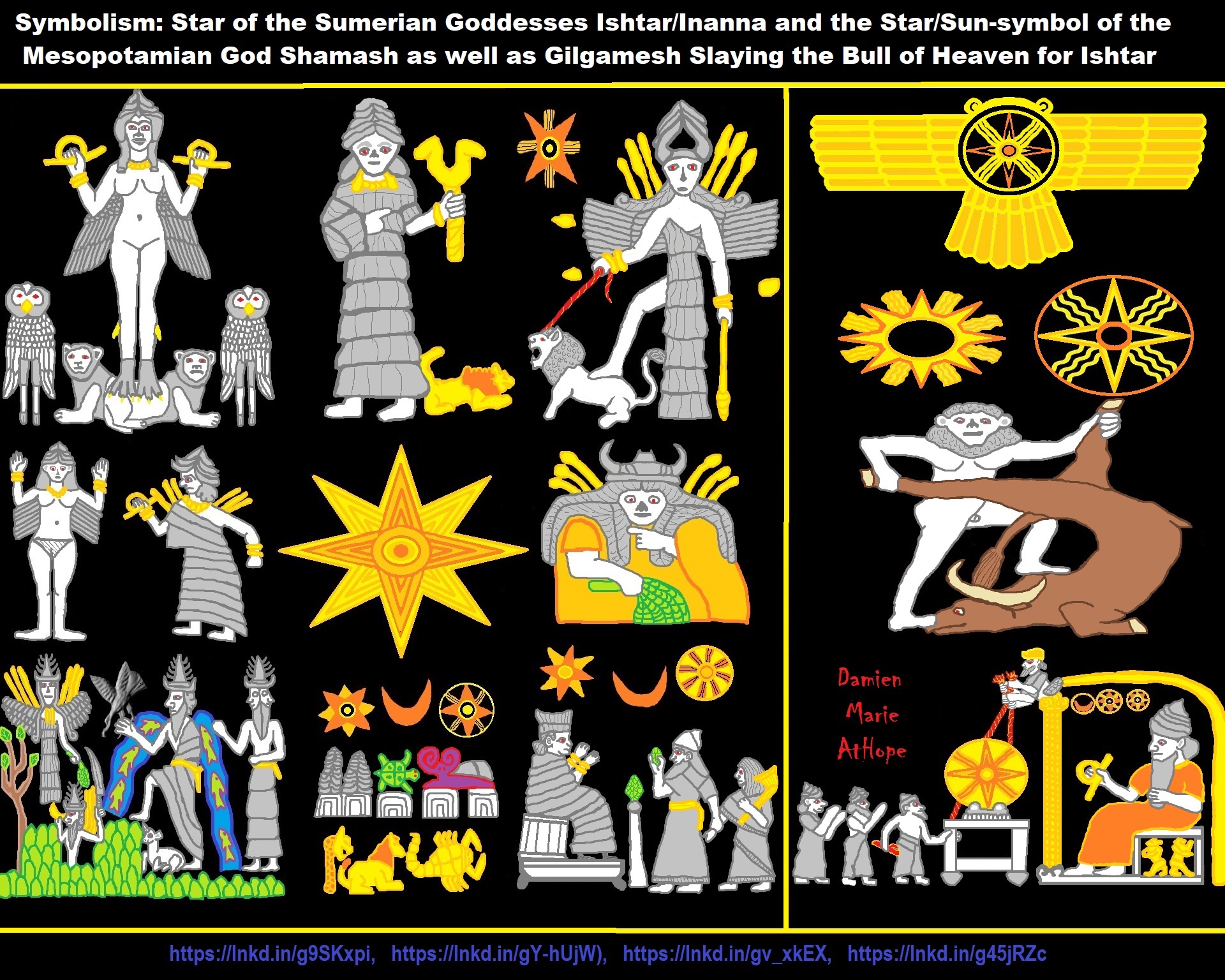
ref, ref, ref, ref, ref, ref, ref, ref, ref
Cory reads:
The Chachapoya culture indicated an egalitarian non-hierarchical society through a lack of archaeological evidence and a lack of power expressing architecture that would be expected for societal leaders such as royalty or aristocracy. In the 16th century, English writer Sir Thomas More portrayed a society based on common ownership of property in his treatise Utopia, whose leaders administered it through the application of reason.
Thomas Müntzer led a large Anabaptist communist movement during the German Peasants’ War. Engels’ analysis of Thomas Müntzer work in and the wider German Peasants’ War lead Marx and Engels to conclude that the communist revolution, when it occurred, would be led not by a peasant army but by an urban proletariat.
Several groupings in the English Civil War supported this idea, but especially the Diggers, who espoused clear communistic yet agrarian ideals. Oliver Cromwell and the Grandees’ attitude to these groups was at best ambivalent and often hostile.
Anthropologists such as Christopher Boehm, Chris Knight, and Jerome Lewis offer theoretical accounts to explain how communistic, assertively egalitarian social arrangements might have emerged in the prehistoric past. Despite differences in emphasis, these and other anthropologists follow Engels in arguing that evolutionary change—resistance to primate-style sexual and political dominance—culminated eventually in a revolutionary transition.
Richard Borshay Lee criticizes the mainstream and dominant culture’s long-time bias against the idea of primitive communism, deriding “Bourgeois ideology [that] would have us believe that primitive communism doesn’t exist. In popular consciousness it is lumped with romanticism, exoticism: the noble savage.”
Papers have argued that the depiction of hunter-gatherers as egalitarian is misleading. According to one paper published in Current Anthropology, while levels of inequality were low, they were still present, with the average hunter-gatherer group having a Gini coefficient of 0.25 (for comparison, this was attained by the nation of Denmark in 2007). This argument is in part supported by Testart and others, who has said that a society without property was not free from problems of exploitations, domination, or wars.
Marx and Engels, however, did not argue communism brought about equality as according to them equality was a concept without connection in physical reality. Testart does support Engels’ observations that societies without surplus are economically egalitarian and conversely that societies with surplus are unequal.
References
https://en.wikipedia.org/wiki/Primitive_communism
https://en.wikipedia.org/wiki/Pre-Marxist_communism
Understanding Religion Evolution as outlined by Damien Marie AtHope’s reasoned speculations from the evidence:
Pre-Animism (Africa, Eurasia at least 300,000 years ago)
Animism (Africa: 100,000 years ago)
Totemism (Europe: 50,000 years ago)
Shamanism (Siberia: 30,000 years ago)
Paganism (Turkey: 12,000 years ago)
Progressed organized religion (Egypt: 5,000 years ago), (Egypt, the First Dynasty 5,150 years ago)
CURRENT “World” RELIGIONS (after 4,000 years ago)
Early Atheistic Doubting (at least by 2,600 years ago)
Progressed organized religion (around 5,000 years ago)
To Damien, Progressed organized religion (such as that seen in Egypt: 5,000 years ago “The First Dynasty dates to 5,150 years ago”). This was a time of astonishing religion development and organization with a new state power to control. Around the time of 5,000 to 4,000 years ago, saw the growth of these riches, both intellectually and physically, became a source of contention on a political stage, and rulers sought the accumulation of more wealth and more power.
*The First Dynasty* Date: 3,150 B.C.E. (5,150 years ago) and the Beginning Rise of the Unequal State Government Hierarchies, Religions and Cultures Merger
The Pharaoh in ancient Egypt was the political and religious leader holding the titles ‘Lord of the Two Lands’ Upper and Lower Egypt and ‘High Priest of Every Temple’. In 5,150 years ago the First Dynasty appeared in Egypt and this reign was thought to be in accordance with the will of the gods; but the office of the king itself was not associated with the divine until later.
Around 4,890 years ago during the Second Dynasty, the King was linked with the divine and reign with the will of the gods. Following this, rulers of the later dynasties were equated with the gods and with the duties and obligations due to those gods. As supreme ruler of the people, the pharaoh was considered a god on earth, the intermediary between the gods and the people, and when he died, he was thought to become Osiris, the god of the dead. As such, in his role of ‘High Priest of Every Temple’, it was the pharaoh’s duty to build great temples and monuments celebrating his own achievements and paying homage to the gods of the land. Among the earliest civilizations that exhibit the phenomenon of divinized kings are early Mesopotamia and ancient Egypt.
In 5,150 years ago the First Dynasty appeared in Egypt with the unification of Upper and Lower Egypt by the king Menes (now believed to be Narmer). Menes/Narmer is depicted on inscriptions wearing the two crowns of Egypt, signifying unification, and his reign was thought to be in accordance with the will of the gods; but the office of the king itself was not associated with the divine until later. During the Second Dynasty of Egypt 4,890-4,670 years ago King Raneb (also known as Nebra) linked his name with the divine and his reign with the will of the gods. Following Raneb, the rulers of the later dynasties were equated with the gods and with the duties and obligations due to those gods. As supreme ruler of the people, the pharaoh was considered a god on earth. The honorific title of `pharaoh’ for a ruler did not appear until the period known as the New Kingdom 3,570-3,069 years ago. Monarchs of the dynasties before the title of `pharaoh’ from the New Kingdom were addressed as `your majesty’ by foreign dignitaries and members of the court and as `brother’ by foreign rulers; both practices would continue after the king of Egypt came to be known as a pharaoh.
“In political science, statism is the doctrine that the political authority of the state is legitimate to some degree. This may include economic and social policy, especially in regard to taxation and the means of production. While in use since the 1850s, the term statism gained significant usage in American political discourse throughout the 1930s and 1940s. Opposition to statism is termed anti-statism or anarchism. The latter is characterized by a complete rejection of all hierarchical rulership.”
“Statism can take many forms from small government to big government. Minarchism is a political philosophy that prefers a minimal state such as a night-watchman state to protect people from aggression, theft, breach of contract, and fraud with the military, police, and courts. This may also include fire departments, prisons, and other functions. The welfare state is another form within the spectrum of statism. Authoritarian philosophies view a strong, authoritative state as required to legislate or enforce morality and cultural practices. Totalitarianism is that which prefers a maximum, all-encompassing state.”
“Political theory has long questioned the nature and rights of the state. Some forms of corporatism extol the moral position that the corporate group, usually the state, is greater than the sum of its parts and that individuals have a moral obligation to serve the state. Skepticism towards statism in Western cultures is largely rooted in Enlightenment philosophy. John Locke notably influenced modern thinking in his writings published before and after the English Revolution of 1688, especially A Letter Concerning Toleration (1667), Two Treatises of Government (1689), and An Essay Concerning Human Understanding (1690). In the text of 1689, he established the basis of liberal political theory, i.e. that people’s rights existed before government; that the purpose of government is to protect personal and property rights; that people may dissolve governments that do not do so; and that representative government is the best form to protect rights.”
State capitalism
“State capitalism is a form of capitalism that features high concentrations of state-owned commercial enterprises or state direction of an economy based on the accumulation of capital, wage labor, and market allocation. In some cases, state capitalism refers to economic policies such as dirigisme, which existed in France during the second half of the 20th century, and to the present-day economies of the People’s Republic of China and Singapore, where the government owns controlling shares in publicly traded companies. Some authors also define the former economies of the Eastern Bloc as constituting a form of state capitalism.”
Hierarchical organization
“A hierarchical organization is an organizational structure where every entity in the organization, except one, is subordinate to a single other entity. This arrangement is a form of a hierarchy. In an organization, the hierarchy usually consists of a singular/group of power at the top with subsequent levels of power beneath them. This is the dominant mode of organization among large organizations; most corporations, governments, criminal enterprises, and organized religions are hierarchical organizations with different levels of management, power, or authority. For example, the broad, top-level overview of the general organization of the Catholic Church consists of the Pope, then the Cardinals, then the Archbishops, and so on. Members of hierarchical organizational structures chiefly communicate with their immediate superiors and with their immediate subordinates. Structuring organizations in this way is useful partly because it can reduce the communication overhead by limiting information flow.”
“A hierarchy is typically visualized as a pyramid, where the height of the ranking or person depicts their power status and the width of that level represents how many people or business divisions are at that level relative to the whole—the highest-ranking people are at the apex, and there are very few of them; the base may include thousands of people who have no subordinates. These hierarchies are typically depicted with a tree or triangle diagram, creating an organizational chart or organigram. Those nearest the top have more power than those nearest the bottom, and there being fewer people at the top than at the bottom. As a result, superiors in a hierarchy generally have higher status and command greater rewards than their subordinates.”
“All governments and most companies have similar structures. Traditionally, the monarch was the pinnacle of the state. In many countries, feudalism and manorialism provided a formal social structure that established hierarchical links at every level of society, with the monarch at the top. In modern post-feudal states, the nominal top of the hierarchy still remains the head of state, which may be a president or a constitutional monarch, although in many modern states the powers of the head of state are delegated among different bodies. Below the head, there is commonly a senate, parliament, or congress, which in turn often delegate the day-to-day running of the country to a prime minister. In many democracies, the people are considered to be the notional top of the hierarchy, over the head of state; in reality, the people’s power is restricted to voting in elections.”
Between 7,000-5,000 Years ago, rise of unequal hierarchy elite, leading to a “birth of the State” or worship of power, strong new sexism, oppression of non-elites, and the fall of Women’s equal status https://www.patreon.com/posts/49240512
Prehistory: related to “Anarchism and Socialism” the division of labor, power, rights, and recourses. https://www.patreon.com/posts/54943467
7,000 years of Class Conflict, Class War Struggle Ain’t Nothing New! https://www.patreon.com/posts/51503091
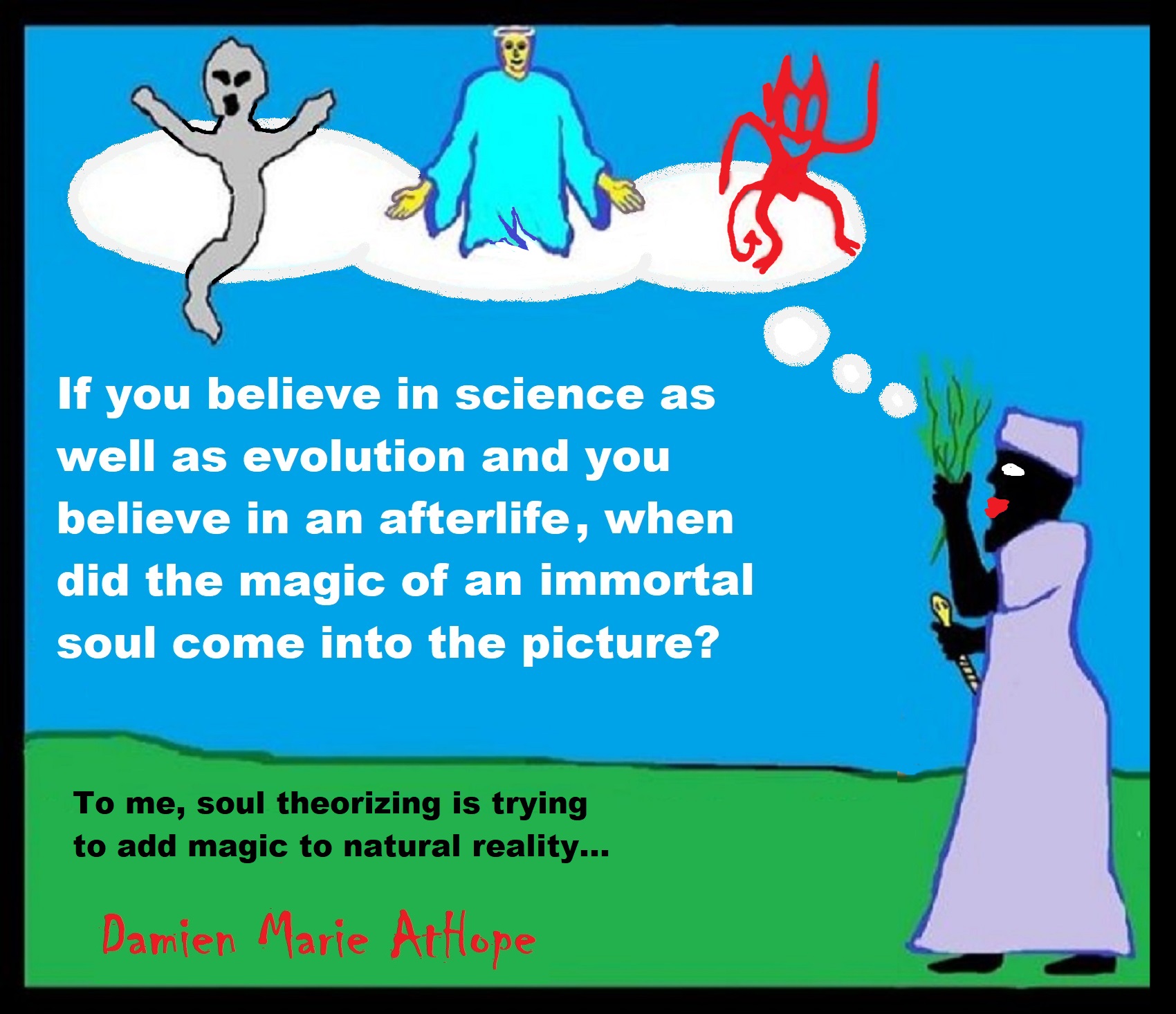
Progressed organized religion starts and is approximately a 5,000-year-old belief system)
“Damien, wouldn’t Sumer have predated Egypt in organized religion, having likely predated them in most other cultural endeavors.” – Questioner
My response, Not with the small city-states in Mesopotamia compared to a unified Egypt.
“I don’t know that this is necessarily what would dictate a “progressed organized religion” over other factors. I would guess that writing would play a larger role in this. However, I’m having reservations on the accuracy of conventional history anyway.” – Questioner
My response, It goes from loose tribe gods with attached to the small individual waring city-states with disagreement in gods in Mesopotamia compared to a unified Egypt established of a religious country or unified empire religion.
Modern Europe was formed by milk-drinking Russians:
Mass migration brought new genetic make-up to continent 5,000 years ago.
Megalithic Mass Grave From 5,000 Years Ago Discovered in Kenya
“Researchers studied the DNA of skeletons from the Bronze Age period. They found white Europeans only arrived on the continent 5,000 years ago Came after a mass period of migration by the Yamnaya in southern Russia. They brought new technology and a genetic mutation allowing them to drink cow’s milk.” Ref
5,000-year-old tomb in southeast Turkey gives the earliest evidence of child sacrifice
Paganism (beginning around 12,000 years ago)
Paganism (such as that seen in Turkey: 12,000 years ago)
Haplogroup G2a (Y-chromosomal DNA) and the Seeming Development of Early Agriculture – “Haplogroup G descends from macro-haplogroup F, which is thought to represent the second major migration of Homo sapiens out of Africa, at least 60,000 years ago. Haplogroup G has 303 mutations confirming a severe bottleneck before splitting into haplogroups G1 and G2. G1might have originated around modern Iran around 26,000 years ago. G2 would have developed around the same time in West Asia and haplogroup G2 appear to have been closely linked to the development of early agriculture in the Fertile Crescent part, around 11,500 years before present. G2a branch expanded to Anatolia, the Caucasus, and Europe, while G2b diffused from Iran across the Fertile Crescent and east to Pakistan. There has so far been ancient Y-DNA analysis from Early Neolithic Anatolia, Iran, Israel, Jordan as well as most Neolithic cultures in Europe (Thessalian Neolithic in Greece, Starčevo culture in Hungary/Croatia, LBK culture in Germany, Remedello in Italy, and Cardium Pottery in south-west France and Spain) and all sites yielded a majority of G2a individuals, except those from the Levant. This strongly suggests that farming was disseminated by members of haplogroup G at least from Anatolia/Iran then moved to Europe. 44 ancient Near Eastern samples, including Neolithic farmers from Jordan and western Iran, and found one G2b sample dating from the Pre-Pottery Neolithic (9,250 years ago) and a G2a1 from the Early Pottery Neolithic (7,700 years ago), both from Iran. The highest genetic diversity within haplogroup G is found in the northern part of the Fertile Crescent, between the Levant and the Caucasus, which is a good indicator of its region of origin. Çatalhöyük in south-central Anatolia/Turkey was founded by farmers who also brought domesticated goats and sheep. Also around 8,500 years ago, G2a Neolithic farmers arrived in northwest Anatolia and Thessaly in central Greece, as attested by the ancient genomes around the time that it seems cattle domestication was introduced to Çatalhöyük and other sites in Central Anatolia, presumably by trading with their eastern neighbors. Ancient skeletons from the Starčevo–Kőrös–Criș culture (8,000-6,500 years ago) in Hungary and Croatia, and the Linear Pottery culture (7,500-6,500 years ago) in Hungary and Germany, all confirmed that G2a (both G2a2a and G2a2b) remained the principal paternal lineage even after farmers intermingled with indigenous populations as they advanced. G2a farmers from the Thessalian Neolithic quickly expanded across the Balkans and the Danubian basin, reaching Serbia, Hungary, and Romania by 7,800 years ago, Germany by 7,500 years ago, and Belgium and northern France by 7,200 years ago. By 7,800 years ago, farmers making cardial pottery arrived at the Marmara coast in northwest Anatolia with ovicaprids and pigs. These people crossed the Aegean by boat and colonized the Italian peninsula, the Illyrian coast, southern France and Iberia, where they established the Cardium Pottery culture (5000-1500 BCE). Once again, ancient DNA yielded a majority of G2a samples in the Cardium Pottery culture, with G2a frequencies above 80% (against 50% in Central and Southeast Europe). Nevertheless, substantial minorities of other haplogroups have been found on different Neolithic sites next to a G2a majority, including C1a2, H2, I*, I2a1, I2c, and J2a in Anatolia, C1a2, E-M78, H2, I*, I1, I2a, I2a1, J2 and T1a in Southeast and Central Europe (Starčevo, Sopot, LBK), as well as E-V13, H2, I2a1, I2a2a1 and R1b-V88 in western Europe (Cardium Pottery, Megalithic). H2 and T1a were found in the Pre-Pottery Neolithic Levant and are undeniably linked to the early development of agriculture alongside G2a. That being said, C1a2 was also found in Mesolithic Spain and, as it is an extremely old lineage associated with the first Paleolithic Europeans, it could have been found all over Europe and Anatolia before the Neolithic. E1b1b was also found in the Pre-Pottery Neolithic Levant, but the subclades may not be E-M78 or E-V13 (more likely E1b1b1* or E-M123). R1b-V88 surely spread from the Near East too, although through a different route, with cattle herders via North Africa, then crossing over to Iberia. The rest probably represent assimilated hunter-gatherers descended from Mesolithic western Anatolian (I*, I2c, J2) and Europeans (E-V13, I*, I1, I2a, I2a1, I2a2). It is interesting to note that many of these lineages, such as C1a2, H2 and I* are virtually extinct anywhere nowadays, and several others are now very rare in Europe (I2c, R1b-V88).” ref
Haplogroup J (mtDNA) and the Seeming Spread of Early Agriculture – “Samples have been identified from various Neolithic sites, including Linear Pottery culture (LBK) in Central Europe, the Cardium Pottery culture in southern France, Megalithic cultures in northern Spain, and the Funnelbeaker culture in Germany and Sweden. All Neolithic samples tested to date belonged to J1*, J1c or J2b1a. One question that follows is: did J1c and J2b1a lineages actually come from the Near East during the Neolithic, or whether they were already in the Balkans and just expanded from there? Both being rare in the Near East today, the second hypothesis might seem more convincing at first. However, the age of J2b1a has been estimated at 11,000 years before present, while the Neolithic started over 12,000 years ago in the Near East. In other words, it could have arrived from the Near East as J2b1* and developed into J2b1a only after reaching Europe, which would explain why this particular subclade is almost exclusively European while all other subclades of J2b1 are mostly Middle Eastern or the eastern Mediterranean. J2b1a would, therefore, have come as a maternal lineage of early agriculturalists alongside the paternal lineage G2a (and perhaps also E1b1b and T1a). J1c, however, is too old (15,000 years) for that scenario. If it had been part of the Neolithic expansion from the Fertile Crescent, many J1c subclades would be primarily West Asian today, which isn’t the case. The only J1c individuals outside Europe belong to deep clades that clearly originated in Europe or in Anatolia. DNA of Early Neolithic farmers from western Anatolia and from the Starcevo culture in Hungary and Croatia, and found that J1c was present in both cultures, alongside other typical European Neolithic lineages like H5, K1a, N1a, T2, and X2. Of 44 ancient Near Eastern samples, including Neolithic farmers from Jordan and western Iran, and well as Chalcolithic and Bronze Age samples from Armenia and the Levant, but did not find any J1c, apart from a single sample in Neolithic Iran. This suggests that J1c lineages were probably not found among the very first farmers of the Fertile Crescent but were rather assimilated in neighboring populations further north, notably in Anatolia and Iran, but probably also in the Balkans, which were connected to Anatolia by a land bridge during the glacial and immediate post-glacial periods. Haplogroup J has been found in Bronze Age samples from the Yamna culture (J2b), Corded Ware culture (J1c and J2b1a), the Catacomb culture (J1b1a1), the Unetice culture (J1b1a1), and the Urnfield culture (J1b1), all in Central Europe. The Corded Ware culture is associated with the expansion of Y-haplogroup R1a from the northern Russian steppe, and in light of the continuity with Neolithic samples from Central Europe it can be assumed that J1c and J2b1a maternal lineages were not brought by the newcomers, but absorbed by the male invaders. On the other hand, J1b has never been found in Europe before the Bronze Age and was very probably brought by the Indo-Europeans carrying R1b paternal lineages. Both the Unetice and the Urnfield cultures are thought to have been founded mainly by R1b men.” ref
- Gobekli Tepe: “first human-made temple” around 12,000 years ago.
- Sedentism and the Creation of goddesses around 12,000 years ago as well as male gods after 7,000 years ago.
- First Patriarchy: Split of Women’s Status around 12,000 years ago & First Hierarchy: fall of Women’s Status around 5,000 years ago.
- Natufians: an Ancient People at the Origins of Agriculture and Sedentary Life
- J DNA and the Spread of Agricultural Religion (paganism)
- Paganism: an approximately 12,000-year-old belief system
- Shaman burial in Israel 12,000 years ago and the Shamanism Phenomena
- Need to Mythicized: gods and goddesses
- “36cu0190” a Historic and Prehistoric site in Pennsylvania
- 12,000 – 10,000 years old Shamanistic Art in a Remote Cave in Egypt
- 12,000 – 7,000 Years Ago – Paleo-Indian Culture (The Americas)
- 12,000 – 2,000 Years Ago – Indigenous-Scandinavians (Nordic)
- Norse did not wear helmets with horns?
- Pre-Pottery Neolithic Skull Cult around 11,500 to 8,400 Years Ago?
- Catal Huyuk “first religious designed city”around 10,000 years ago
- 9,000-8500 year old Female shaman Bad Dürrenberg Germany
- Kurgan 6,000 years ago/dolmens 7,000 years ago: funeral, ritual, and other?
- Connected “dolmen phenomenon” of above-ground stone burial structures?
- Stars: Ancestors, Spirit Animals, and Deities (at least back to around 6,000 years ago)
- Evolution Of Science at least by 5,500 years ago
- 5,500 Years old birth of the State, the rise of Hierarchy, and the fall of Women’s status
- “Jiroft culture” 5,100 – 4,200 years ago and the History of Iran
* “paganist” Believe in spirit-filled life and/or afterlife can be attached to or be expressed in things or objects and these objects can be used by special persons or in special rituals can connect to spirit-filled life and/or afterlife who are guided/supported by a goddess/god or goddesses/gods (you are a hidden paganist/Paganism: an approximately 12,000-year-old belief system) And Gobekli Tepe: “first human-made temple” as well as Catal Huyuk “first religious designed city” are both evidence of some kind of early paganism. early paganism is connected to Proto-Indo-European language and religion. Proto-Indo-European religion can be reconstructed with confidence such as the Gods and Goddesses, the myths, the festivals, and the form of rituals with invocations, prayers, and songs of praise that make up the spoken element of religion. Much of this activity is connected to the natural and agricultural year, or at least those are the easiest elements to reconstruct because nature doesn’t change and because farmers are the most conservative members of society and are best able to keep the old ways. Goddesses: There are at least 40 deities although the gods may be different than we think of and only evolved later to the ways we know. Such as, how a deity’s gender may not be a fixed characteristic since they are often deified forces of nature which tended to not have genders. Among the Goddesses reconstructed so far are: *Pria, *Pleto, *Devi, *Perkunos, *Aeusos and *Yama. Myths: There are at least 28 myths that can be reconstructed to Proto-Indo-European. Many of these myths have since been confirmed by additional research, including some in areas which were not accessible to the early writers, such as Latvian folk songs and Hittite hieroglyphic tablets. One of the most widely recognized myths of the Indo-Europeans is the myth in which *Yama is killed by his brother *Manu and the world is made from his body. Some of the forms of this myth in various Indo-European languages are given in this article about the Creation Myth of the Indo-Europeans. The Proto-Indo-European (PIE) is estimated to have been spoken as a single language from at around 6,500 years ago, the Kurgan hypothesis relating to the construction of kurgans (mound graves). The earliest kurgans date to the 6,000 years ago in the Caucasus and are associated with the Indo-Europeans. Kurgans were built in the Eneolithic, Bronze, Iron, Antiquity and Middle Ages, with ancient traditions still active in Southern Siberia and Central Asia. Kurgan cultures are divided archeologically into different sub-cultures, such as Timber Grave, Pit Grave, Scythian, Sarmatian, Hunnish, and Kuman–Kipchak. Kurgan barrows were characteristic of Bronze Age peoples, and have been found from the Altay Mountains to the Caucasus, Ukraine, Romania, and Bulgaria. Kurgans were used in the Ukrainian and Russian steppes, their use spreading with migration into eastern, central, and northern Europe in the around 5,000 yea5rs ago. Burial mounds are complex structures with internal chambers. Within the burial chamber at the heart of the Kurgan, elite individuals were buried with grave goods and sacrificial offerings, sometimes including horses and chariots. The structures of the earlier Neolithic period from the 4th to the 3rd millenniums BC, and Bronze Age until the 1st millennium BC, display continuity of the archaic forming methods. They were inspired by common ritual-mythological ideas.Whereas, the Anatolian hypothesis suggests that the speakers of Pre-Proto-Indo-European to the Proto-Indo-European (PIE) lived in Anatolia during the Neolithic era, and it associates the distribution of historical Indo-European languages with the expansion during the Neolithic revolution around 9,000 years ago, with a proposed homeland of Proto-Indo-European proper in the Balkans around 7,000 years ago, which he explicitly identified as the “Old European culture“. This hypothesis states that Indo-European languages began to spread peacefully, by demic diffusion, into Europe from Asia Minor or Turkey, the Neolithic advance of farming (wave of advance). Accordingly, most inhabitants of Neolithic Europe would have spoken Indo-European languages, and later migrations would have replaced the Indo-European varieties with other Indo-European varieties. The expansion of agriculture from the Middle East would have diffused three language families: Indo-European toward Europe, Dravidian toward Pakistan and India, and Afro Asiatic toward Arabia and North Africa. Reconstructions of a Bronze Age PIE society, based on vocabulary items like “the wheel”, do not necessarily hold for the Anatolian branch, which appears to have separated at an early stage, prior to the invention of wheeled vehicles. The Proto-Indo-European Religion seemingly stretches at least back around 6000 years ago or likely much further back I believe possibly an approximately 12,000-year-old belief system. ref, ref, ref, ref, ref, ref, ref, ref, ref, ref, ref, ref, & ref
- “12,000 years ago: Jericho has evidence of settlement dating back to 10,000 BC. Jericho was a popular camping ground for Natufian hunter-gatherer groups, who left a scattering of crescent microlith tools behind them.
- 12,000 years ago: Earliest dates suggested for the domestication of the goat.
- 11,600 years ago: Start of the current Holocene epoch.
- 11,000 -12,00/13,000 years ago (9,000 BC): Earliest date recorded for construction of temenoi ceremonial structures at Göbekli Tepe in southern Turkey, as possibly the oldest surviving proto-religious site on Earth.
- 11,000 years ago: Emergence of Jericho, which is now one of the oldest continuously inhabited cities in the world. Giant short-faced bears and giant ground sloths go extinct. Equidae goes extinct in North America.
- 10,500 years ago: Earliest supposed date for the domestication of cattle.
- 10,000 years ago: The Quaternary extinction event, which has been ongoing since the mid-Pleistocene, concludes. Many of the ice age megafauna go extinct, including the megatherium, woolly rhinoceros, Irish elk, cave bear, cave lion, and the last of the sabre-toothed cats. The mammoth goes extinct in Eurasia and North America, but is preserved in small island populations until ~1650 BC.
- 11,000 – 9,000 years ago: Byblos appears to have been settled during the PPNB period, approximately 8800 to 7000 BC. Neolithic remains of some buildings can be observed at the site.
- 10,000 – 8,000 years ago: The post-glacial sea level rise decelerates, slowing the submersion of landmasses that had taken place over the previous 10,000 years.
- 10,000 – 9,000 years ago: In northern Mesopotamia, now northern Iraq, cultivation of barley and wheat begins. At first they are used for beer, gruel, and soup, eventually for bread. In early agriculture at this time, the planting stick is used, but it is replaced by a primitive plow in subsequent centuries. Around this time, a round stone tower, now preserved to about 8.5 meters high and 8.5 meters in diameter is built in Jericho.
- 9,500–5,900 years ago: Neolithic Subpluvial in North Africa. The Sahara desert region supports a savanna-like environment. Lake Chad is larger than the current Caspian Sea. An African culture develops across the current Sahel region.
- 9,500 years ago: Çatalhöyük urban settlement founded in Anatolia. Earliest supposed date for the domestication of the cat.
- 9,200 years ago: First human settlement in Amman, Jordan; ‘Ain Ghazal Neolithic settlement was built spanning over an area of 15 hectares.
- 9,000 years ago: Jiahu culture began in China.
- 9,000 years ago: large first fish fermentation in southern Sweden.
- 8,200–8,000 years ago: 8.2 kiloyear event: a sudden decrease of global temperatures, likely caused by the final collapse of the Laurentide Ice Sheet, which leads to drier conditions in East Africa and Mesopotamia.
- 8,000-5,000 years ago: development of proto-writing in China, Southeast Europe (Vinca symbols) and West Asia (proto-literate cuneiform).
- 8,000 years ago: Evidence of habitation at the current site of Aleppo dates to about c. 8,000 years ago, although excavations at Tell Qaramel, 25 kilometers north of the city show the area was inhabited about 13,000 years ago, Carbon-14 dating at Tell Ramad, on the outskirts of Damascus, suggests that the site may have been occupied since the second half of the seventh millennium BC, possibly around 6300 BC. However, evidence of settlement in the wider Barada basin dating back to 9000 BC exists.
- 7,500 years ago: Copper smelting in evidence in Pločnik and other locations.
- 7,200–6,000 years ago: 5200–4000 BC:Għar Dalam phase on Malta. First farming settlements on the island.
- 6,100–5,800 years ago: Żebbuġ phase. Malta.
- 6,070–6,000 years ago: Trypillian build in Nebelivka (Ukraine) settlement which reached 15,000—18,000 inhabitants.
- 6,500 years ago: The oldest known gold hoard deposited at Varna Necropolis, Bulgaria.
- 6,000 years ago: Civilizations develop in the Mesopotamia/Fertile Crescent region (around the location of modern-day Iraq). Earliest supposed dates for the domestication of the horse and for the domestication of the chicken, invention of the potter’s wheel.
- 5,900 years ago: 5.9 kiloyear event: a rapid and intense aridification event, which likely started the current Sahara Desert dry phase and a population increase in the Nile Valley due to migrations from nearby regions. It is also believed this event contributed to the end of the Ubaid period in Mesopotamia.
- 5,800 years ago: The Post Track and Sweet Track causeways are constructed in the Somerset Levels.
- 5,800 years ago: Trypillian build in Talianki (Ukraine) settlement which reached 15,600—21,000 inhabitants.
- 5,800–5,600 years ago: Mġarr phase A short transitional period in Malta’s prehistory. It is characterized by pottery consisting of mainly curved lines.
- 5,700 years ago: starts mass graves at Tell Brak in Syria.
- 5,700 years ago: Trypillian build in Maidanets (Ukraine) settlement which reached 12,000—46,000 inhabitants and built 3-story building.
- 5,700 years ago: Minoan culture begins on Crete.
- 5,600–5,200 years ago: Ġgantija phase on Malta. Characterized by a change in the way the prehistoric inhabitants of Malta lived.
- 5,500 years ago: Uruk period in Sumer. The first evidence of mummification in Egypt.
- 5,500 years ago: the oldest known depiction of a wheeled vehicle (Bronocice pot, Funnelbeaker culture)
- 5,300 years ago: Bronze Age begins in the Near East, Newgrange is built in Ireland. Hakra Phase of the Indus Valley Civilisation begins in the Indian subcontinent.
- 5,300–5,000 years ago: Saflieni phase in Maltese prehistory.” ref
Invasion vs. diffusion scenarios?
Genetic analyses shows that 7,000-8,000 years ago, a closely related group of early farmers moved into Europe from the Near East, confirming the findings of previous studies. According to the “Anatolian hypothesis“, Indo-European languages were spread by the first farmers from the Near East 7,000-8,000 years ago. the “Steppe/Kurgan hypothesis“, which proposes that early Indo-European speakers were farmers on the grasslands north of the Black and Caspian Seas. Anthony’s “Revised Steppe Theory”, which David Anthony‘s The Horse, the Wheel and Language describes his “Revised Steppe Theory”. David Anthony considers the term “Kurgan culture” so lacking in precision as to be useless, instead of using the core Yamna culture and its relationship with other cultures as a point of reference. He points out that the Kurgan culture | prehistoric culture was so broadly defined that almost any culture with burial mounds, or even (like the Baden culture) without them could be included. He does not include the Maykop culture among those that he considers being IE-speaking, presuming instead that they spoke a Caucasian language.
Kurgans 6,000 years ago/dolmens 7,000 years ago: funeral, ritual, and other?
The Kurgan hypothesis (also known as the Kurgan theory or Kurgan model) or steppe theory is the most widely accepted proposal to identify the Proto-Indo-European homeland from which the Indo-European languages spread out throughout Europe and parts of Asia. It postulates that the people of a Kurgan culture in the Pontic steppe north of the Black Sea were the most likely speakers of the Proto-Indo-European language (PIE). The term is derived from the Russian kurgan, meaning tumulus or burial mound.
Researchers have identified a massive migration of Kurgan populations (Yamna culture) which went from the Russian steppes to the center of Europe some 4,500 years ago, favoring the expansion of Indo-European languages throughout the continent.
This was a time of astonishing creativity as city-states and empires emerged in a vast area stretching from the Mediterranean to the Indus Valley. The previous millennium had seen the emergence of advanced, urbanized civilizations, new bronze metallurgy extending the productivity of agricultural work, and highly developed ways of communication in the form of writing. In the 3rd millennium BC, the growth of these riches, both intellectually and physically, became a source of contention on a political stage, and rulers sought the accumulation of more wealth and more power. Along with this came the first appearances of mega-architecture, imperialism, organized absolutism and internal revolution. The civilizations of Sumer and Akkad in Mesopotamia became a collection of volatile city-states in which warfare was common. Uninterrupted conflicts drained all available resources, energies and populations. In this millennium, larger empires succeeded the last, and conquerors grew in stature until the great Sargon of Akkad pushed his empire to the whole of Mesopotamia and beyond. It would not be surpassed in size until Assyrian times 1,500 years later. In the Old Kingdom of Egypt, the Egyptian pyramids were constructed and would remain the tallest and largest human constructions for thousands of years. Also in Egypt, pharaohs began to posture themselves as living gods made of an essence different from that of other human beings. Even in Europe, which was still largely neolithic during the same period, the builders of megaliths were constructing giant monuments of their own. In the Near East and the Occident around 5,000 years ago and religion developed and advanced to roughly the ways we are somewhat familiar to a large amount, limits were being pushed by architects and rulers. Towards the close of the millennium, Egypt became the stage of the first popular revolution recorded in history. After lengthy wars, the Sumerians recognized the benefits of unification into a stable form of national government and became a relatively peaceful, well-organized, complex technocratic state called the 3rd dynasty of Ur. This dynasty was later to become involved with a wave of nomadic invaders known as the Amorites, who were to play a major role in the region during the following centuries. In the Near East and the Occident during the around 5,000 years ago and religion developed and advanced to roughly the ways we are somewhat familiar to a large amount, limits were being pushed by architects and rulers. Towards the close of the millennium, Egypt became the stage of the first popular revolution recorded in history. After lengthy wars, the Sumerians recognized the benefits of unification into a stable form of national government and became a relatively peaceful, well-organized, complex technocratic state called the 3rd dynasty of Ur. This dynasty was later to become involved with a wave of nomadic invaders known as the Amorites, who were to play a major role in the region during the following centuries. ref
Stars: Ancestors, Spirit Animals, and Deities (at least back to around 6,000 years ago)
- 5,750 years ago: The Proto-Semitic people emerged from a generally accepted urheimat in the Levant. The Proto-Semitic people would migrate throughout the Near East into Mesopotamia, Egypt, Ethiopia and the eastern shore of the Mediterranean.
- 5,700 years ago: Lothal: Indus Valley trade-port city in India.
- 5,650 years ago: Minoan culture appeared on Crete.
- 5,500 Years old birth of the State, the rise of Hierarchy, and the fall of Women’s status
- 5,300 years ago: The Indus Valley Civilization (IVC) was a Bronze Age civilization (3300–1300 BCE; mature period 2600–1900 BCE) in the northwestern region of the Indian subcontinent, noted for its cities built of brick, roadside drainage system and multi-storeyed houses, as well as for creating artifacts which could be linked to pre-vedic religions.
- 5,200 years ago: Helladic culture and Cycladic culture both emerge in Greece.
- 5,102 years ago: This was the beginning of Kaliyuga, a new age among the followers of Indian religions.
- 5,100 years ago: The initial form of Stonehenge was completed. The circular bank and ditch enclosure, about 110 metres (360 ft) across, may have been completed with a timber circle.
- 5,100 years ago: Newgrange, the 250,000 ton (226,796.2 tonne) passage tomb aligned to the winter solstice in Ireland, was built.
- 5,000 years ago: Unification of Upper and Lower Egypt.
- 5,000 years ago: First evidence of gold being used in the Middle East.
- 5,000 years ago: Vessels from Denmark
- 5,000 years ago: Sumerian Cuneiform emerged from the proto-literate Uruk period, allowing the codification of beliefs and creation of detailed historical religious records.
- 5,000 years ago: The second phase of Stonehenge was completed and appeared to function as the first enclosed cremation cemetery in the British Isles.
- 4,900 years ago: Beginning of the Early Dynastic Period I in Sumer.
- 4,900 years ago: Sumerianpictographs evolve into phonograms.
- 4,900 years ago: Mesopotamian wars of the Early Dynastic period.
- 4,900 years ago: Votive statues from the Square Temple of Eshnunna (modern Tell Ashmar, Iraq) were made.
- 4,900 years ago: Syria: Foundation of the city of Mari.
- 4,900 years ago: Semitic tribes occupy Assyria in northern part of the plain of Shinar and Akkad.
- 4,900 years ago: Phoenicians settle on Syrian coast, with centers at Tyre and Sidon.
- 4,900 years ago: Beginning of the period of the Sage Kings in China, also known as the Three Sovereigns and Five Emperors.
- 4,900 years ago: Ziggurats (multi-platform temples: 4,900 years old) to Pyramids (multi-platform tombs: 4,700 years old)
- 4,879 years ago: Rise of the Văn Lang Kingdom and the Hồng Bàng Dynasty in northern Viet Nam.
- 4,874 years ago: The 365-day calendar year was installed in ancient Egypt
- 4,852 years ago: The beginning of the period of the Three August Ones and Five Emperors in China.
- 4,832 years ago: Estimated germination of the Methuselah Tree, the oldest known living organism
- 4,807 years ago: Suggested date for an asteroid or comet impact occurring between Africa and Antarctica, around the time of a solar eclipse on May 10, based on an analysis of flood stories. Possibly causing the Burckle crater and Fenambosy Chevron.
- 4,800 years ago: Ur becomes one of the richest cities in Sumer
- 4,800 years ago: Harp Player, from Keros, Cyclades, was made. It is now at the Metropolitan Museum of Art, New York.
- 4,800 years ago: Iran: Creation of the Kingdom of Elam.
- 4,800 years ago: Seated Harp Player, from Keros, Cyclades, is made.
- 4,775 years ago: Second Dynasty wars in Ancient Egypt.
- 4,773 years ago: the 365-day calendar is introduced in Egypt.
- 4,750 years ago: End of the Early Dynastic I Period, and the beginning of the Early Dynastic II Period in Mesopotamia.
- 4,750 years ago: Estimated ending of the Cucuteni-Trypillian culture in the region of modern-day Romania, Moldova, and southwestern Ukraine
- 4,700 years ago: Germination of the Bristlecone pine tree “Methuselah“, one of the oldest known trees still living now.
- 4,700 years ago: Merit-Ptah is world’s first female physician mentioned by name.
- 4,700 years ago: Old Kingdom of Egypt begins. 3rd–6th Dynasties.
- 4,700 years ago: Mesoamericans begin to plant and domesticate maize.
- 4,697 years ago: The Yellow Emperor starts to reign in China.
- 4,685 years ago: Bull lyre from the tomb of Queen Puabi, Ur (modern Muqaiyir, Iraq) was made.
- 4,640 years ago: The cultivation and weaving of silk starts to be a closely guarded secret in China.
- 4,630 years ago: Imhotep, Vizier of Egypt, constructs the Pyramid of Djoser The Djoser pyramid is a step pyramid (or proto-pyramid) is considered to be the earliest large-scale cut stone construction and was thought to function in both life and the afterlife, which was sealed with a 3.5 ton block after the burial. The symbolism of the step pyramid form, which did not survive the 3rd Dynasty, is unknown, but it has been suggested that it may be a monumental symbol of the crown, especially the royal mortuary cult, since seven small step pyramids (not tombs) were built in the provinces.
- 4,627 years ago: Construction of the Caral metropolis in Peru
- 4,600 years ago: Mature Harappan phase of the Indus Valley Civilisation begins. The cities of Harappa and Mohenjo-daro become large metropolises and the civilization expands to over 2,500 cities and settlements across the whole of Pakistan, much of northern India, and parts of Afghanistan and Iran, covering a region of around one million square miles, which was larger than the land area of its contemporaries Egypt and Mesopotamia combined, and also had superior urban planning and sewage systems. The civilization began using the mature Indus script for its writing system.
- 4,600 years ago: End of the Early Dynastic II Period and the beginning of the Early Dynastic IIIa Period in Mesopotamia.
- 4,600 years ago: Founding of the Chalcolithic Iberian civilizations of Los Millares and Zambujal.
- 4,600 years ago: the Indus Valley Civilisation rises to become a powerful civilization.
- 4,600 years ago: Pre-Palace Period, phase I, in Crete
- 4,600 years ago: Wild horses still provide hunting feasts in Denmark. (Clutton-Brock)
- 4,600 years ago: Large water tank, possibly a public or ritual bathing area, Mohenjo-daro, Indus Valley Civilisation, is made.
- 4,600 years ago: Butmir culture existed in Butmir, near Ilidža, Bosnia and Herzegovina, dating from the Neolithic. It is characterized by its unique pottery, and is one of the best researched European cultures from 2600-2400 BC.
- 4,600 years ago: Unified Indus Valley Civilisation.
- 4,550 years ago: Estimated date of completion of the Great Pyramid of Giza.
- 4,550 years ago: Mesannepada is king of Ur (followed by his son, A-annepadda) who founds the First Dynasty of Ur and overthrows the last king of Uruk, as well as Mesilim of Kish.
- 4,550 years ago:: Great Lyre with bull’s head, from the tomb of King Meskalamdug, Ur (modern Muqaiyir, Iraq) is made.
- 4,500 years ago: Excavation and development of the Hypogeum of Ħal-Saflieni at Paola, Malta, a subterranean temple complex subsequently used as a necropolis.
- 4,500 years ago: The legendary line of Three Sovereigns and Five Emperors of China is founded by the Yellow Emperor.
- 4,500 years ago: the construction of the stone circle at Stonehenge begins and continues for the next five hundred years.
- 4,500 years ago: Rice was first introduced to Malaysia
- 4,500 years ago: Scribal schools flourish throughout Sumer.
- 4,500 years ago: Assyria is established.
- 4,500 years ago: Cylinder seal from Sumer and its impression are made. It is now in the Metropolitan Museum of Art, New York.
- 4,500 years ago: Excavation and development of the Hypogeum of Ħal-Saflieni at Paola, Malta, a subterranean temple complex subsequently used as a necropolis.
- 4,500 years ago: Valley Temple of Khafra, Giza, is built.
- 4,500 years ago: Khafra from Giza Valley, Temple of Khafra is made. Fourth Dynasty of Egypt. Discovered by Auguste Mariette. It is now kept in Egyptian Museum, Cairo.
- 4,500 years ago: Mohenjo-daro is about 7 square miles (18 km2) in size and has a population of c. 20,000 to 50,000.
- 4, 500 years ago: Incised panel “Frying pan”, from Syros, Cyclades is made.
- 4,500 years ago: Two figures of women, from the Cyclades, are made.
- 4,494 years ago: End of Fourth Dynasty, start of Fifth Dynasty in Egypt. Construction of the Pyramids begins.
- 4,494 years ago: “Sculptors at work”, relief from Saqqara, Fifth Dynasty. It is now at Egyptian Museum, Cairo, Egypt.
- 4,494 years ago: The Seated Scribe, a sculpture found at Saqqara, Fifth Dynasty of Egypt is made.
- 4,494 years ago: The first of the oldest surviving religious texts, the Pyramid Texts, was composed in Ancient Egypt.
- 4,492 years ago: Traditional date for the legendary foundation of Armenia by Hayk.
- 4,492 years ago: The Armenian patriarch Hayk defeats the Babylonian king Bel (legendary account) and Hayk founds Armenia.
- 4,474 years ago: Golden age of Ur in Mesopotamia.
- 4,450 years ago: End of the Early Dynastic IIIa Period and beginning of the Early Dynastic IIIb Period in Sumer.
- 4,450 years ago: Kish is lost to Hamazi tribesmen of the Kurdistan mountains; Elam under the Awan dynasty occupies parts of Sumer.
- 4,419 years ago: Neferefre is pharaoh
- 4,410 years ago: By this time, kings in Sumer have ceased to be automatically high priests of the city deity. Infiltration and conquest of Mesopotamia by ancient Semitic-speaking peoplesbegins.
- 4,400 years ago: Construction of Stonehenge
- 4,400 years ago: Megalithic culture begins to spread through Europe and the western Mediterranean.
- 4,400 years ago: Earliest signs of Corded Ware culture from the Caucasus.
- 4,400 years ago: Southeastern Spain is settled from the Mediterranean, by people using Prehistoric Egyptian-style pottery.
- 4,400 years ago: Amorites and Canaanites occupy Syria and Lebanon.
- 4,334 years ago: Sargon of Akkad conquers Mesopotamia, establishing the Akkadian Empire.
- 4,334 years ago: City of Lothal founded under the Indus Valley Civilisation.
- 4,333 years ago: According to the Korean creation story, Dangun Wanggeom established the first Korean Empire, Gojoseon
- 4,300 years ago: C-Group pastoralists arrive in Nubia.
- 4,300 years ago: Megalithic, Corded Ware culture and the Beaker flourish in Europe.
- 4,300 years ago: Sumerian poetry, lamenting the death of Tammuz, the shepherd god.
- 4,300 years ago: Sumerian cuneiform writing reduces pictographs still in use to about 550 BC.
- 4,300 years ago: Major religious festival in Sumeria celebrates the victory of god of spring over goddess of chaos.
- 4,300 years ago: Earliest Trojan culture.
- 4,300 years ago: Beginning of the Pengtoushan culture in China.
- 4,300 years ago: Indus Valley Civilization (Harappan) flourishing in modern day eastern Pakistan – western India.
- 4,300 years ago: Metals start to be used in Northern Europe.
- 4,300 years ago: Unetice culture emerges in the modern day Czech Republic.
- 4,300 years ago: Disk of Enheduanna, from Ur, (modern Muqaiyir, Iraq) is made.
- 4,300 years ago: “Head of a man from Nineveh” (modern Kuyunjik, Iraq) is made.
- 4,285 years ago: Enheduanna, high priestess of the moon god Nanna in Ur, was born.
- 4,254 years ago: Stela of Naram-Sin, probably from Sippar, discovered in Susa (modern Shush, Iran), is made.
- 4,250 years ago: Earliest evidence of maize cultivation in Central America.
- 4,240 years ago: Akkad, capital of the Akkadian Empire, becomes the largest city in the world, surpassing Memphis, capital of Egypt.
- 4,220 years ago: Scord of Brouster farmstead established in Shetland, Scotland
- 4.2 kiloyear event– a severe aridification event that probably lasted the entire 22nd century BC and caused the collapse of several Old World civilizations.
- 4,217 years ago: Nomadic invasions of Akkad.
- 4,200 years ago: The Minoan Civilization developed in Crete. Citizens worshipped a variety of goddesses.
- 4,150 years ago: The earliest surviving versions of the Sumerian Epic of Gilgamesh—originally titled He who Saw the Deep (Sha naqba īmuru) or Surpassing All Other Kings (Shūtur eli sharrī)—were written.
- 4,104 years ago: Approximate date of the Biblical flood according to the Hebrew Calendar.
- 4,070 years ago: Xia Dynasty, first Chinese dynasty and government system established.
- 4,000 years ago: Kultepe? An archaeological site with a 4,000 years old women’s rights document.
- 3,700 years ago: The oldest of the Hindu Vedas (scriptures), the Rig Veda was composed.
- 3,600 years ago: The ancient development of Stonehenge came to an end.
- 3,500 years ago: The Vedic Age began in India after the collapse of the Indus Valley Civilisation.
- 3,450 years ago: This is the traditionally accepted period in which, according to legend, the Israelite lawgiver Moses gave the Ten Commandments.
- 3,351 years ago: The reign of Akhenaten, sometimes credited with starting the earliest known recorded monotheistic religion, in Ancient Egypt
- 3,300 years ago: The “standard” Akkadian version of the Epic of Gilgamesh was edited by Sin-liqe-unninni.
- 3,250 years ago: The Upanishads (Vedic texts) were composed, containing the earliest emergence of some of the central religious concepts of Hinduism, Buddhism and Jainism. ref, ref, ref, ref, ref, ref, ref, ref, ref, ref, ref
Understanding Religion Evolution:
- Animism (Africa: 100,000 years ago), (Animism | Britannica.com)
- Totemism (Europe: 50,000 years ago), (Totemism – Anthropology)
- Shamanism (Siberia: 30,000 years ago), (Shamanism | Britannica.com)
- Paganism (Turkey: 12,000 years ago), (BBC – Religion: Paganism)
- Progressed organized religion (Egypt: 5,000 years ago), (Prehistoric Egypt 40,000 years ago to The First Dynasty 5,150 years ago)
“Religion is an Evolved Product”
What we don’t understand we can come to fear. That which we fear we often learn to hate. Things we hate we usually seek to destroy. It is thus upon us to try and understand the unknown or unfamiliar not letting fear drive us into the unreasonable arms of hate and harm.
Religions continuing in our modern world, full of science and facts, should be seen as little more than a set of irrational conspiracy theories of reality. Nothing more than a confused reality made up of unscientific echoes from man’s ancient past. Rational thinkers must ask themselves, why continue to believe in religions’ stories? Religion myths which are nothing more than childlike stories and obsolete tales once used to explain how the world works, acting like magic was needed when it was always only nature. These childlike religious stories should not even be taken seriously, but sadly too often they are. Often without realizing it, we accumulate beliefs that we allow to negatively influence our lives. In order to bring about awareness, we need to be willing to alter skewed beliefs. Rational thinkers must examine the facts instead of blindly following beliefs or faith.
Below is a collection of researched information such as archaeology, history, linguistics, genetics, art, science, sociology, geography, psychology, philosophy, theology, biology, and zoology. It will make you question your beliefs with information, inquiries, and ideas to ponder and expand on. The two main goals are to expose the evolution of religion starting 100,000 years ago and to offer challenges to remove the rationale of faith. It is like an intervention for belief in myths that have plagued humankind for way too long. We often think we know what truth is nevertheless this can be but a vantage point away from losing credibility if we are not willing to follow valid and reliable reason and evidence. The door of reason opens not once but many times. Come on a journey to free thought where the war is against ignorance and the victor is a rational mind.
If you are a religious believer, may I remind you that faith in the acquisition of knowledge is not a valid method worth believing in. Because, what proof is “faith”, of anything religion claims by faith, as many people have different faith even in the same religion?
Religious Sexism
- Speech on the Evolution of Religion & Religious Sexism
- Sexism in the Major World Religions
- Sexism in the BIBLE: chapter and verse!
- Sexism in Christianity (New Testament)
- Sexism in Judaism (old Testament)
- Sexism in Islam? Face Covering: Religious Freedom or Religious Oppression
- Sexism in Islam
- Sexism in Protestantism
- Sexism in Catholicism
- Sexism in Mormonism
- Sexism in Jehovah Witness
- Sexism in Bahaism
- Sexism in Sikhism
- Sexism in Confucianism
- Sexism in Taoism
- Sexism in Jainism
- Sexism in Shintoism
- Sexism in Buddhism
- Sexist Buddha
- Sexism in Hinduism
- Taoism yang and yin is very sexist
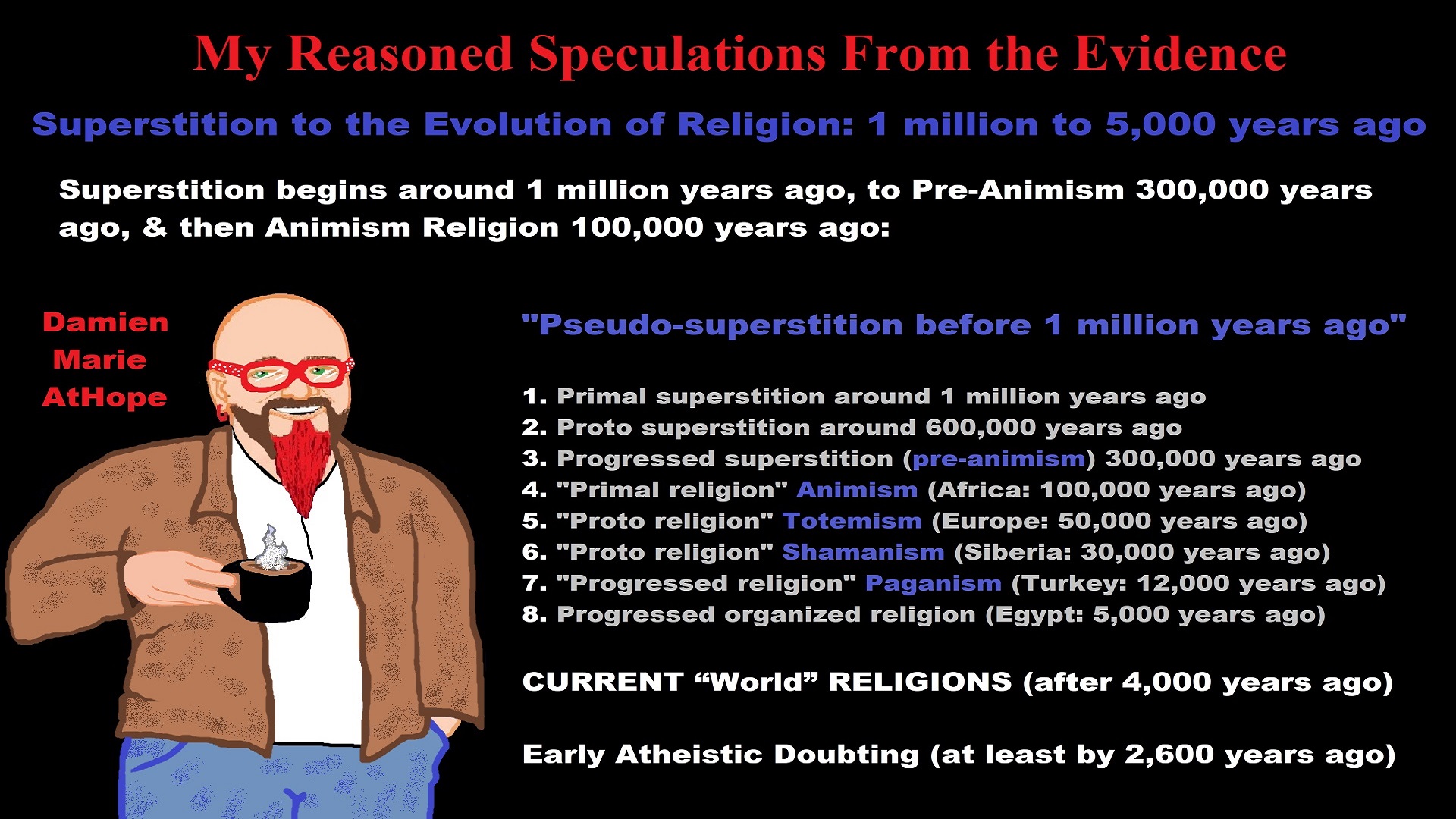

I am living proof counseling can help change your life as an ex-street kid thug/crime and hurt anyone I felt like and I liked fighting men/youth males, doing it often. Then at 17, put inpatient to a mental/addiction center to both sober me up and aid my thinking. Look at me now!
My Caring Firebrand Atheist Activism Training, as Easy as 1 2 3: https://damienmarieathope.com/2020/12/my-caring-firebrand-atheist-activism-training-as-easy-as-1-2-3/?v=32aec8db952d
Truth Navigation: Techniques for Discussions or Debates
“The Hammer of Truth” -ontology question- What do You Mean by That?
Hammer of Truth that lying pig RELIGION: challenged by an archaeologist
Truth Navigation and the fallacy of Fideism “faith-ism”
Truth Navigation: “Belief-Etiquette”
Atheist Activism Training #1: Know You, Know Your Motivations and Understand Others: https://damienmarieathope.com/2019/06/atheist-activism-training-1-know-you-know-your-motivations-and-understand-others/?v=32aec8db952d
Atheist Activism Training #2: Ontology, Epistemology, and Axiology (methodological use of philosophy): https://damienmarieathope.com/2019/06/atheist-activism-training-2-ontology-epistemology-and-axiology-methodological-use-of-philosophy/?v=32aec8db952d
Atheist Activism Training #3: Navigate the Discussion, Control the Questions, and Turn the Argument: https://damienmarieathope.com/2019/07/atheist-activism-training-3-navigate-the-discussion-control-the-questions-and-turn-the-argument/?v=32aec8db952d


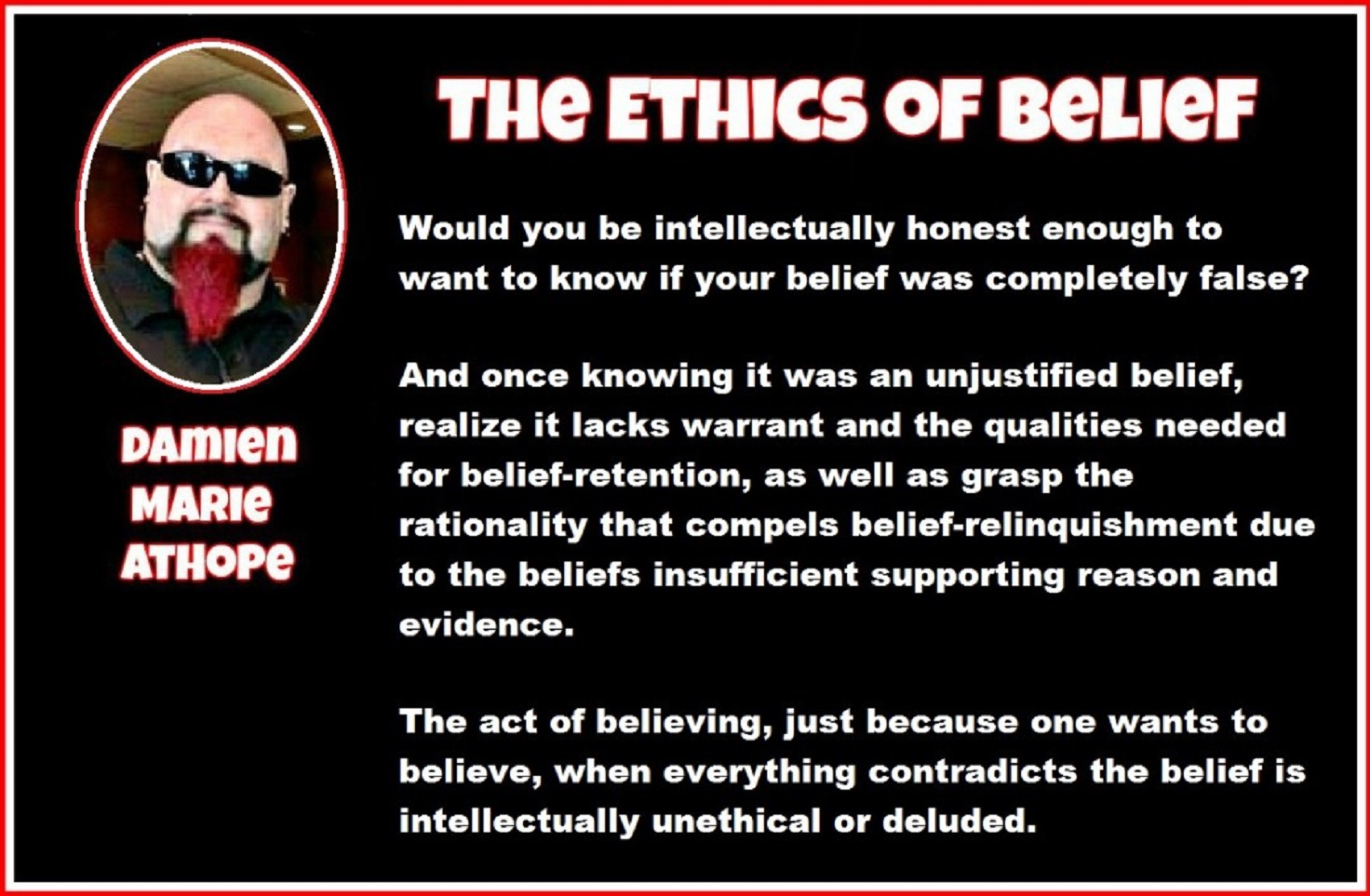
I do realize there is always the individual (with their own experiences, past, support, supplies, or needs) and even the ideas of group, family, of brothers and sisters are cultural labels to connect but the individual is the only real thing the entire time.

I have given money to help starving children. Hunger is a crime against humanity that so-called civilized nations do as a matter of law and even if they were perfect for their people the selfishness of nationalism lets them off the hook in their care responsibility to all humans.


Your lack of awareness of the oppression or bigotry of others, only means you are not aware of it. Not that it was not happening, years on end. And thus, to me, being apathetic about human rights is downright shameful, especially when others desperately need all our help.
“Damien, not following the rules messes things up for everyone else.”
My response, It depends on what rules, I think for yourself and you think for me. We think as society trained you. Reason is my only master. Only scum wish the oppression of others.
I fall from the treetops like a summer rain of new things that invigorates the mind to thought as if reaching out for a phantom to see what is really true. We light a candle in our mind when we let reason be our master because reason requires its user to change to what is reasoned over what may be preferred.
It is not a matter of being the only flame but to inspire us all to unify as one, to bring light to all we can. Be an honest thinker who values only reason and evidence as your main helpful guides. Follow an “ethics of belief” and don’t “believe what you like” rather what is justified soundly, thus let “Reason” be your master, and may you master “Reason.” Anger has been easier than care but it is my care I hold as value and it is this care, not some anger, I wish to inspire. In fact, I wish for us all to truly slow down and think, to add the needed care. Yea, we should do the needful, the worthy, and what is true. Reason rules.
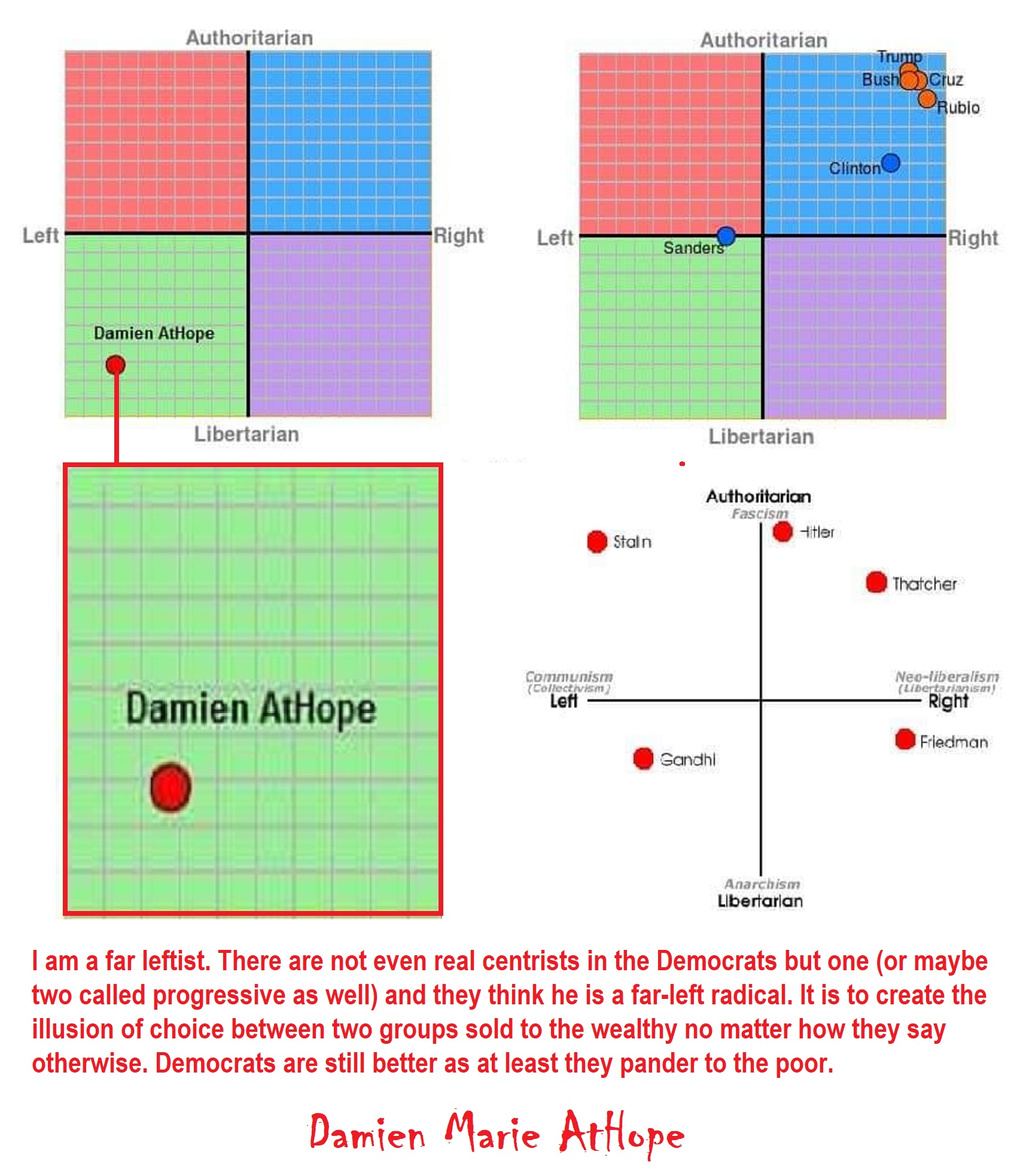
I am a far leftist. There are not even real centrists in the Democrats but one (or maybe two called progressive as well) and they think he is a far-left radical. It is to create the illusion of choice between two groups sold to the wealthy no matter how they say otherwise. Democrats are still better as at least they pander to the poor.


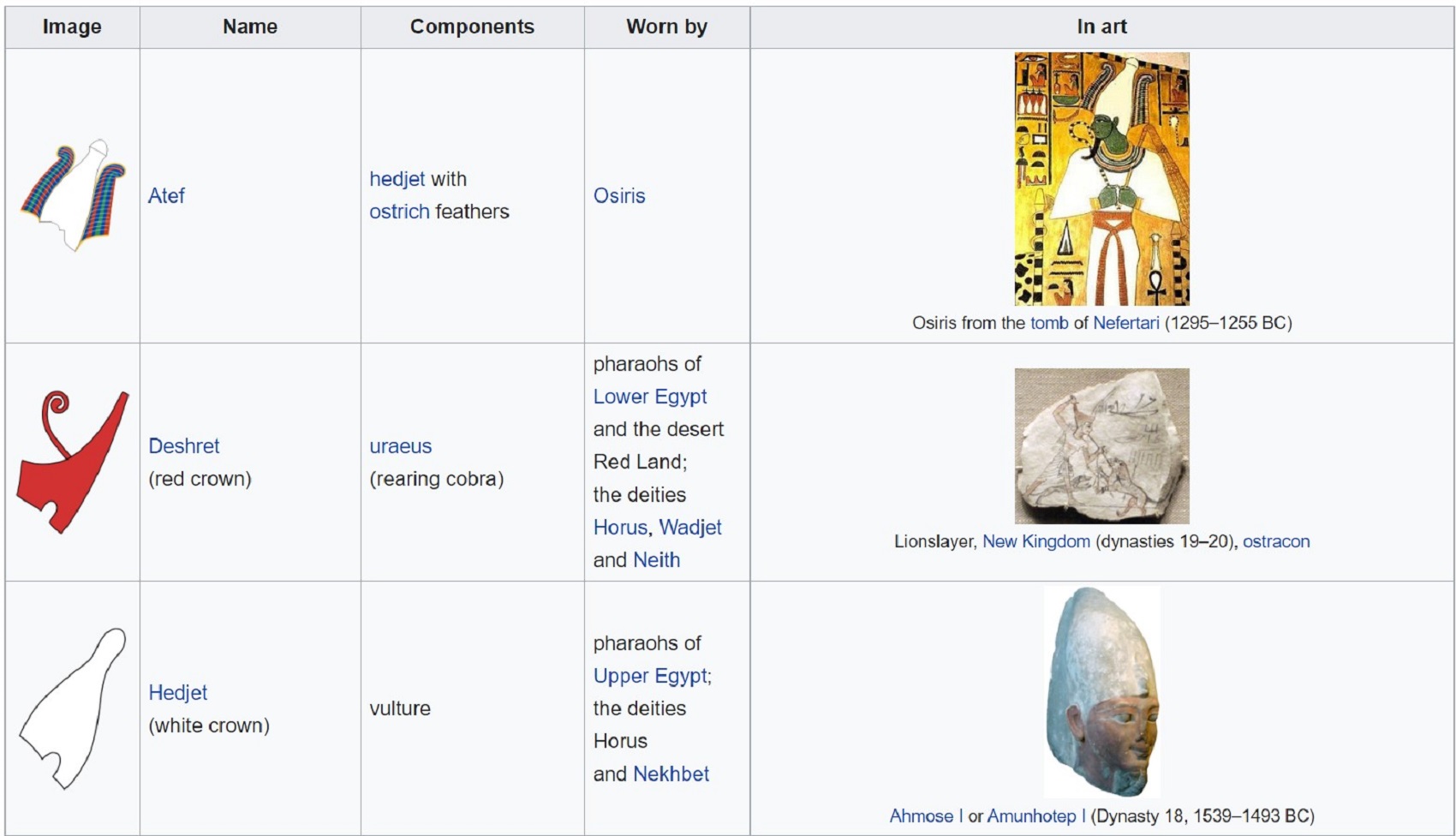
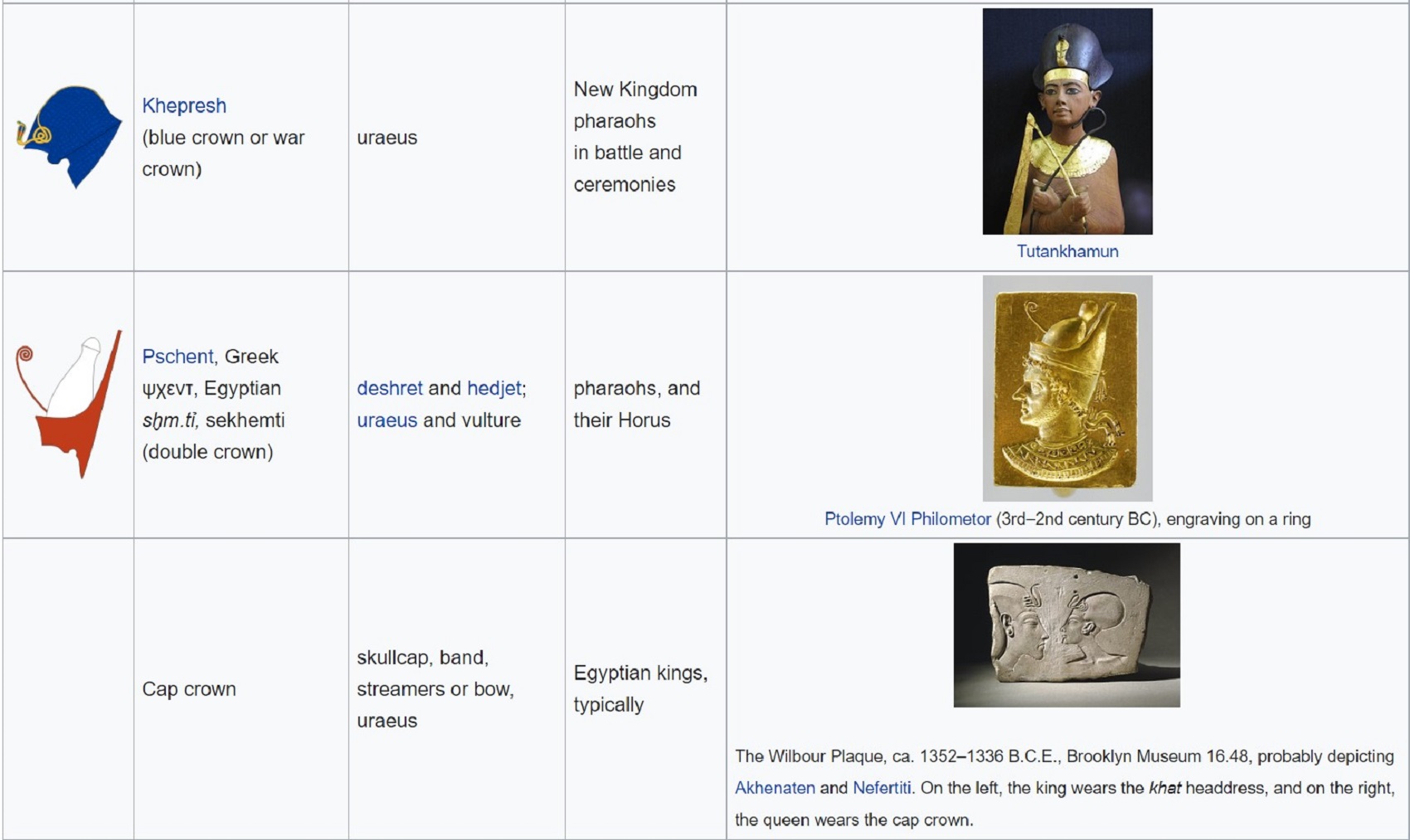
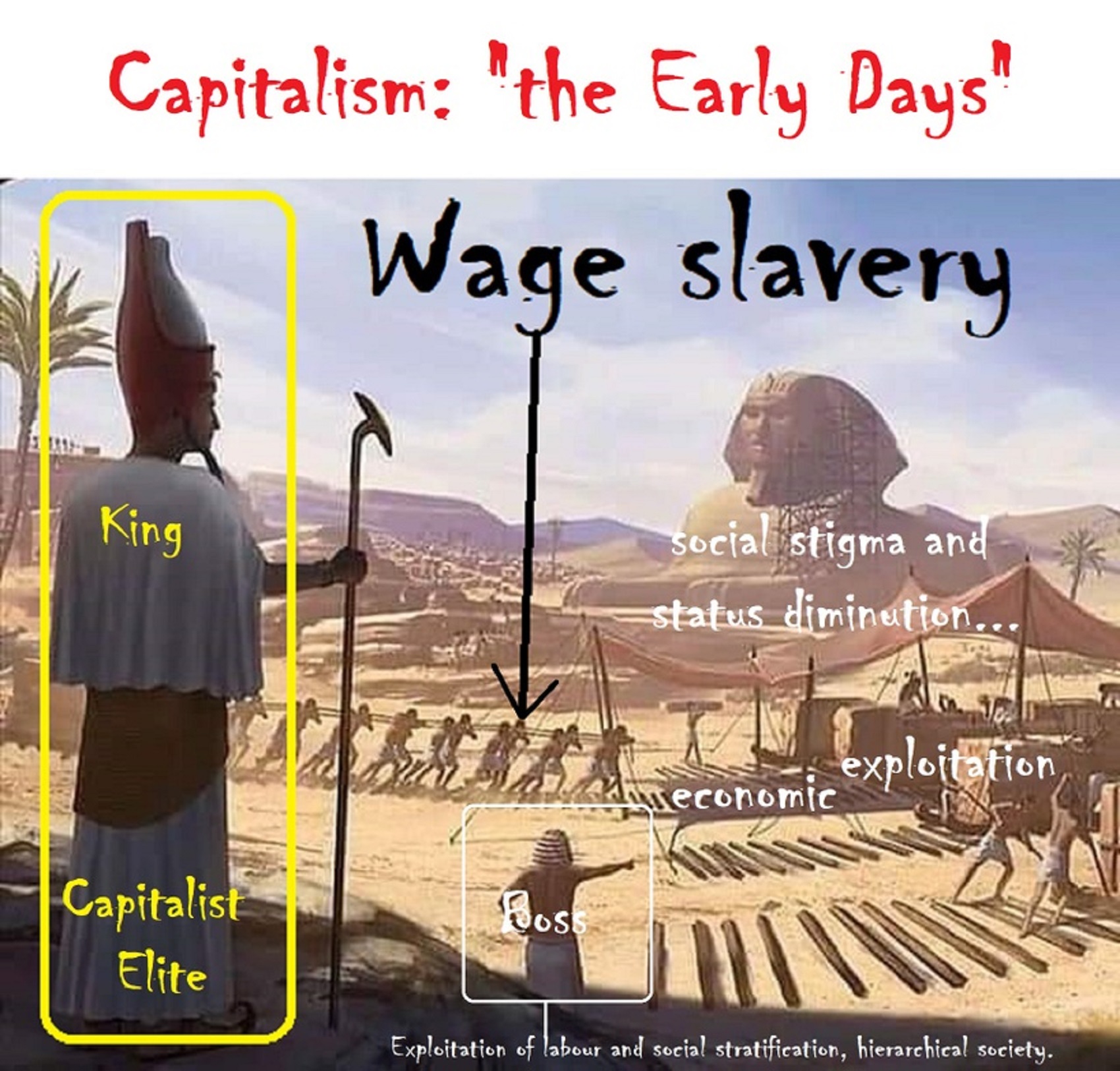
Wage Slavery
“Wage slavery is a term used to describe a situation where a person’s livelihood depends on wages or a salary, especially when the wages are low and the person has few realistic chances of upward mobility.” ref
“The term is sometimes used to criticize exploitation of labor and social stratification, with the former seen primarily as unequal bargaining power between labor and capital (particularly when workers are paid comparatively low wages, e.g. in sweatshops) and the latter as a lack of workers’ self-management, fulfilling job choices and leisure in an economy.” ref
“The criticism of social stratification covers a wider range of employment choices bound by the pressures of a hierarchical society to perform otherwise unfulfilling work that deprives humans of their “species character” not only under threat of starvation or poverty, but also of social stigma and status diminution. Historically, some socialist organizations and activists have espoused workers’ self-management or worker cooperatives as possible alternatives to wage labor.” ref
“Similarities between wage labor and slavery were noted as early as Cicero in Ancient Rome, such as in De Officiis. With the advent of the Industrial Revolution, thinkers such as Pierre-Joseph Proudhon and Karl Marx elaborated the comparison between wage labor and slavery, while Luddites emphasized the dehumanization brought about by machines. The introduction of wage labor in 18th-century Britain was met with resistance, giving rise to the principles of syndicalism and anarchism.” ref
“Before the American Civil War, Southern defenders of African American slavery invoked the concept of wage slavery to favorably compare the condition of their slaves to workers in the North. The United States abolished most forms of slavery after the Civil War, but labor union activists found the metaphor useful – according to historian Lawrence Glickman, in the Gilded Age “[r]eferences abounded in the labor press, and it is hard to find a speech by a labor leader without the phrase.” ref
The First Labor Strike in History?
“THE PROBLEM WAS THREE-FOLD: A LOSS OF LABOR FROM CASUALTIES IN WAR & THE EXPENSE IN REPELLING THE SEA PEOPLES, CORRUPT OFFICIALS, & POOR HARVESTS. OFFICIALS ORDERED PASTRIES DELIVERED TO THE STRIKING WORKERS & HOPED THEY WOULD BE SATISFIED & GO HOME.” ref
“For over 20 years Ramesses III had done his best for the people and, as he approached his 30th year, plans were set in motion for a grand jubilee festival to honor him. Egyptologist Toby Wilkinson notes:
The court now looked forward to the king’s thirty-year jubilee, determined to stage a celebration worthy of so glorious a monarch. There would be no stinting, no corners cut. Only the most lavish ceremonies would do. It was a fateful decision. Beneath the pomp and circumstance, the Egyptian state had been seriously weakened by its exertions. The military losses of 1178 were still keenly felt. Foreign trade with the Near East had never fully recovered from the Sea People‘s orgy of destruction. The temples’ coffers might be full of copper and myrrh, but their supplies of grain – the staple of the Egyptian economy – were gravely depleted. Against such a background, the jubilee preparations would prove a serious drain on resources. (334)” ref
“The troubles began in 1159 BCE, three years before the festival, when the monthly wages of the tomb-builders and artisans at Set-Ma’at (“The Place of Truth”, better known as Deir el-Medina) arrived almost a month late. The scribe Amennakht, who also seems to have served as a kind of shop steward, negotiated with local officials for the distribution of grain to the workers but this was only a temporary solution to an immediate problem; the underlying cause of the failure in payment was never addressed.” ref
“Instead of looking into what had gone wrong and trying to prevent it from happening again, officials dedicated themselves to preparation for the grand festival. The payment to the workers at Deir el-Medina was again late and then again late until, as Wilkinson writes, “the system of paying the necropolis workers broke down altogether, prompting the earliest recorded strikes in history” (335). The workers had waited for 18 days beyond their payday and refused to wait any longer. They lay down their tools and marched toward the city shouting “We are hungry!” They first demonstrated at Ramesses III’s mortuary temple and then staged a sit-in near the temple of Thutmose III.” ref
“The local officials had no idea how to deal with the situation; nothing like this had ever happened in the history of the country. Ma’at applied to everyone, from the king to the peasant, and everyone was expected to recognize his or her place in the scheme of the universe and act accordingly. Workers rising up and demanding their pay was quite simply an impossibility because it violated the principle of ma’at. With no understanding of how to deal with the problem, officials ordered pastries delivered to the striking workers and hoped they would be satisfied and go home.” ref
“The pastries were not enough, however, and the next day the men took over the southern gate of the Ramesseum, the central storehouse of grain in Thebes. Some broke into the inner rooms demanding their pay and the temple officials called the chief of police, a man named Montumes. Montumes told the strikers to leave the temple and return to their work but they refused. Helpless, Montumes withdrew and left the problem for the officials to resolve. The back pay was finally handed over after negotiations between the priest-officials and the strikers but no sooner had the men returned to their village than they discovered their next payment would not be coming.” ref
“Again the workers went on strike, this time taking over and blocking all access to the Valley of the Kings. The significance of this act was that no priests or family members of the deceased were able to enter with food and drink offerings for the dead and this was considered a serious offense to the memory of those who had passed on to the afterlife. When officials appeared with armed guards and threatened to remove the men by force, a striker responded that he would damage the royal tombs before they could move against him and so the two sides were stalemated.” ref
“By this time the men were no longer simply striking over the late payments but what they saw as a serious breach of ma’at. The king was supposed to take care of his people and that meant making sure that officials who oversaw payments did so correctly and in a timely manner. It was now going on three years since the strikes first started and the situation had not changed: the workers would not receive their pay, they would then go on strike, the officials would find the means to pay them, and the same scenario would be repeated again the next month. The tomb-workers and artisans claimed that injustice of the highest order was being perpetrated and they wanted that situation addressed.” ref
“The local government, however, still had no understanding of how to handle the problem. It was their responsibility to maintain order and, especially with the jubilee coming up, keep the peace and uphold the dignity of pharaoh. They could not send official word to the capital that the workers of Thebes refused to do their jobs or they could possibly face execution for failing to do their duty; so they did nothing. In keeping with the traditions of the culture, they should have sent word to the vizier who would then have looked into and corrected the problem. The vizier did, in fact, come to Thebes at about this time in order to collect statues for the jubilee celebration but there is no indication he was told anything about the striking workers.” ref
“The jubilee in 1156 BCE or 3,177 years ago was a great success and, as at all festivals, the participants forgot about their daily troubles with dancing and drink. The problem did not go away, however, and the workers continued their strikes and their struggle for fair payment in the following months. At last some sort of resolution seems to have been reached whereby officials were able to make payments to the workers on time but the dynamic of the relationship between temple officials and workers had changed – as had the practical application of the concept of ma’at – and these would never really revert to their former understandings again. Ma’at was the responsibility of the pharaoh to oversee and maintain, not the workers; and yet the men of Deir el-Medina had taken it upon themselves to correct what they saw as a breach in the policies which helped to maintain essential harmony and balance. The common people had been forced to assume the responsibilities of the king.” ref
Significance
“The strikes of the tomb-workers and artisans were especially influential because these men were among the highest paid and most respected in the country. If they could be treated this poorly, the reasoning went, then others should expect even worse. The influence of the strikes was also so great because these workers had the most to lose, were all very aware of the principle of ma’at and their duty to it, and yet chose to stand up against a governmental practice which they felt was unjust. What began as a complaint over late wages turned into an action protesting corruption and injustice. Toward the end of their strikes the workers were no longer chanting about their hunger but about the larger issue:
We have gone on strike not from hunger but because we have a serious accusation to make: bad things have been done in this place of Pharaoh. (Wilkinson, 337)” ref
“The success of the tomb-worker/artisan strikes inspired others to do the same. Just as the official records of the battle with the Sea Peoples never recorded the Egyptian losses in the land battle, neither do they record any mention of the strikes. The record of the strike comes from a papyrus scroll discovered at Deir el-Medina and most probably written by the scribe Amennakht. The precedent of workers walking away from their jobs was set by these events and, although there are no extant official reports of other similar events, workers now understood they had more power than previously thought. Strikes are mentioned in the latter part of the New Kingdom and Late Period and there is no doubt the practice began with the workers at Deir el-Medina in the time of Ramesses III.” ref


I have forgotten more than some learn in a lifetime. I am quite skilled in prehistory facts and the understanding of it all or at least a shit lot. So much I am like a human “Cognitive Dissidence” creator, I know so much about prehistory, it nearly takes people’s breath away.

I am a rationalist, not a skeptic. I appeal to reason, not doubt, like most atheists. No “skepticism attack” tactics used on others atheists works on me, as I don’t even value skepticism.

While hallucinogens are associated with shamanism, it is alcohol that is associated with paganism.
The Atheist-Humanist-Leftist Revolutionaries Shows in the prehistory series:
Show two: Pre-animism 300,000 years old and animism 100,000 years old: related to “Anarchism and Socialism”
Show tree: Totemism 50,000 years old: related to “Anarchism and Socialism”
Show four: Shamanism 30,000 years old: related to “Anarchism and Socialism”
Show five: Paganism 12,000 years old: related to “Anarchism and Socialism”
Show six: Emergence of hierarchy, sexism, slavery, and the new male god dominance: Paganism 7,000-5,000 years old: related to “Anarchism and Socialism” (Capitalism) (World War 0) Elite and their slaves!
Prehistory: related to “Anarchism and Socialism” the division of labor, power, rights, and recourses: VIDEO
Pre-animism 300,000 years old and animism 100,000 years old: related to “Anarchism and Socialism”: VIDEO
Totemism 50,000 years old: related to “Anarchism and Socialism”: VIDEO
Shamanism 30,000 years old: related to “Anarchism and Socialism”: VIDEO
Paganism 12,000 years old: related to “Anarchism and Socialism” (Pre-Capitalism): VIDEO
Paganism 7,000-5,000 years old: related to “Anarchism and Socialism” (Capitalism) (World War 0) Elite and their slaves: VIEDO
Paganism 5,000 years old: progressed organized religion and the state: related to “Anarchism and Socialism” (Kings and the Rise of the State): VIEDO
Paganism 4,000 years old: related to “Anarchism and Socialism” (First Moralistic gods, then the Origin time of Monotheism): VIEDO
I do not hate simply because I challenge and expose myths or lies any more than others being thought of as loving simply because of the protection and hiding from challenge their favored myths or lies.
The truth is best championed in the sunlight of challenge.
An archaeologist once said to me “Damien religion and culture are very different”
My response, So are you saying that was always that way, such as would you say Native Americans’ cultures are separate from their religions? And do you think it always was the way you believe?
I had said that religion was a cultural product. That is still how I see it and there are other archaeologists that think close to me as well. Gods too are the myths of cultures that did not understand science or the world around them, seeing magic/supernatural everywhere.
I personally think there is a goddess and not enough evidence to support a male god at Çatalhöyük but if there was both a male and female god and goddess then I know the kind of gods they were like Proto-Indo-European mythology.
This series idea was addressed in, Anarchist Teaching as Free Public Education or Free Education in the Public: VIDEO
Our 12 video series: Organized Oppression: Mesopotamian State Force and the Politics of power (9,000-4,000 years ago), is adapted from: The Complete and Concise History of the Sumerians and Early Bronze Age Mesopotamia (7000-2000 BC): https://www.youtube.com/watch?v=szFjxmY7jQA by “History with Cy“
Show #1: Mesopotamian State Force and the Politics of Power (Samarra, Halaf, Ubaid)
Show #2: Mesopotamian State Force and the Politics of Power (Eridu “Tell Abu Shahrain”)
Show #3: Mesopotamian State Force and the Politics of Power (Uruk and the First Cities)
Show #4: Mesopotamian State Force and the Politics of Power (First Kings)
Show #5: Mesopotamian State Force and the Politics of Power (Early Dynastic Period)
Show #6: Mesopotamian State Force and the Politics of Power (King/Ruler Lugalzagesi)
Show #7: Mesopotamian State Force and the Politics of Power (Sargon and Akkadian Rule)
Show #9: Mesopotamian State Force and the Politics of Power (Gudea of Lagash and Utu-hegal)
Show #12: Mesopotamian State Force and the Politics of Power (Aftermath and Legacy of Sumer)

The “Atheist-Humanist-Leftist Revolutionaries”
Cory Johnston ☭ Ⓐ Atheist Leftist @Skepticallefty & I (Damien Marie AtHope) @AthopeMarie (my YouTube & related blog) are working jointly in atheist, antitheist, antireligionist, antifascist, anarchist, socialist, and humanist endeavors in our videos together, generally, every other Saturday.
Why Does Power Bring Responsibility?
Think, how often is it the powerless that start wars, oppress others, or commit genocide? So, I guess the question is to us all, to ask, how can power not carry responsibility in a humanity concept? I know I see the deep ethical responsibility that if there is power their must be a humanistic responsibility of ethical and empathic stewardship of that power. Will I be brave enough to be kind? Will I possess enough courage to be compassionate? Will my valor reach its height of empathy? I as everyone, earns our justified respect by our actions, that are good, ethical, just, protecting, and kind. Do I have enough self-respect to put my love for humanity’s flushing, over being brought down by some of its bad actors? May we all be the ones doing good actions in the world, to help human flourishing.
I create the world I want to live in, striving for flourishing. Which is not a place but a positive potential involvement and promotion; a life of humanist goal precision. To master oneself, also means mastering positive prosocial behaviors needed for human flourishing. I may have lost a god myth as an atheist, but I am happy to tell you, my friend, it is exactly because of that, leaving the mental terrorizer, god belief, that I truly regained my connected ethical as well as kind humanity.
Cory and I will talk about prehistory and theism, addressing the relevance to atheism, anarchism, and socialism.
At the same time as the rise of the male god, 7,000 years ago, there was also the very time there was the rise of violence, war, and clans to kingdoms, then empires, then states. It is all connected back to 7,000 years ago, and it moved across the world.
Cory Johnston: https://damienmarieathope.com/2021/04/cory-johnston-mind-of-a-skeptical-leftist/?v=32aec8db952d
The Mind of a Skeptical Leftist (YouTube)
Cory Johnston: Mind of a Skeptical Leftist @Skepticallefty
The Mind of a Skeptical Leftist By Cory Johnston: “Promoting critical thinking, social justice, and left-wing politics by covering current events and talking to a variety of people. Cory Johnston has been thoughtfully talking to people and attempting to promote critical thinking, social justice, and left-wing politics.” http://anchor.fm/skepticalleft
Cory needs our support. We rise by helping each other.
Cory Johnston ☭ Ⓐ @Skepticallefty Evidence-based atheist leftist (he/him) Producer, host, and co-host of 4 podcasts @skeptarchy @skpoliticspod and @AthopeMarie
Damien Marie AtHope (“At Hope”) Axiological Atheist, Anti-theist, Anti-religionist, Secular Humanist. Rationalist, Writer, Artist, Poet, Philosopher, Advocate, Activist, Psychology, and Armchair Archaeology/Anthropology/Historian.
Damien is interested in: Freedom, Liberty, Justice, Equality, Ethics, Humanism, Science, Atheism, Antiteism, Antireligionism, Ignosticism, Left-Libertarianism, Anarchism, Socialism, Mutualism, Axiology, Metaphysics, LGBTQI, Philosophy, Advocacy, Activism, Mental Health, Psychology, Archaeology, Social Work, Sexual Rights, Marriage Rights, Woman’s Rights, Gender Rights, Child Rights, Secular Rights, Race Equality, Ageism/Disability Equality, Etc. And a far-leftist, “Anarcho-Humanist.”
With religion, it is like your brain is in a noose, squeezing out any hope of critical thinking about religious beliefs. Leaving the victim faith-drunk as if all the oxygen of their mental freedom is cut off and hope for self-mastery is but some far away fantasy out of reach.
My Thought on the Evolution of Gods?
Animal protector deities from old totems/spirit animal beliefs come first to me, 13,000/12,000 years ago, then women as deities 11,000/10,000 years ago, then male gods around 7,000/8,000 years ago. Moralistic gods around 5,000/4,000 years ago, and monotheistic gods around 4,000/3,000 years ago.

Damien Marie AtHope’s Art
Damien Marie AtHope (Said as “At” “Hope”)/(Autodidact Polymath but not good at math):
Axiological Atheist, Anti-theist, Anti-religionist, Secular Humanist, Rationalist, Writer, Artist, Jeweler, Poet, “autodidact” Philosopher, schooled in Psychology, and “autodidact” Armchair Archaeology/Anthropology/Pre-Historian (Knowledgeable in the range of: 1 million to 5,000/4,000 years ago). I am an anarchist socialist politically. Reasons for or Types of Atheism
My Website, My Blog, & Short-writing or Quotes, My YouTube, Twitter: @AthopeMarie, and My Email: damien.marie.athope@gmail.com



